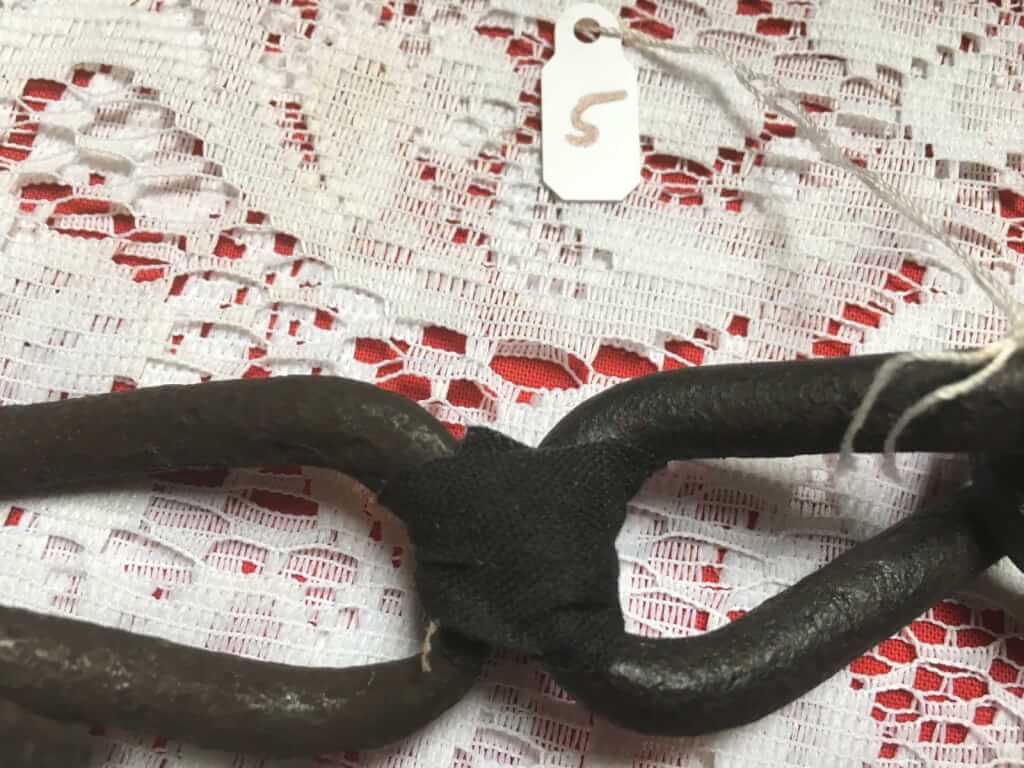-

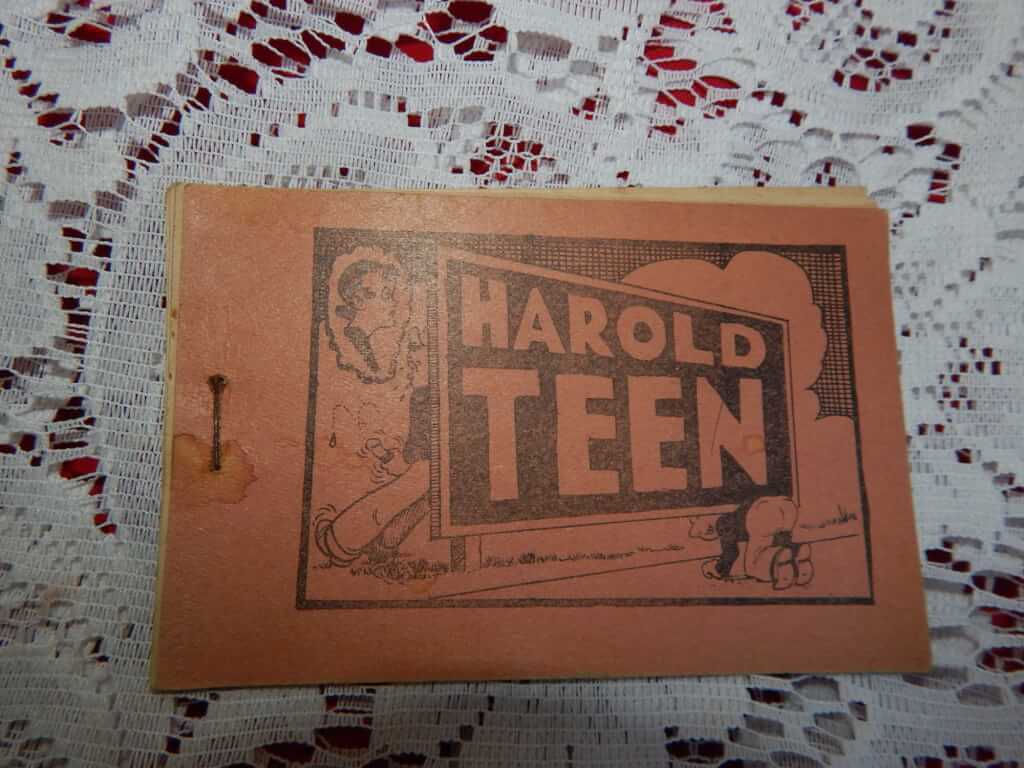 Harold Teen, (n.p. n.d.) 4.5" x 3", 8pp. pamphlet, stapled Tijuana bibles (also known as eight-pagers, bluesies, gray-backs, Jiggs-and-Maggie books, jo-jo books, Tillie-and-Mac books, and two-by-fours) were little pornographic comic books produced in the United States from the 1920s to the early 1960s.
Harold Teen, (n.p. n.d.) 4.5" x 3", 8pp. pamphlet, stapled Tijuana bibles (also known as eight-pagers, bluesies, gray-backs, Jiggs-and-Maggie books, jo-jo books, Tillie-and-Mac books, and two-by-fours) were little pornographic comic books produced in the United States from the 1920s to the early 1960s. -
Out of stock
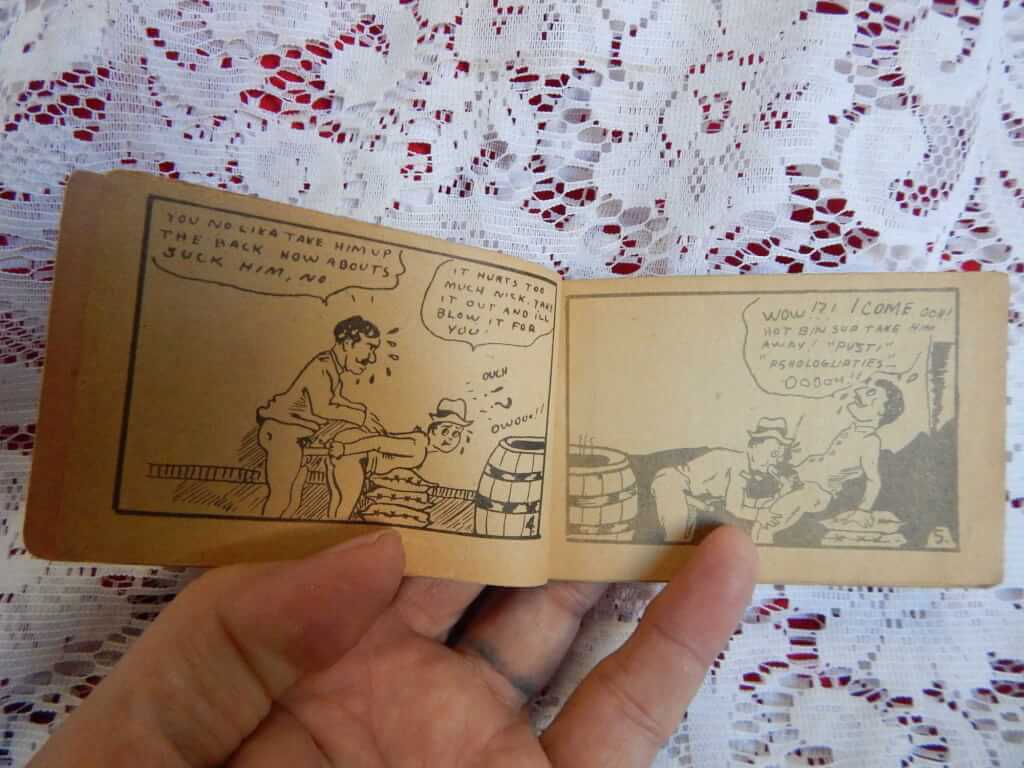
 Harold Teen, (n.p. n.d.) 4.5" x 3", 8pp. pamphlet, stapled Tijuana bibles (also known as eight-pagers, bluesies, gray-backs, Jiggs-and-Maggie books, jo-jo books, Tillie-and-Mac books, and two-by-fours) were little pornographic comic books produced in the United States from the 1920s to the early 1960s.
Harold Teen, (n.p. n.d.) 4.5" x 3", 8pp. pamphlet, stapled Tijuana bibles (also known as eight-pagers, bluesies, gray-backs, Jiggs-and-Maggie books, jo-jo books, Tillie-and-Mac books, and two-by-fours) were little pornographic comic books produced in the United States from the 1920s to the early 1960s. -
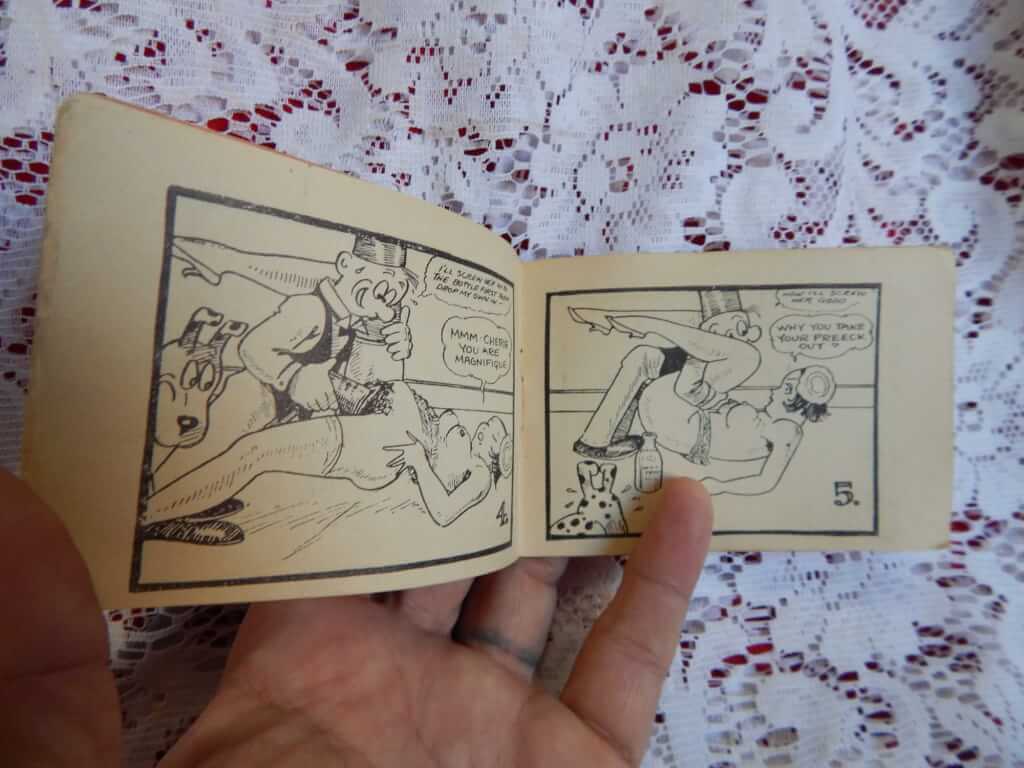
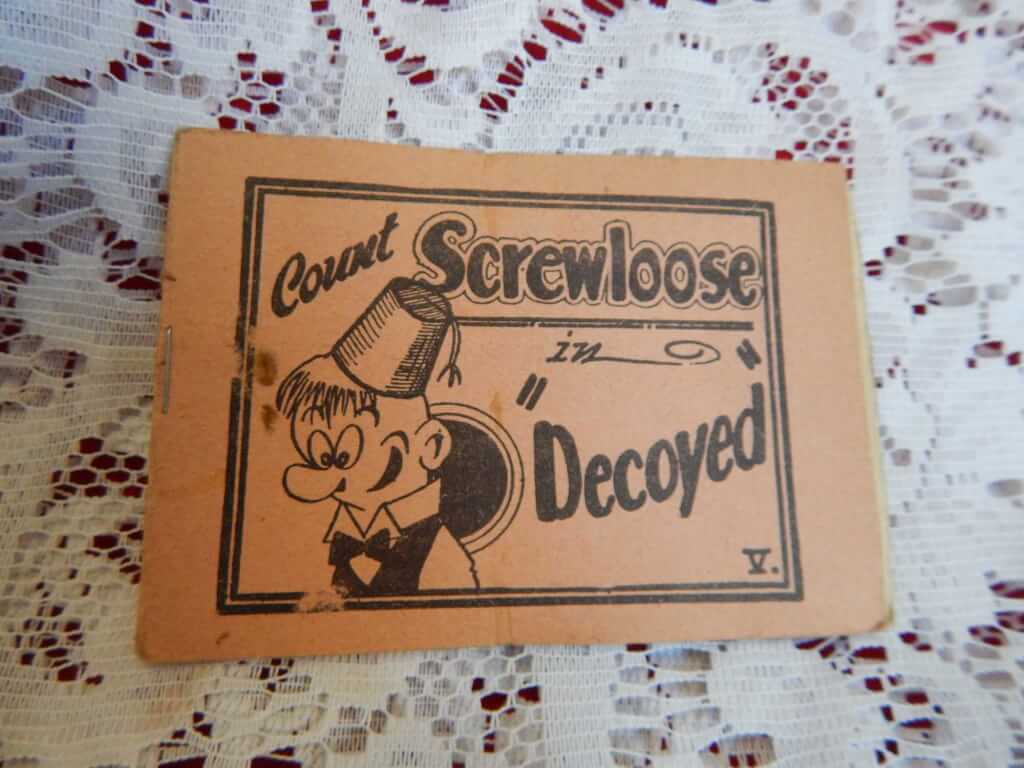 Count Screwloose in "Decoyed", (n.p. n.d.) 4.5" x 3", 8pp. pamphlet, stapled Tijuana bibles (also known as eight-pagers, bluesies, gray-backs, Jiggs-and-Maggie books, jo-jo books, Tillie-and-Mac books, and two-by-fours) were little pornographic comic books produced in the United States from the 1920s to the early 1960s.
Count Screwloose in "Decoyed", (n.p. n.d.) 4.5" x 3", 8pp. pamphlet, stapled Tijuana bibles (also known as eight-pagers, bluesies, gray-backs, Jiggs-and-Maggie books, jo-jo books, Tillie-and-Mac books, and two-by-fours) were little pornographic comic books produced in the United States from the 1920s to the early 1960s. -
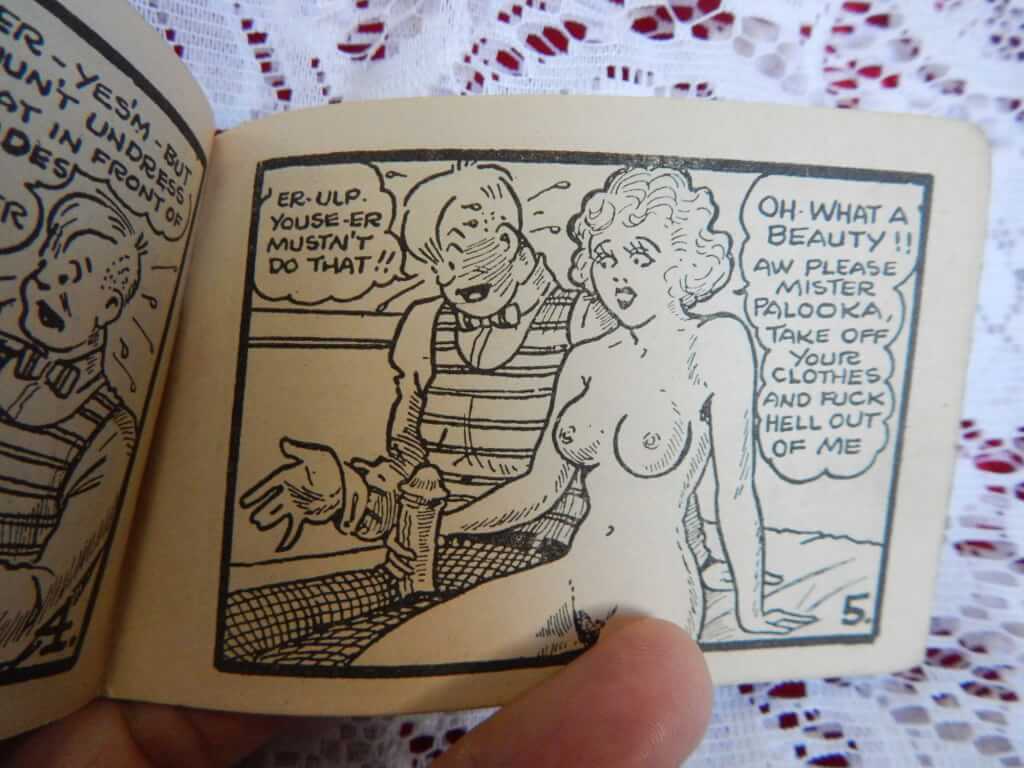
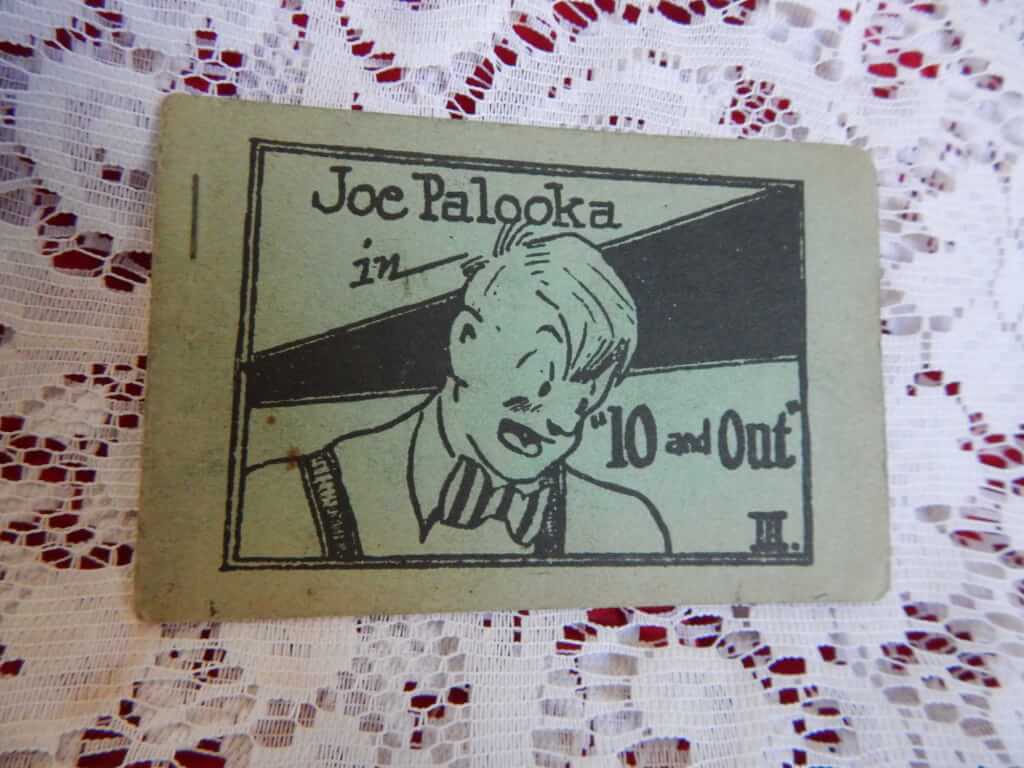 Joe Palooka in "10 and Out", (n.p. n.d.) 4.5" x 3", 8pp. pamphlet, stapled Tijuana bibles (also known as eight-pagers, bluesies, gray-backs, Jiggs-and-Maggie books, jo-jo books, Tillie-and-Mac books, and two-by-fours) were little pornographic comic books produced in the United States from the 1920s to the early 1960s.
Joe Palooka in "10 and Out", (n.p. n.d.) 4.5" x 3", 8pp. pamphlet, stapled Tijuana bibles (also known as eight-pagers, bluesies, gray-backs, Jiggs-and-Maggie books, jo-jo books, Tillie-and-Mac books, and two-by-fours) were little pornographic comic books produced in the United States from the 1920s to the early 1960s. -
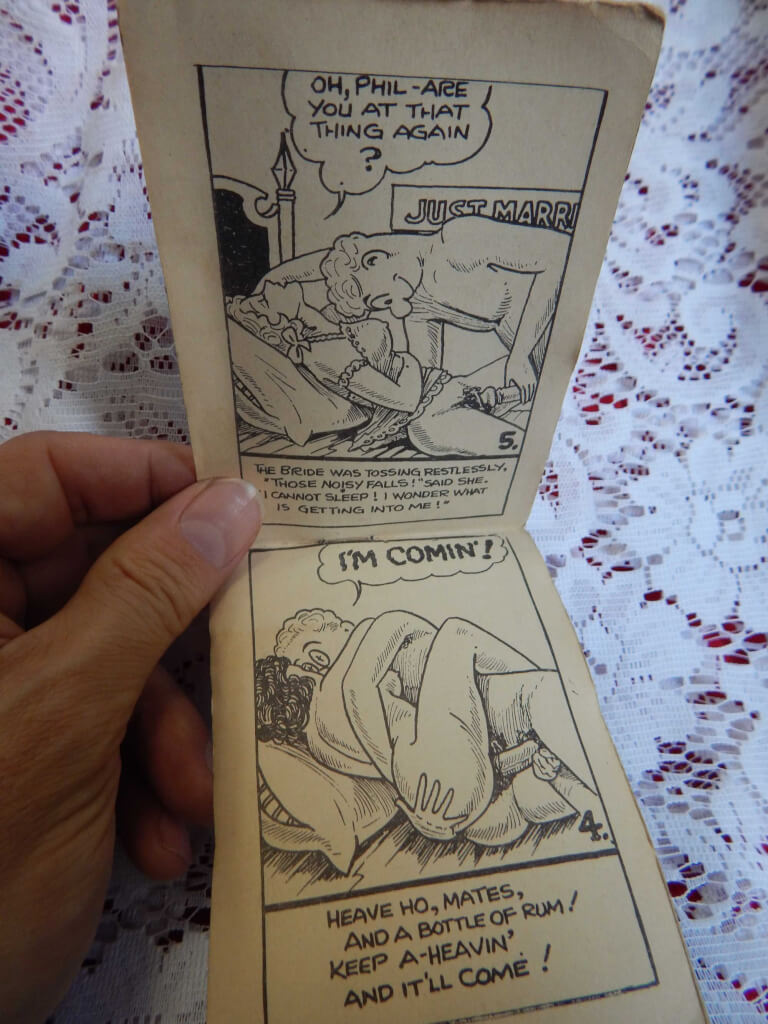
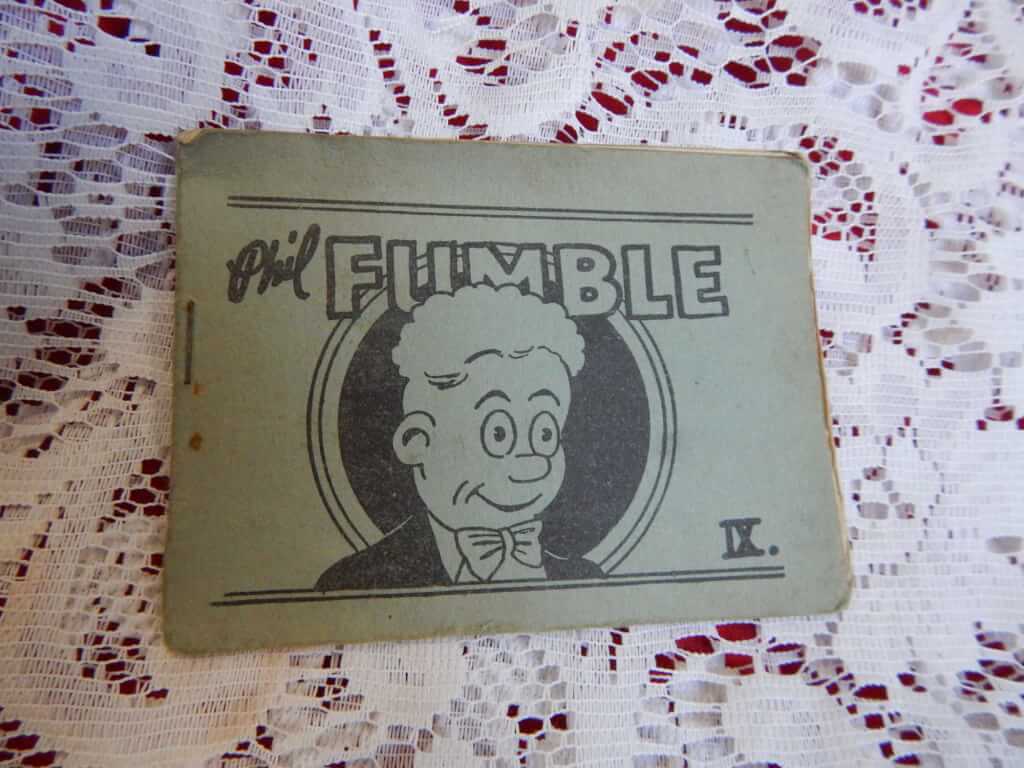 Phil Fumble, (n.p. n.d.) 4.5" x 3", 8pp. pamphlet, stapled Tijuana bibles (also known as eight-pagers, bluesies, gray-backs, Jiggs-and-Maggie books, jo-jo books, Tillie-and-Mac books, and two-by-fours) were little pornographic comic books produced in the United States from the 1920s to the early 1960s.
Phil Fumble, (n.p. n.d.) 4.5" x 3", 8pp. pamphlet, stapled Tijuana bibles (also known as eight-pagers, bluesies, gray-backs, Jiggs-and-Maggie books, jo-jo books, Tillie-and-Mac books, and two-by-fours) were little pornographic comic books produced in the United States from the 1920s to the early 1960s. -
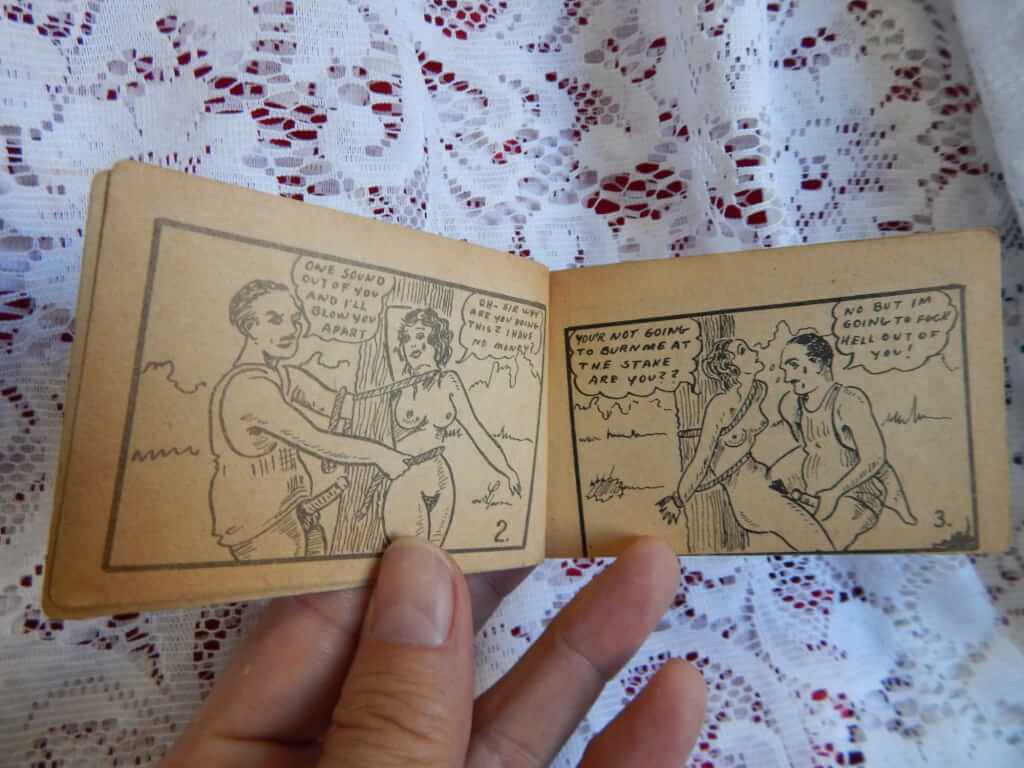
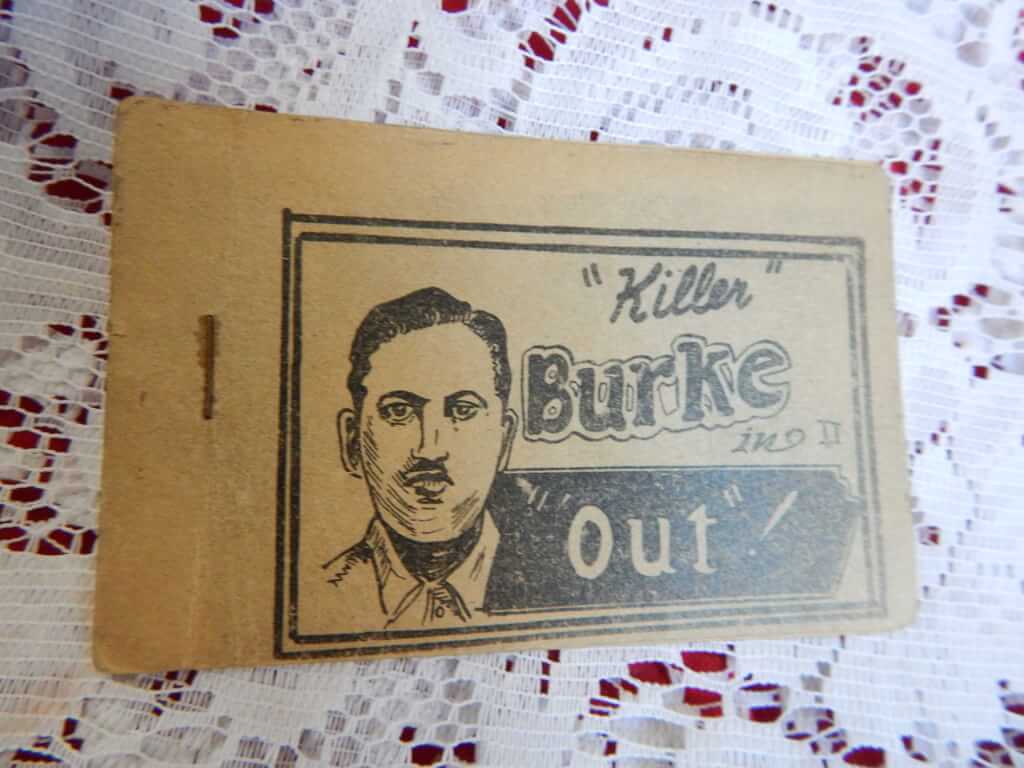 "Killer" Burke in "Out", (n.p. n.d.) 4.5" x 3", 8pp. pamphlet, stapled Tijuana bibles (also known as eight-pagers, bluesies, gray-backs, Jiggs-and-Maggie books, jo-jo books, Tillie-and-Mac books, and two-by-fours) were little pornographic comic books produced in the United States from the 1920s to the early 1960s.
"Killer" Burke in "Out", (n.p. n.d.) 4.5" x 3", 8pp. pamphlet, stapled Tijuana bibles (also known as eight-pagers, bluesies, gray-backs, Jiggs-and-Maggie books, jo-jo books, Tillie-and-Mac books, and two-by-fours) were little pornographic comic books produced in the United States from the 1920s to the early 1960s. -
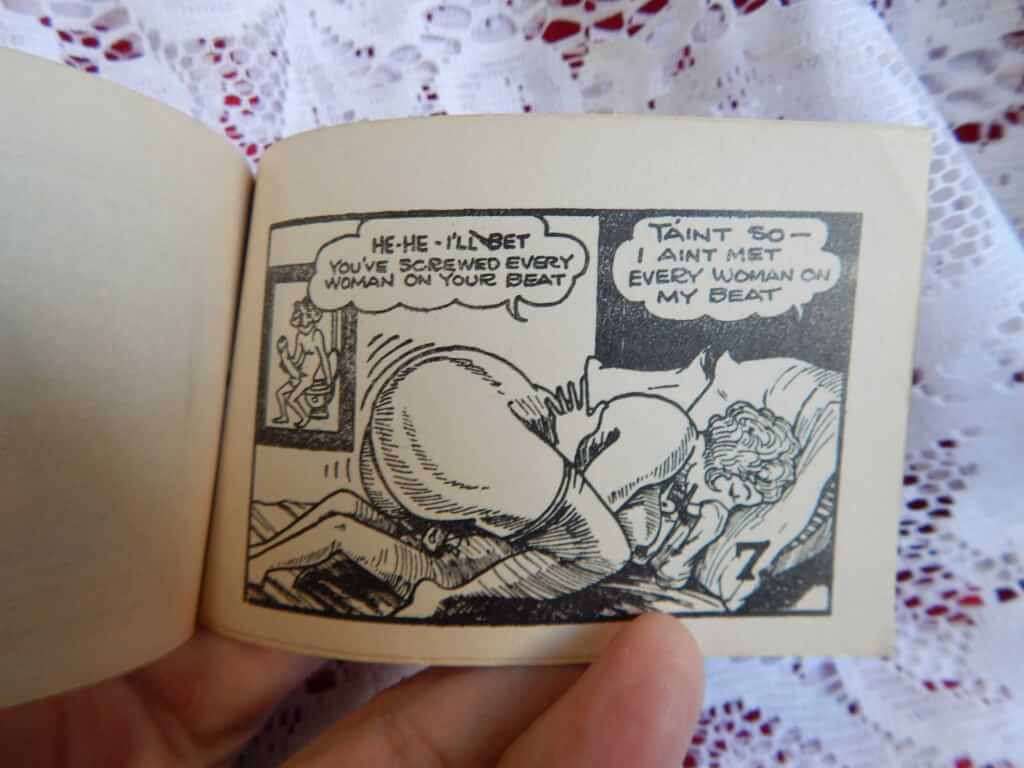
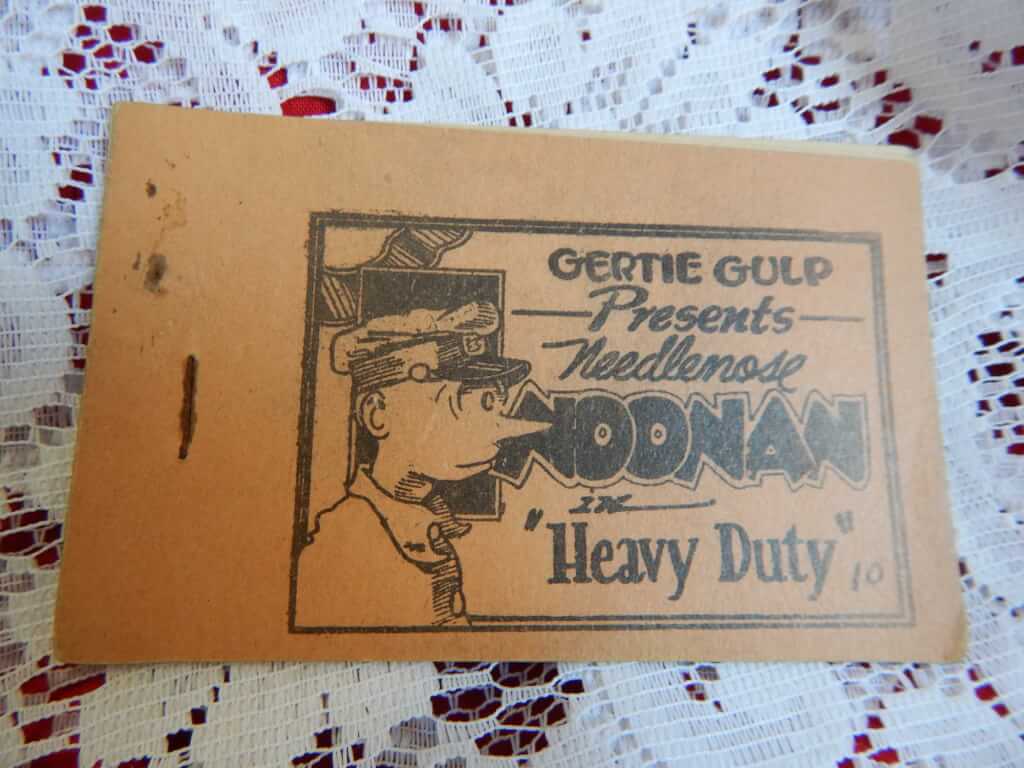 Gertie Gulp presents Needlenose Noonan in "Heavy Duty", (n.p. n.d.) 4.5" x 3", 8pp. pamphlet, stapled Tijuana bibles (also known as eight-pagers, bluesies, gray-backs, Jiggs-and-Maggie books, jo-jo books, Tillie-and-Mac books, and two-by-fours) were little pornographic comic books produced in the United States from the 1920s to the early 1960s.
Gertie Gulp presents Needlenose Noonan in "Heavy Duty", (n.p. n.d.) 4.5" x 3", 8pp. pamphlet, stapled Tijuana bibles (also known as eight-pagers, bluesies, gray-backs, Jiggs-and-Maggie books, jo-jo books, Tillie-and-Mac books, and two-by-fours) were little pornographic comic books produced in the United States from the 1920s to the early 1960s. -

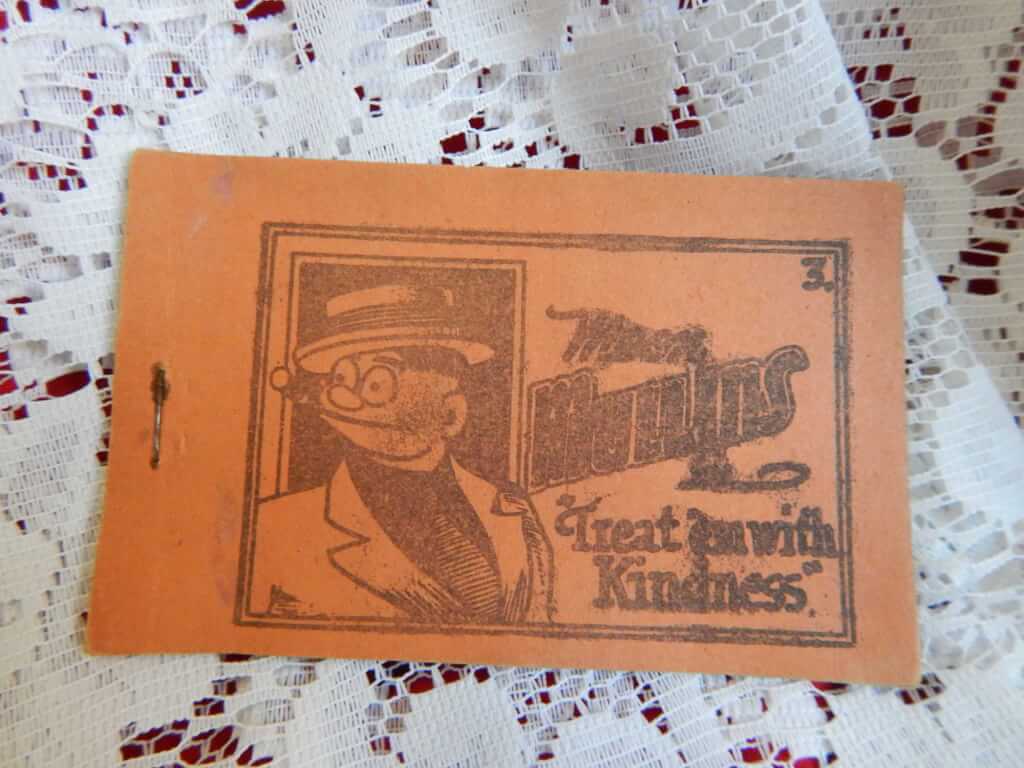 Moon Mullins in "Treat 'em with Kindness", (n.p. n.d.) 4.5" x 3", 8pp. pamphlet, stapled Tijuana bibles (also known as eight-pagers, bluesies, gray-backs, Jiggs-and-Maggie books, jo-jo books, Tillie-and-Mac books, and two-by-fours) were little pornographic comic books produced in the United States from the 1920s to the early 1960s.
Moon Mullins in "Treat 'em with Kindness", (n.p. n.d.) 4.5" x 3", 8pp. pamphlet, stapled Tijuana bibles (also known as eight-pagers, bluesies, gray-backs, Jiggs-and-Maggie books, jo-jo books, Tillie-and-Mac books, and two-by-fours) were little pornographic comic books produced in the United States from the 1920s to the early 1960s. -
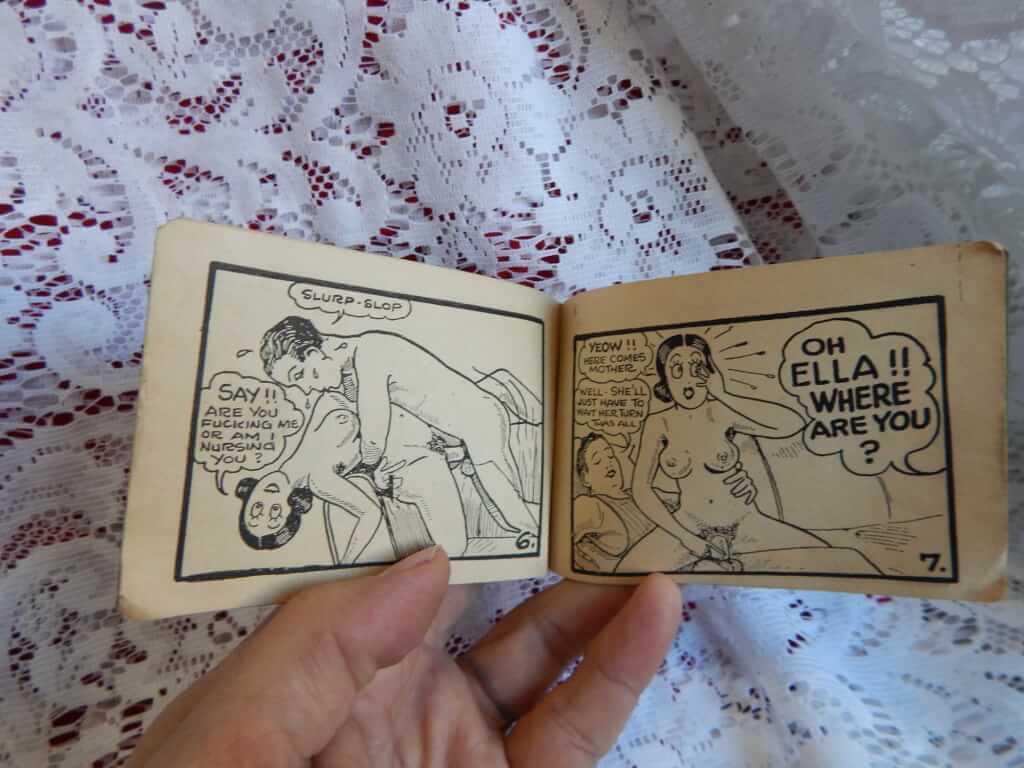
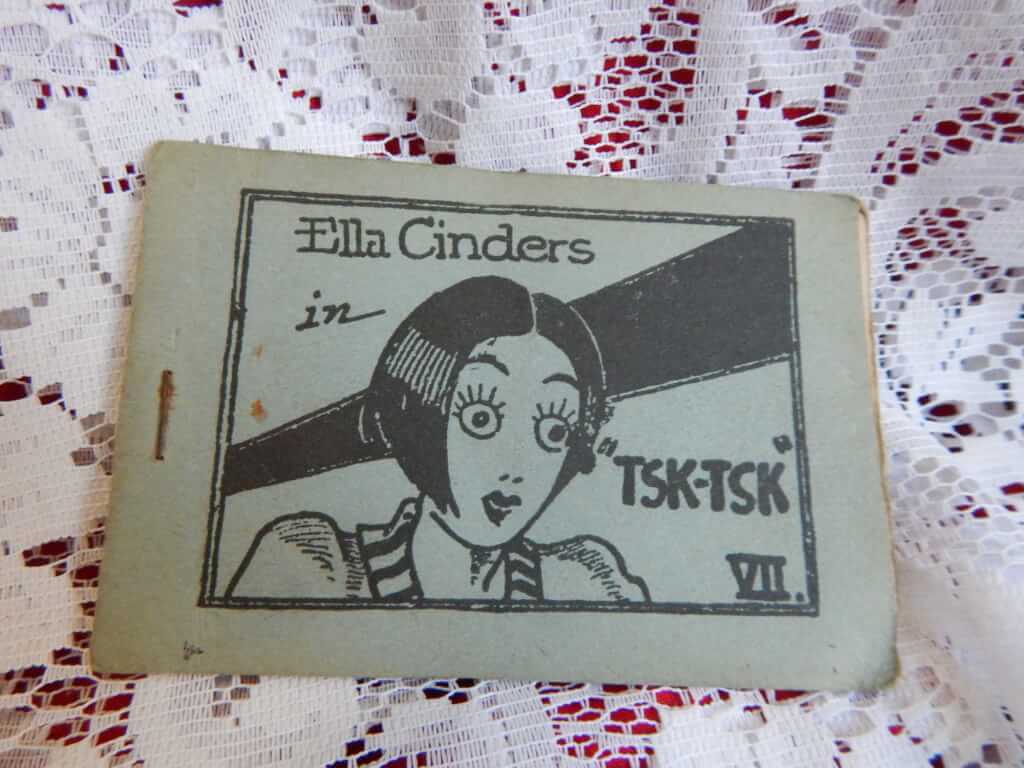 Ella Cinders in "Tsk-Tsk", (n.p. n.d.) 4.5" x 3", 8pp. pamphlet, stapled Tijuana bibles (also known as eight-pagers, bluesies, gray-backs, Jiggs-and-Maggie books, jo-jo books, Tillie-and-Mac books, and two-by-fours) were little pornographic comic books produced in the United States from the 1920s to the early 1960s.
Ella Cinders in "Tsk-Tsk", (n.p. n.d.) 4.5" x 3", 8pp. pamphlet, stapled Tijuana bibles (also known as eight-pagers, bluesies, gray-backs, Jiggs-and-Maggie books, jo-jo books, Tillie-and-Mac books, and two-by-fours) were little pornographic comic books produced in the United States from the 1920s to the early 1960s. -
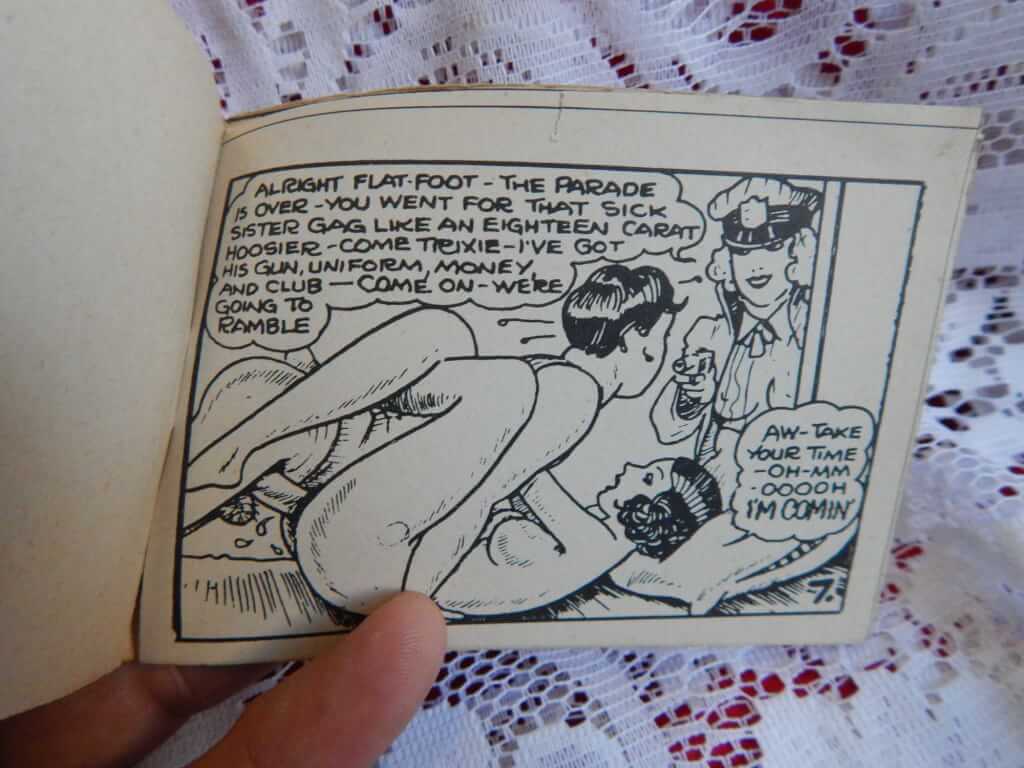
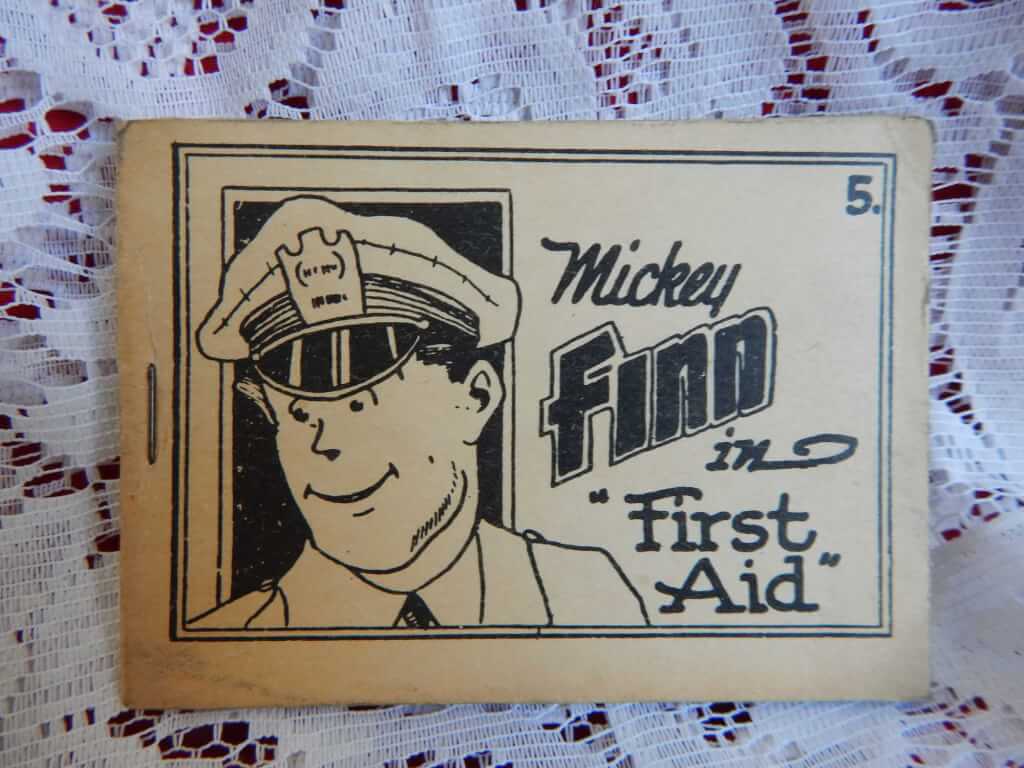 Mickey Finn in "First Aid", (n.p. n.d.) 4.5" x 3", 8pp. pamphlet, stapled Tijuana bibles (also known as eight-pagers, bluesies, gray-backs, Jiggs-and-Maggie books, jo-jo books, Tillie-and-Mac books, and two-by-fours) were little pornographic comic books produced in the United States from the 1920s to the early 1960s.
Mickey Finn in "First Aid", (n.p. n.d.) 4.5" x 3", 8pp. pamphlet, stapled Tijuana bibles (also known as eight-pagers, bluesies, gray-backs, Jiggs-and-Maggie books, jo-jo books, Tillie-and-Mac books, and two-by-fours) were little pornographic comic books produced in the United States from the 1920s to the early 1960s. -

 Smiling Jack in "A Forced Landing", (n.p. n.d.) 4.5" x 3", 8pp. pamphlet, stapled Tijuana bibles (also known as eight-pagers, bluesies, gray-backs, Jiggs-and-Maggie books, jo-jo books, Tillie-and-Mac books, and two-by-fours) were little pornographic comic books produced in the United States from the 1920s to the early 1960s.
Smiling Jack in "A Forced Landing", (n.p. n.d.) 4.5" x 3", 8pp. pamphlet, stapled Tijuana bibles (also known as eight-pagers, bluesies, gray-backs, Jiggs-and-Maggie books, jo-jo books, Tillie-and-Mac books, and two-by-fours) were little pornographic comic books produced in the United States from the 1920s to the early 1960s. -

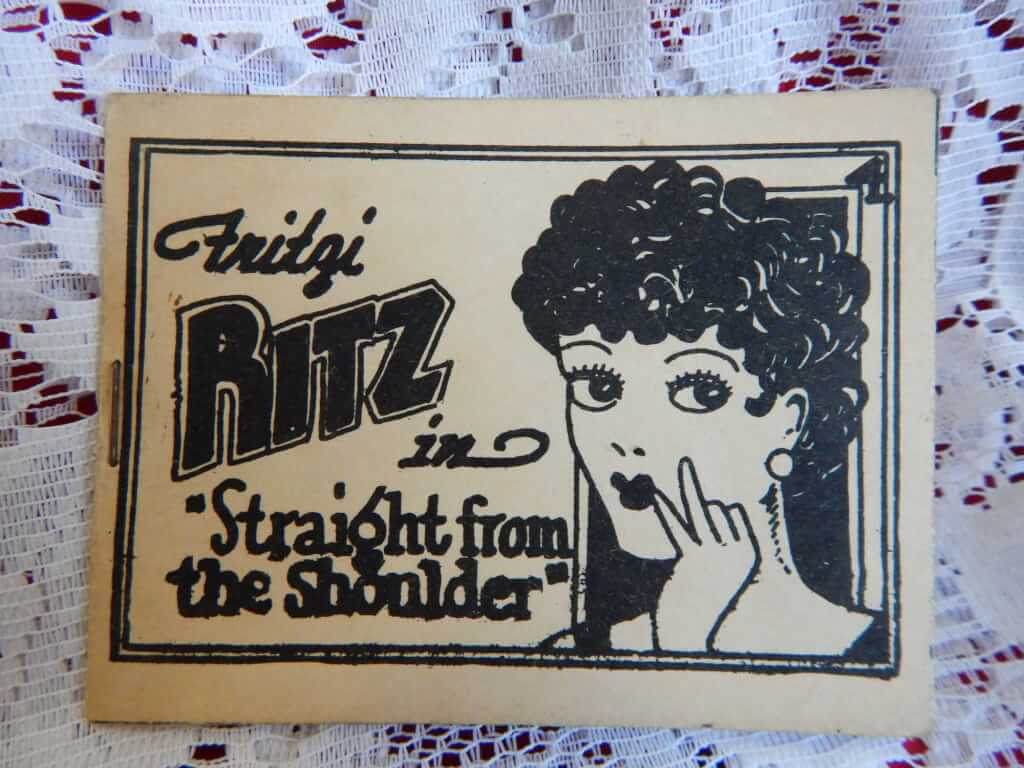 Fritzi Ritz in "Straight from the Shoulder", (n.p. n.d.) 4.5" x 3", 8pp. pamphlet, stapled, pages loose Tijuana bibles (also known as eight-pagers, bluesies, gray-backs, Jiggs-and-Maggie books, jo-jo books, Tillie-and-Mac books, and two-by-fours) were little pornographic comic books produced in the United States from the 1920s to the early 1960s.
Fritzi Ritz in "Straight from the Shoulder", (n.p. n.d.) 4.5" x 3", 8pp. pamphlet, stapled, pages loose Tijuana bibles (also known as eight-pagers, bluesies, gray-backs, Jiggs-and-Maggie books, jo-jo books, Tillie-and-Mac books, and two-by-fours) were little pornographic comic books produced in the United States from the 1920s to the early 1960s. -
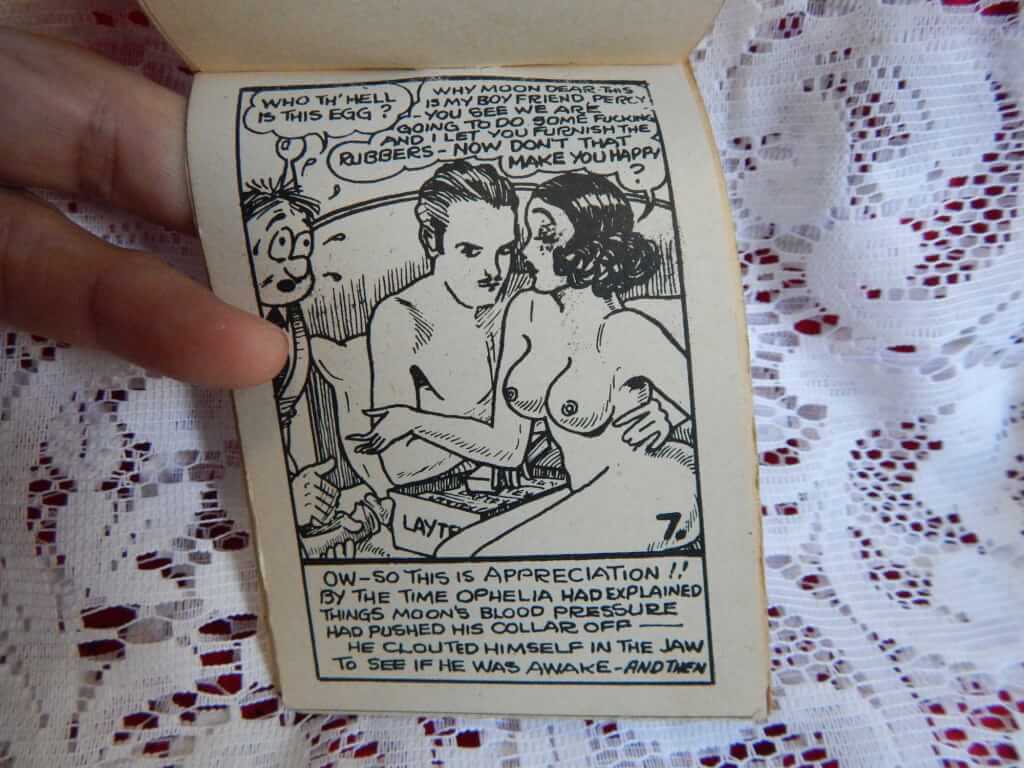
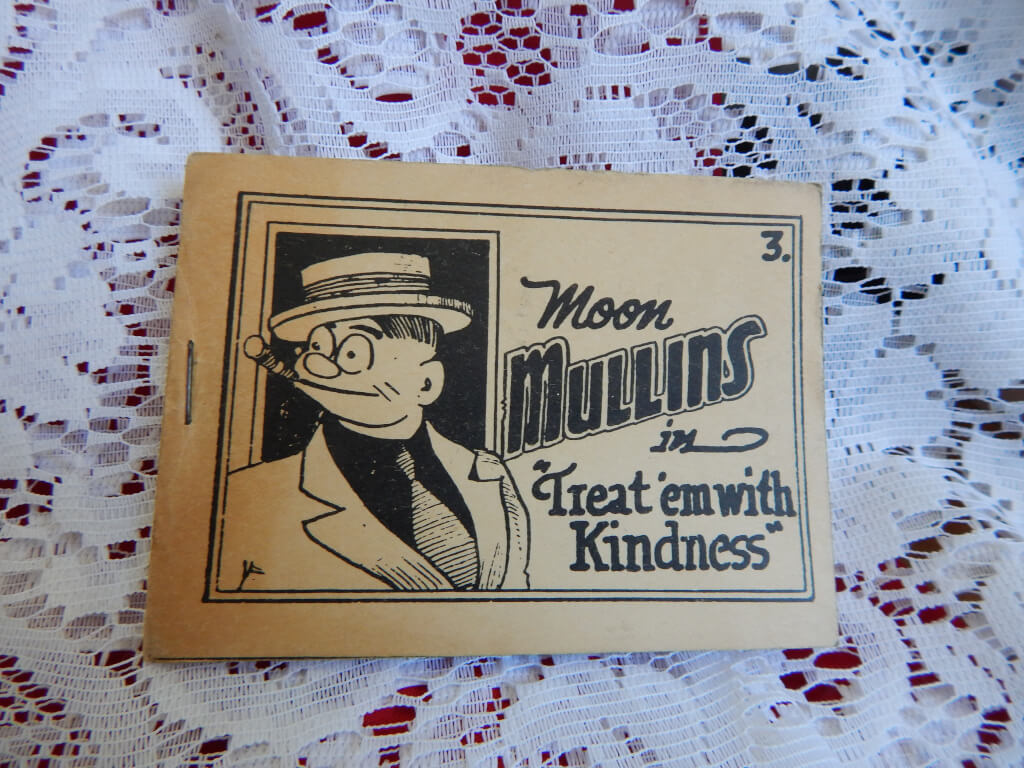 Moon Mullins in "Treat 'em with Kindness", (n.p. n.d.) 4.5" x 3", 8pp. pamphlet, stapled Tijuana bibles (also known as eight-pagers, bluesies, gray-backs, Jiggs-and-Maggie books, jo-jo books, Tillie-and-Mac books, and two-by-fours) were little pornographic comic books produced in the United States from the 1920s to the early 1960s.
Moon Mullins in "Treat 'em with Kindness", (n.p. n.d.) 4.5" x 3", 8pp. pamphlet, stapled Tijuana bibles (also known as eight-pagers, bluesies, gray-backs, Jiggs-and-Maggie books, jo-jo books, Tillie-and-Mac books, and two-by-fours) were little pornographic comic books produced in the United States from the 1920s to the early 1960s. -

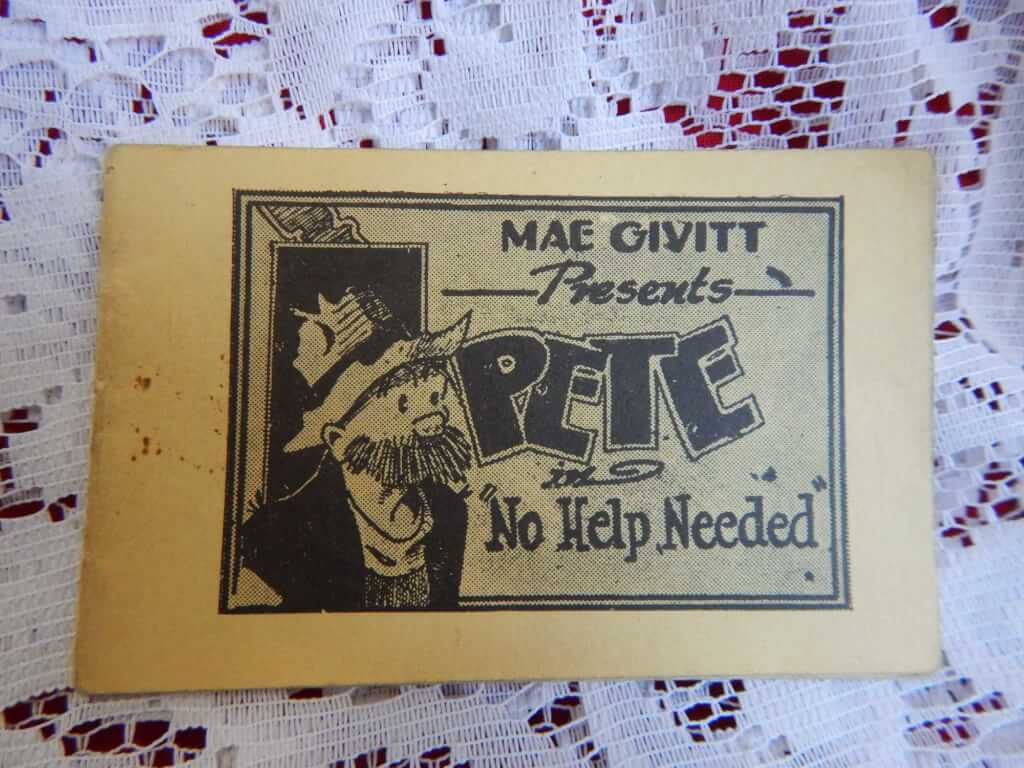 Mae Givitt presents Pete in "No Help Needed", (n.p. n.d.) 4.5" x 3", 8pp. pamphlet, stapled Tijuana bibles (also known as eight-pagers, bluesies, gray-backs, Jiggs-and-Maggie books, jo-jo books, Tillie-and-Mac books, and two-by-fours) were little pornographic comic books produced in the United States from the 1920s to the early 1960s.
Mae Givitt presents Pete in "No Help Needed", (n.p. n.d.) 4.5" x 3", 8pp. pamphlet, stapled Tijuana bibles (also known as eight-pagers, bluesies, gray-backs, Jiggs-and-Maggie books, jo-jo books, Tillie-and-Mac books, and two-by-fours) were little pornographic comic books produced in the United States from the 1920s to the early 1960s. -
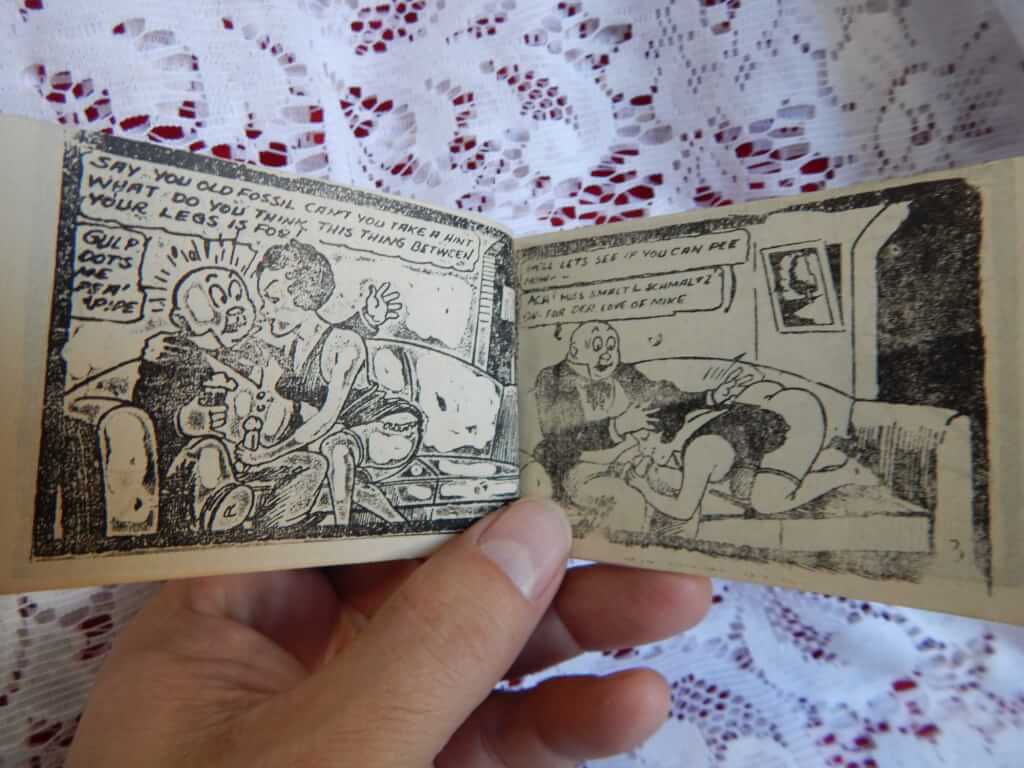
 Dingle Hoofer and his Dog Aolph, (n.p. n.d.) 4.5" x 3", 8pp. pamphlet, stapled, cover detatched Tijuana bibles (also known as eight-pagers, bluesies, gray-backs, Jiggs-and-Maggie books, jo-jo books, Tillie-and-Mac books, and two-by-fours) were little pornographic comic books produced in the United States from the 1920s to the early 1960s.
Dingle Hoofer and his Dog Aolph, (n.p. n.d.) 4.5" x 3", 8pp. pamphlet, stapled, cover detatched Tijuana bibles (also known as eight-pagers, bluesies, gray-backs, Jiggs-and-Maggie books, jo-jo books, Tillie-and-Mac books, and two-by-fours) were little pornographic comic books produced in the United States from the 1920s to the early 1960s. -
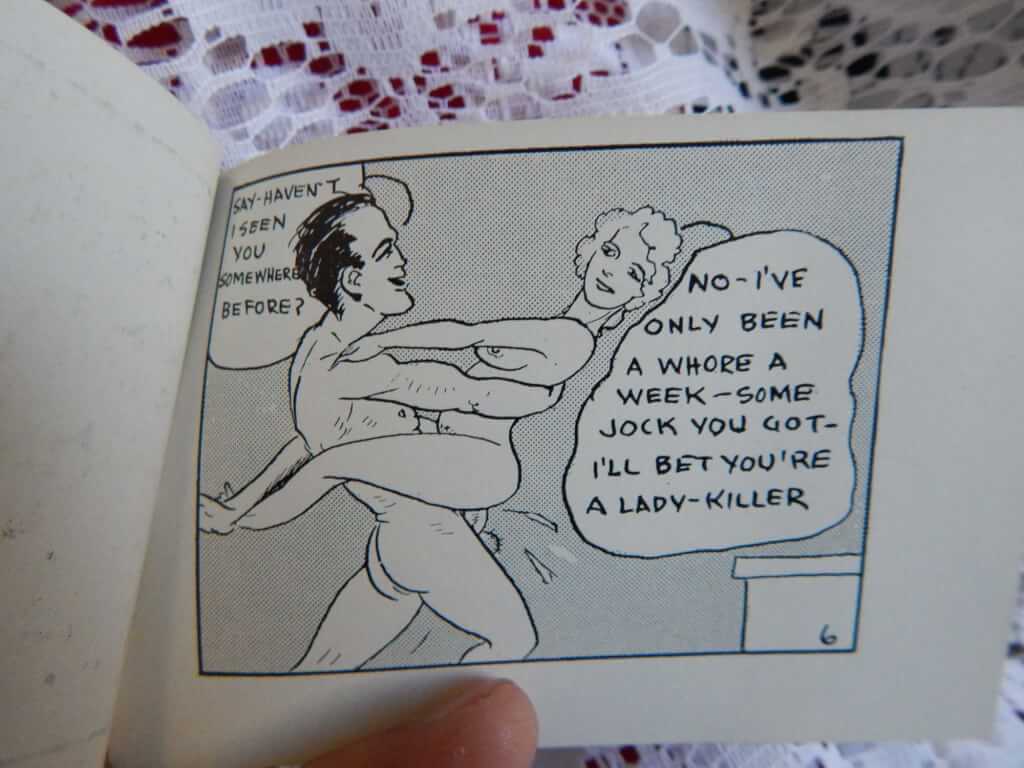
 Way out West with the fucking Tiger, A Bungstopper production, (n.p. n.d.) 4.5" x 3", 8pp. pamphlet, stapled Tijuana bibles (also known as eight-pagers, bluesies, gray-backs, Jiggs-and-Maggie books, jo-jo books, Tillie-and-Mac books, and two-by-fours) were little pornographic comic books produced in the United States from the 1920s to the early 1960s.
Way out West with the fucking Tiger, A Bungstopper production, (n.p. n.d.) 4.5" x 3", 8pp. pamphlet, stapled Tijuana bibles (also known as eight-pagers, bluesies, gray-backs, Jiggs-and-Maggie books, jo-jo books, Tillie-and-Mac books, and two-by-fours) were little pornographic comic books produced in the United States from the 1920s to the early 1960s. -

 The Frigidaire Salesman, (n.p. n.d.) 4.5" x 3", 8pp. pamphlet, stapled Tijuana bibles (also known as eight-pagers, bluesies, gray-backs, Jiggs-and-Maggie books, jo-jo books, Tillie-and-Mac books, and two-by-fours) were little pornographic comic books produced in the United States from the 1920s to the early 1960s.
The Frigidaire Salesman, (n.p. n.d.) 4.5" x 3", 8pp. pamphlet, stapled Tijuana bibles (also known as eight-pagers, bluesies, gray-backs, Jiggs-and-Maggie books, jo-jo books, Tillie-and-Mac books, and two-by-fours) were little pornographic comic books produced in the United States from the 1920s to the early 1960s. -
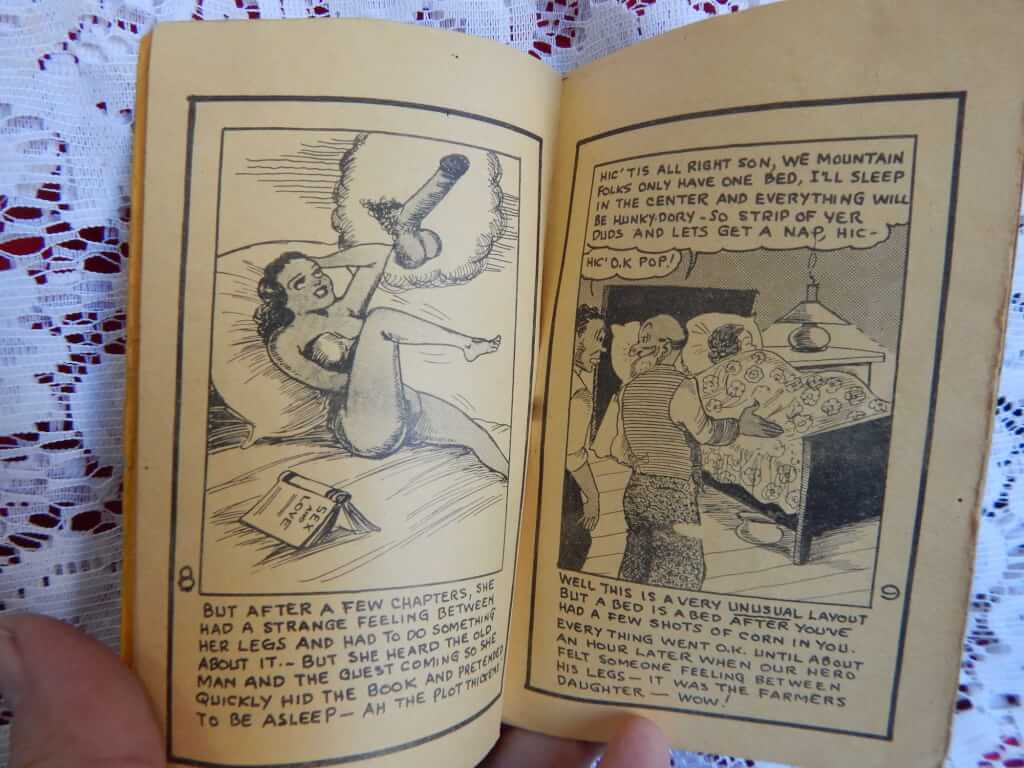
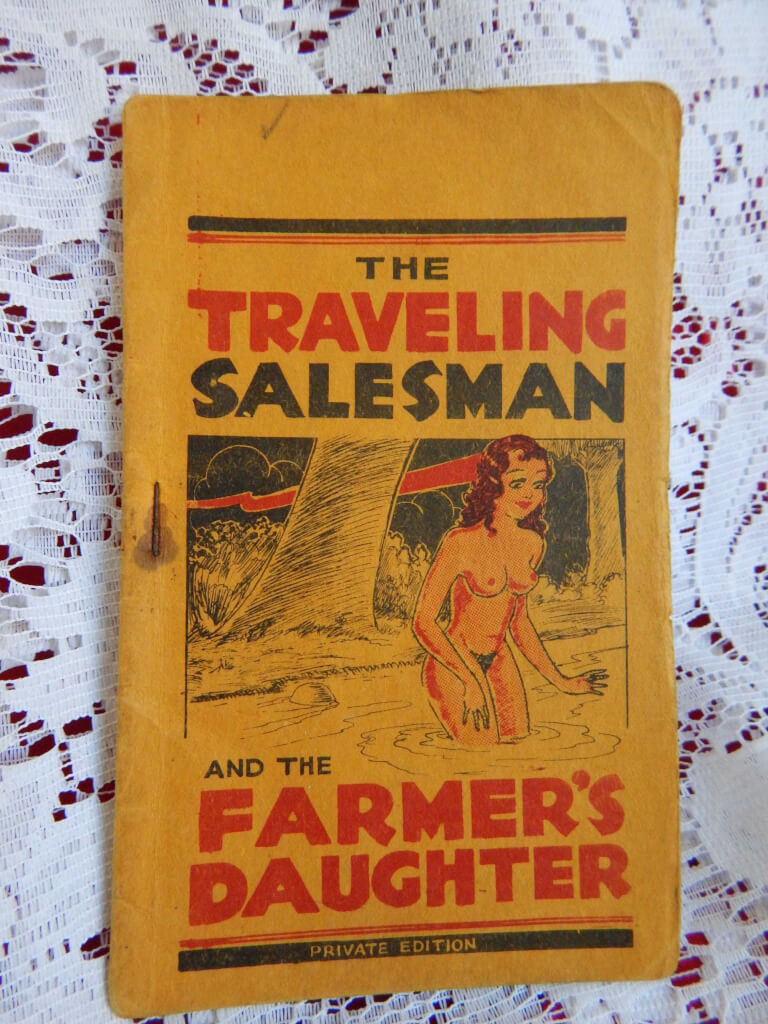 The Traveling Salesman and the Farmer's Daughter, (stated "Published by Fartgold Bros., Pokemyass, NY, 1935") 3.25" x 6", 16pp. pamphlet, stapled In the style of a "Tijuana bible" but larger and with 16 pages (instead of the traditional 8). Cover art and back cover in black and red. Tijuana bibles (also known as eight-pagers, bluesies, gray-backs, Jiggs-and-Maggie books, jo-jo books, Tillie-and-Mac books, and two-by-fours) were little pornographic comic books produced in the United States from the 1920s to the early 1960s.
The Traveling Salesman and the Farmer's Daughter, (stated "Published by Fartgold Bros., Pokemyass, NY, 1935") 3.25" x 6", 16pp. pamphlet, stapled In the style of a "Tijuana bible" but larger and with 16 pages (instead of the traditional 8). Cover art and back cover in black and red. Tijuana bibles (also known as eight-pagers, bluesies, gray-backs, Jiggs-and-Maggie books, jo-jo books, Tillie-and-Mac books, and two-by-fours) were little pornographic comic books produced in the United States from the 1920s to the early 1960s. -
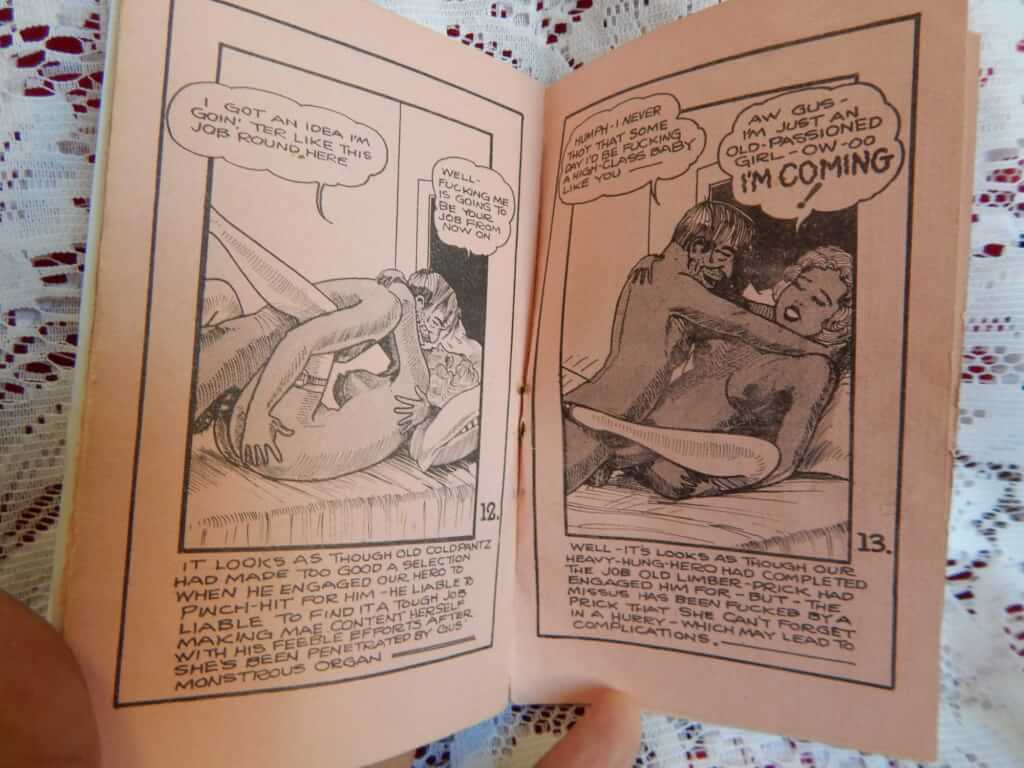
 Mae West and Will Rogers in "The Sod-Buster", (np. nd.) 3.25" x 6", 16pp. pamphlet, stapled In the style of a "Tijuana bible" but larger and with 16 pages (instead of the traditional 8). Cover art and back cover in black and red. Tijuana bibles (also known as eight-pagers, bluesies, gray-backs, Jiggs-and-Maggie books, jo-jo books, Tillie-and-Mac books, and two-by-fours) were little pornographic comic books produced in the United States from the 1920s to the early 1960s.
Mae West and Will Rogers in "The Sod-Buster", (np. nd.) 3.25" x 6", 16pp. pamphlet, stapled In the style of a "Tijuana bible" but larger and with 16 pages (instead of the traditional 8). Cover art and back cover in black and red. Tijuana bibles (also known as eight-pagers, bluesies, gray-backs, Jiggs-and-Maggie books, jo-jo books, Tillie-and-Mac books, and two-by-fours) were little pornographic comic books produced in the United States from the 1920s to the early 1960s. -
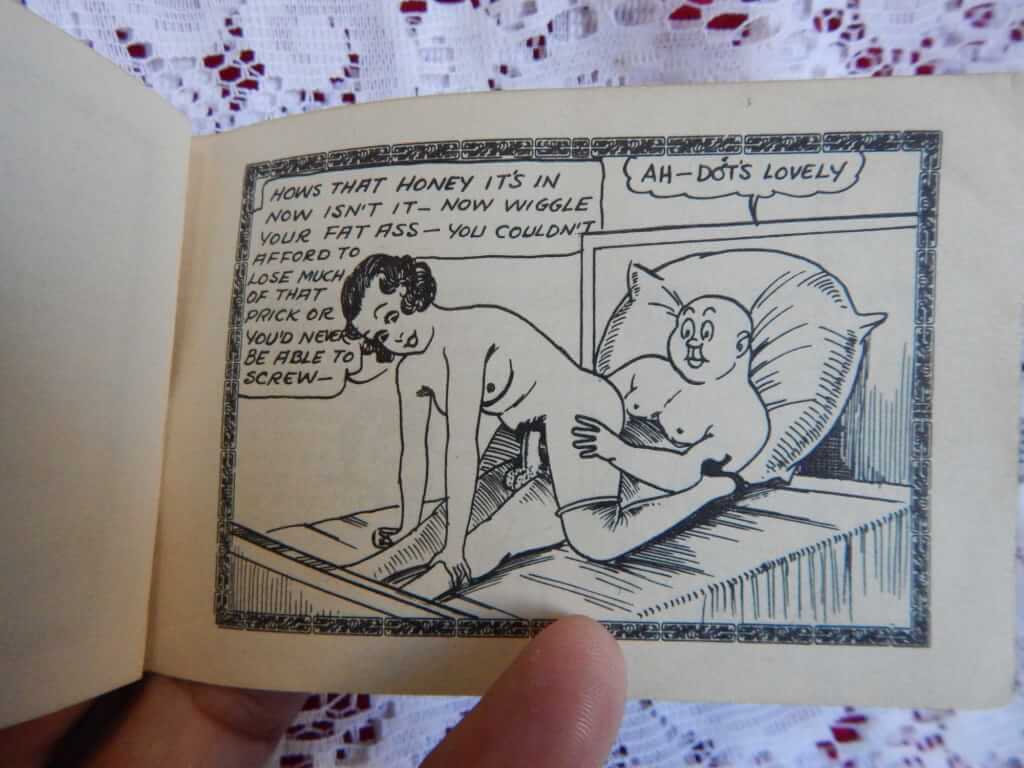
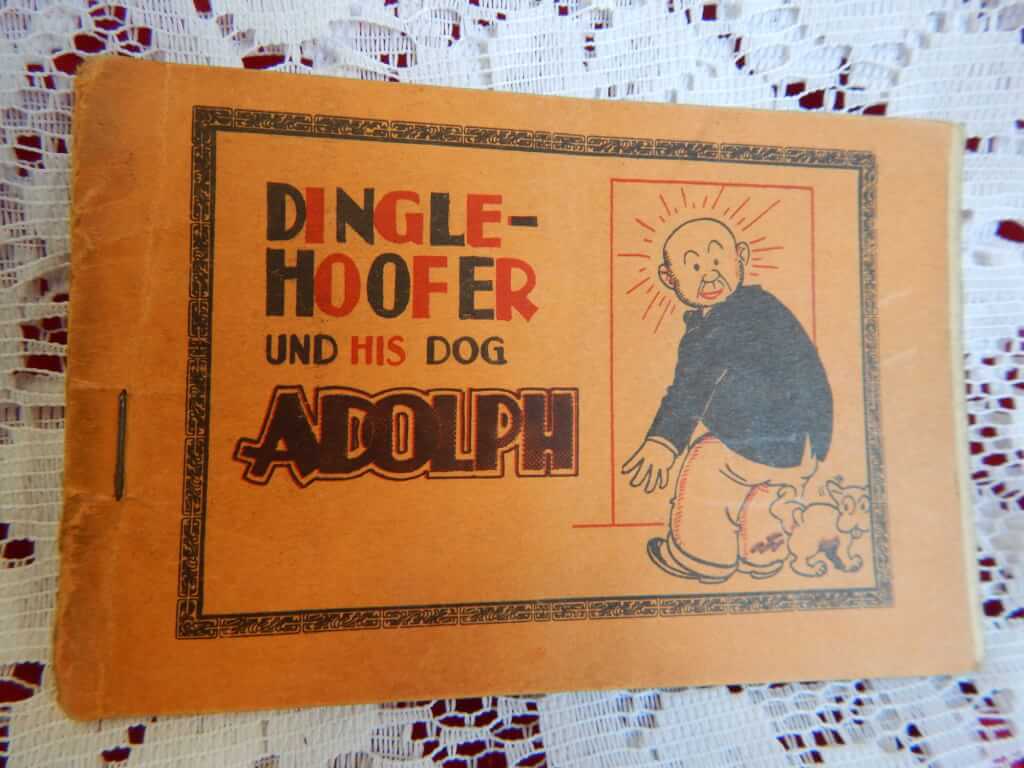 Dingle-Hoofer und his dog Adolph, (np. nd.) 4.5" x 3", 8pp. pamphlet, stapled Tijuana bibles (also known as eight-pagers, bluesies, gray-backs, Jiggs-and-Maggie books, jo-jo books, Tillie-and-Mac books, and two-by-fours) were little pornographic comic books produced in the United States from the 1920s to the early 1960s.
Dingle-Hoofer und his dog Adolph, (np. nd.) 4.5" x 3", 8pp. pamphlet, stapled Tijuana bibles (also known as eight-pagers, bluesies, gray-backs, Jiggs-and-Maggie books, jo-jo books, Tillie-and-Mac books, and two-by-fours) were little pornographic comic books produced in the United States from the 1920s to the early 1960s. -

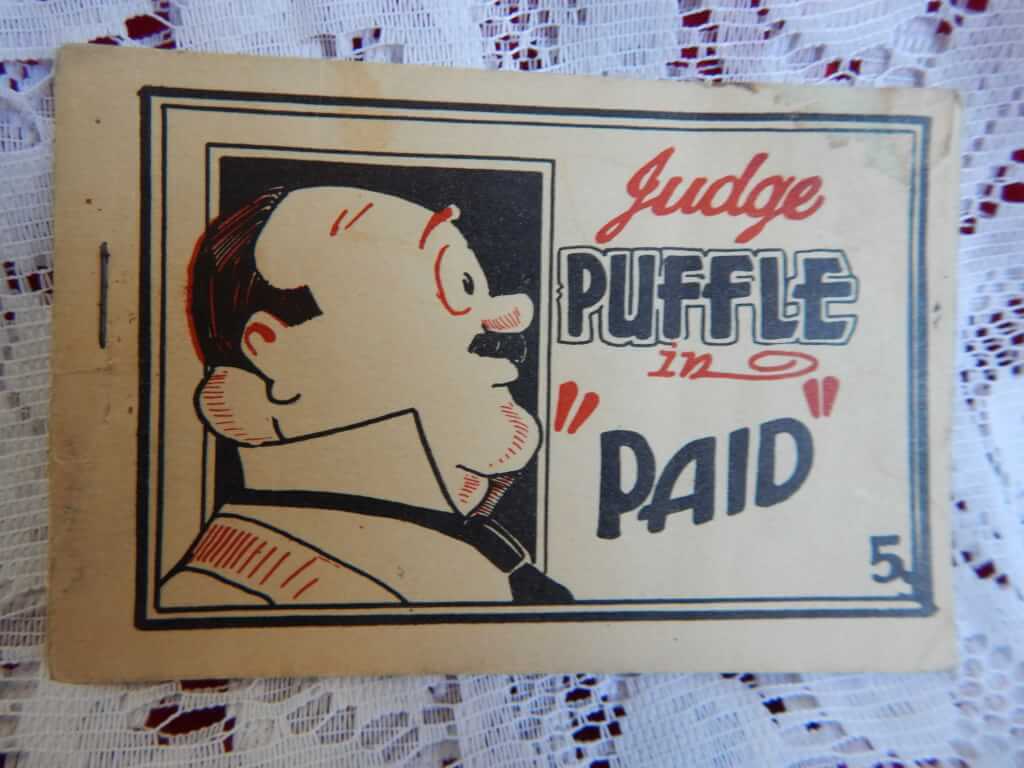 Judge Puffle in "Paid", (np. nd.) 4.5" x 3", 8pp. pamphlet, stapled Tijuana bibles (also known as eight-pagers, bluesies, gray-backs, Jiggs-and-Maggie books, jo-jo books, Tillie-and-Mac books, and two-by-fours) were little pornographic comic books produced in the United States from the 1920s to the early 1960s.
Judge Puffle in "Paid", (np. nd.) 4.5" x 3", 8pp. pamphlet, stapled Tijuana bibles (also known as eight-pagers, bluesies, gray-backs, Jiggs-and-Maggie books, jo-jo books, Tillie-and-Mac books, and two-by-fours) were little pornographic comic books produced in the United States from the 1920s to the early 1960s. -
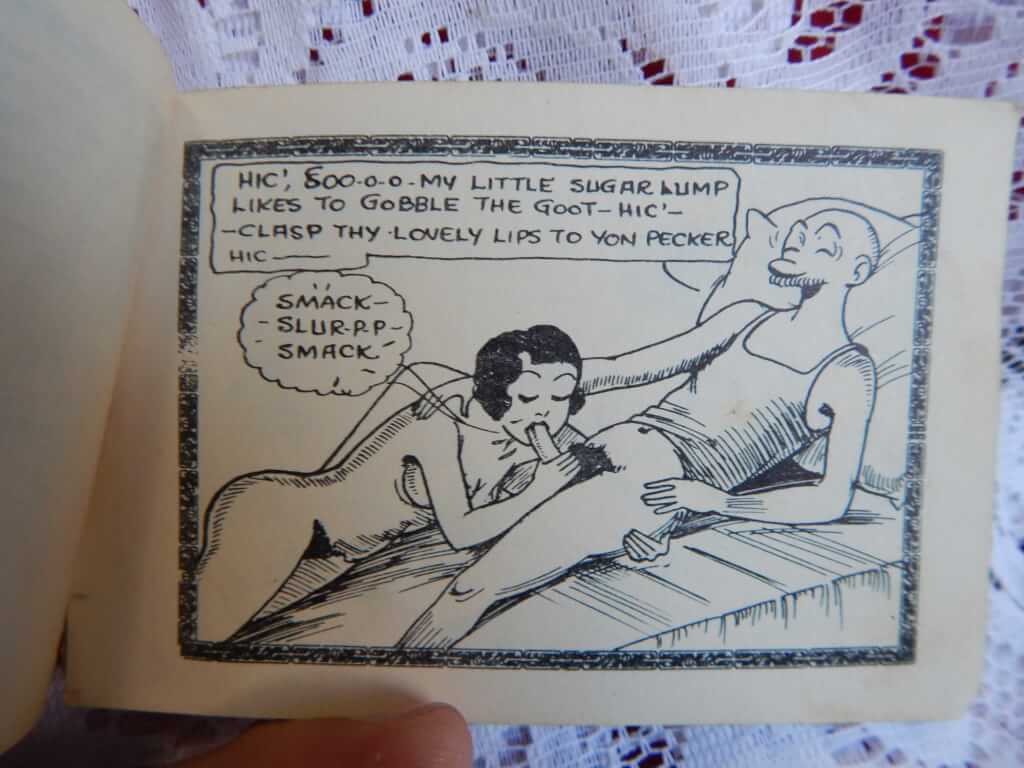
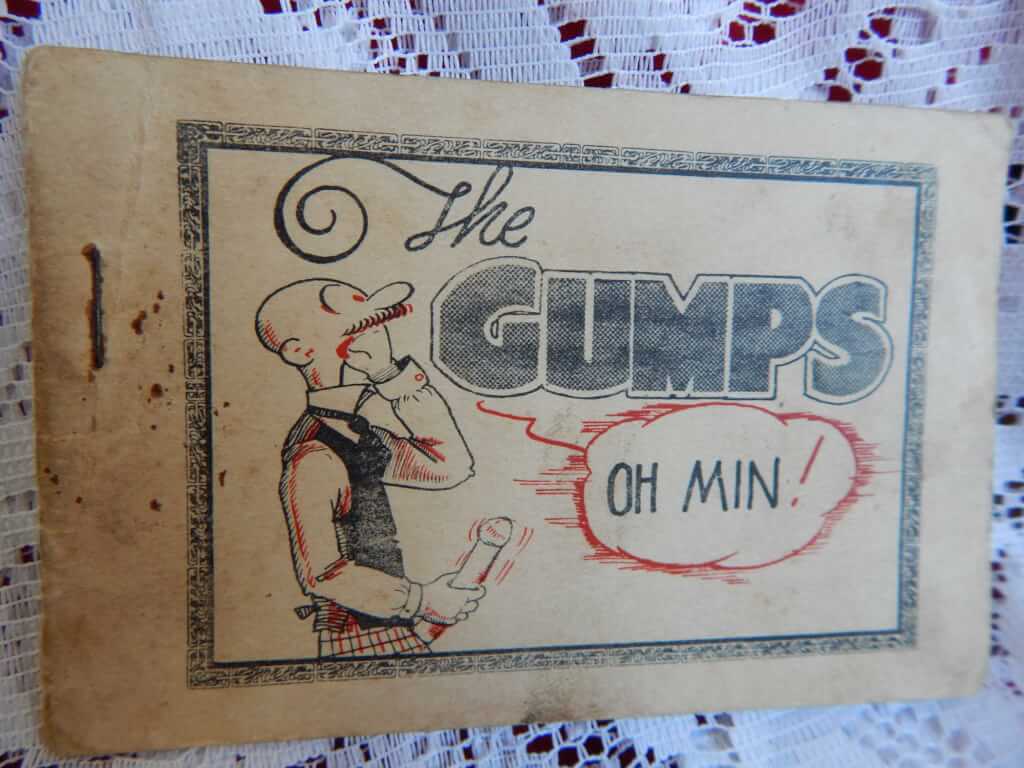 The Gumps - Oh Min!, (np. nd.) 4.5" x 3", 8pp. pamphlet, stapled Tijuana bibles (also known as eight-pagers, bluesies, gray-backs, Jiggs-and-Maggie books, jo-jo books, Tillie-and-Mac books, and two-by-fours) were little pornographic comic books produced in the United States from the 1920s to the early 1960s.
The Gumps - Oh Min!, (np. nd.) 4.5" x 3", 8pp. pamphlet, stapled Tijuana bibles (also known as eight-pagers, bluesies, gray-backs, Jiggs-and-Maggie books, jo-jo books, Tillie-and-Mac books, and two-by-fours) were little pornographic comic books produced in the United States from the 1920s to the early 1960s. -

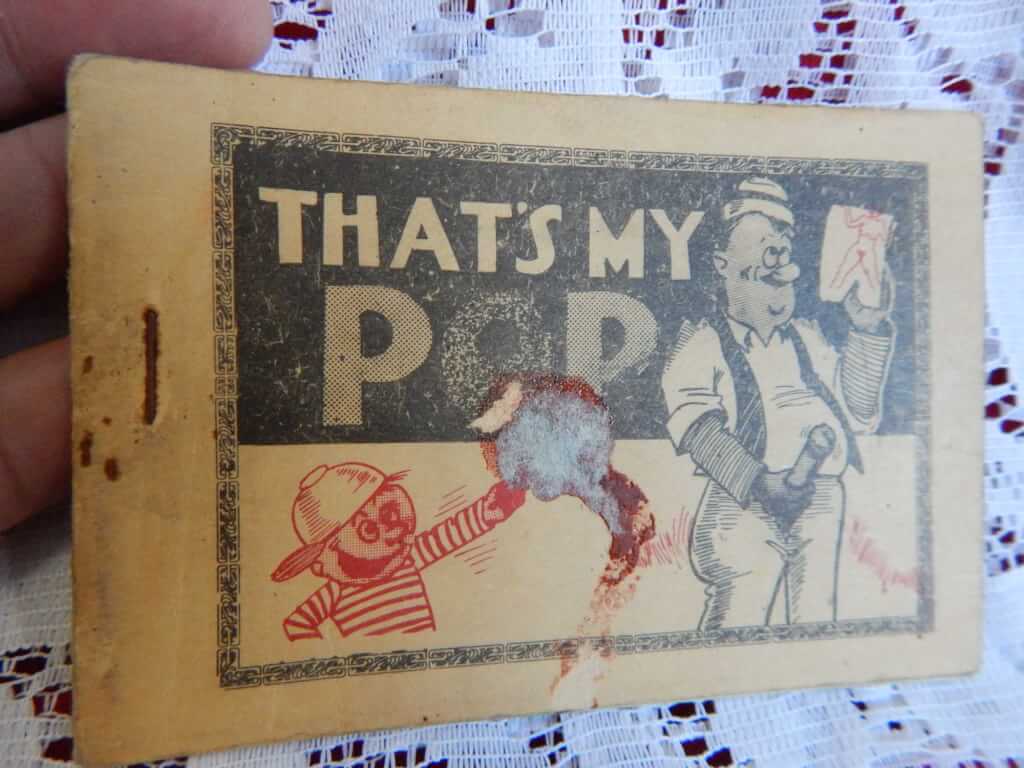 That's My Pop, (np. nd.) 4.5" x 3", 8pp.+2 pages describing sexual positions, pamphlet, stapled Tijuana bibles (also known as eight-pagers, bluesies, gray-backs, Jiggs-and-Maggie books, jo-jo books, Tillie-and-Mac books, and two-by-fours) were little pornographic comic books produced in the United States from the 1920s to the early 1960s.
That's My Pop, (np. nd.) 4.5" x 3", 8pp.+2 pages describing sexual positions, pamphlet, stapled Tijuana bibles (also known as eight-pagers, bluesies, gray-backs, Jiggs-and-Maggie books, jo-jo books, Tillie-and-Mac books, and two-by-fours) were little pornographic comic books produced in the United States from the 1920s to the early 1960s. -

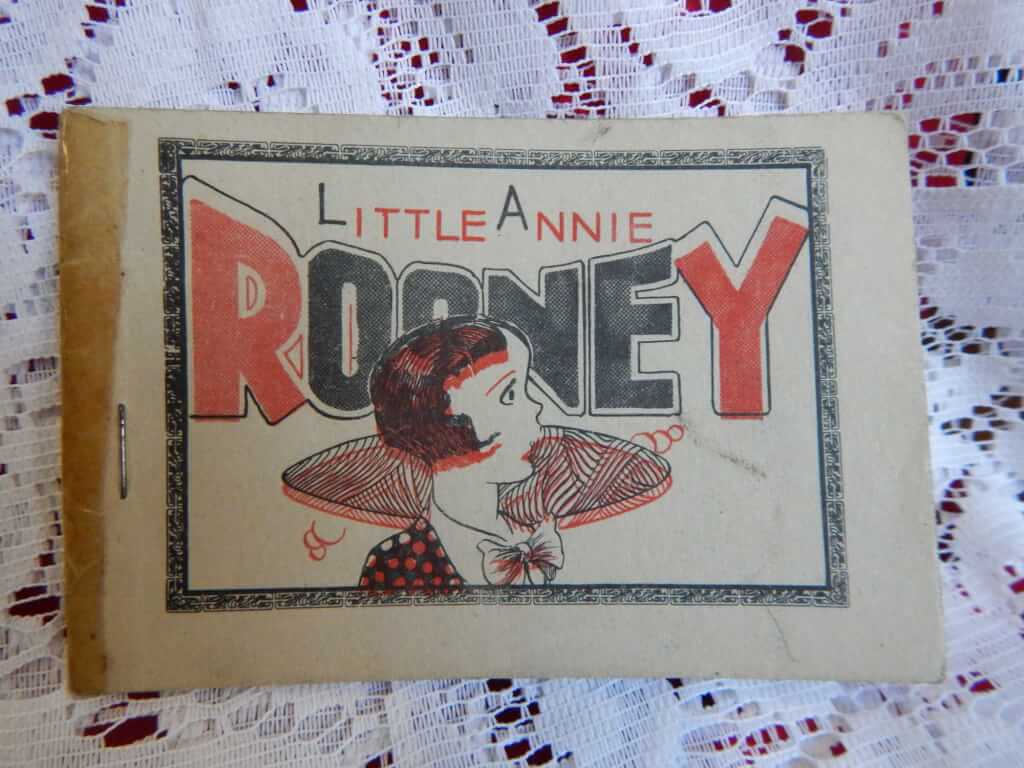 Little Annie Rooney, (np. nd.) 4.5" x 3", 8pp., pamphlet, stapled and taped Tijuana bibles (also known as eight-pagers, bluesies, gray-backs, Jiggs-and-Maggie books, jo-jo books, Tillie-and-Mac books, and two-by-fours) were little pornographic comic books produced in the United States from the 1920s to the early 1960s.
Little Annie Rooney, (np. nd.) 4.5" x 3", 8pp., pamphlet, stapled and taped Tijuana bibles (also known as eight-pagers, bluesies, gray-backs, Jiggs-and-Maggie books, jo-jo books, Tillie-and-Mac books, and two-by-fours) were little pornographic comic books produced in the United States from the 1920s to the early 1960s. -
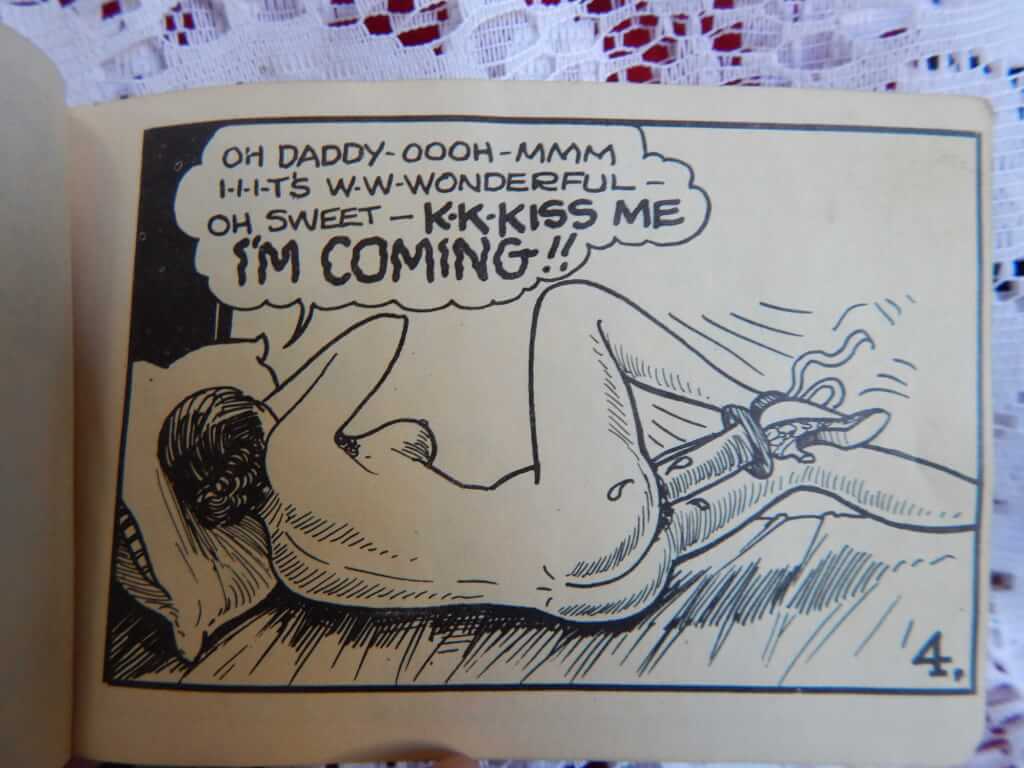
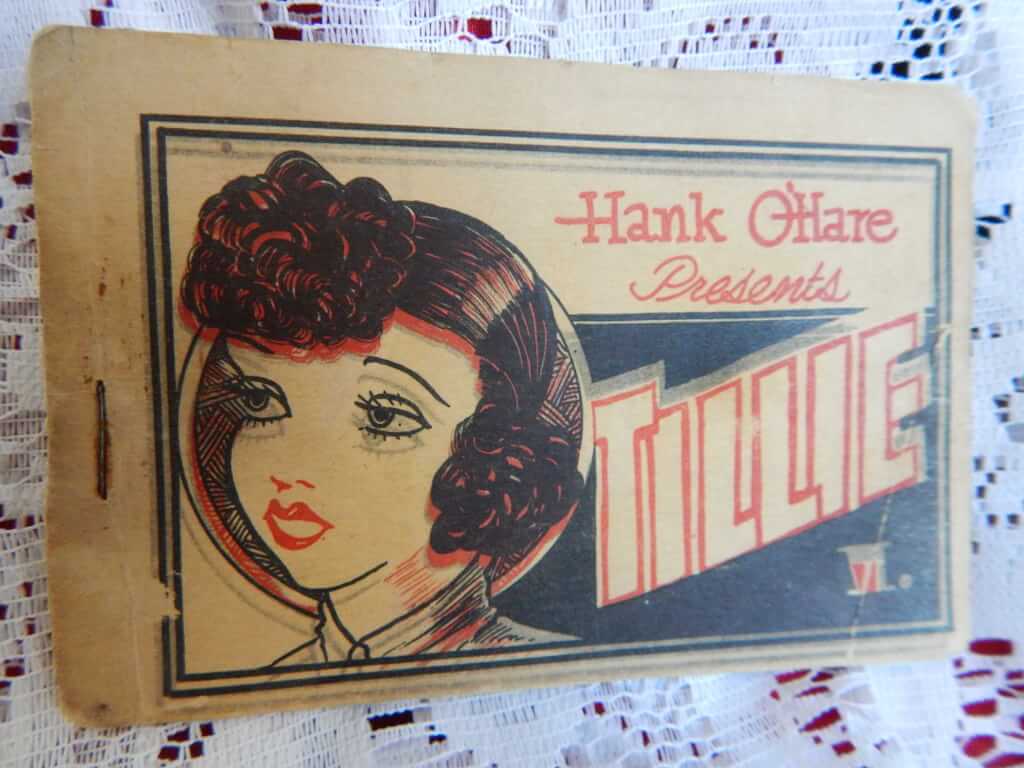 Hank O'Hare presents Tillie, (np. nd.) 4.5" x 3", 8pp., pamphlet, stapled and taped Tijuana bibles (also known as eight-pagers, bluesies, gray-backs, Jiggs-and-Maggie books, jo-jo books, Tillie-and-Mac books, and two-by-fours) were little pornographic comic books produced in the United States from the 1920s to the early 1960s.
Hank O'Hare presents Tillie, (np. nd.) 4.5" x 3", 8pp., pamphlet, stapled and taped Tijuana bibles (also known as eight-pagers, bluesies, gray-backs, Jiggs-and-Maggie books, jo-jo books, Tillie-and-Mac books, and two-by-fours) were little pornographic comic books produced in the United States from the 1920s to the early 1960s. -
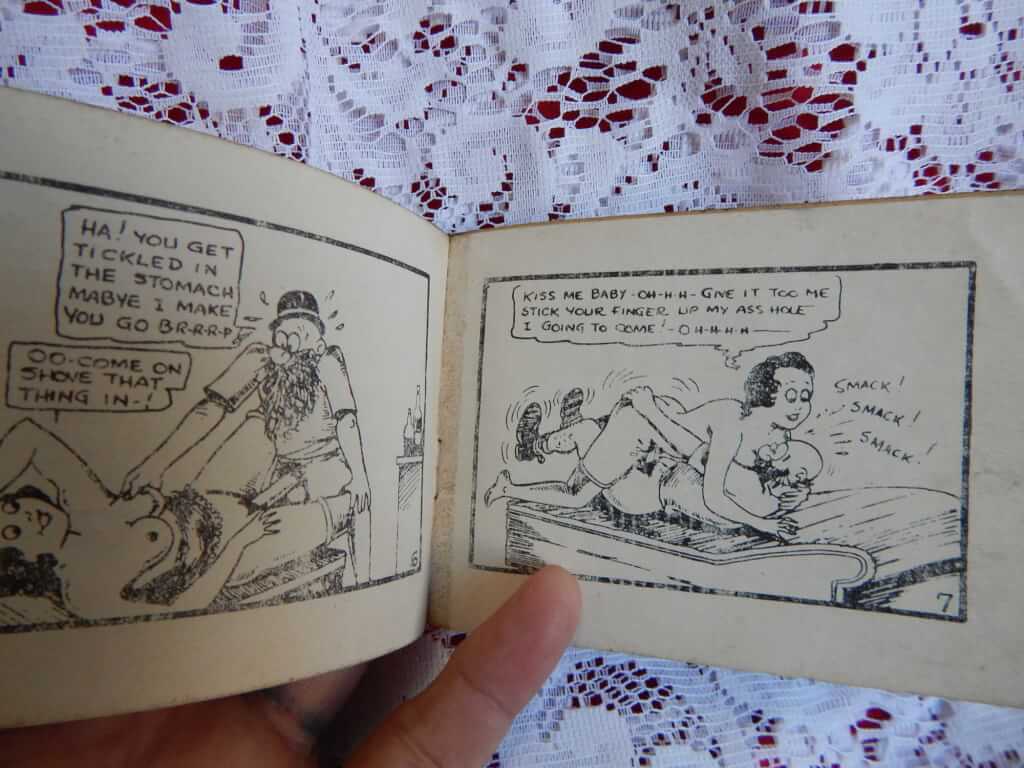
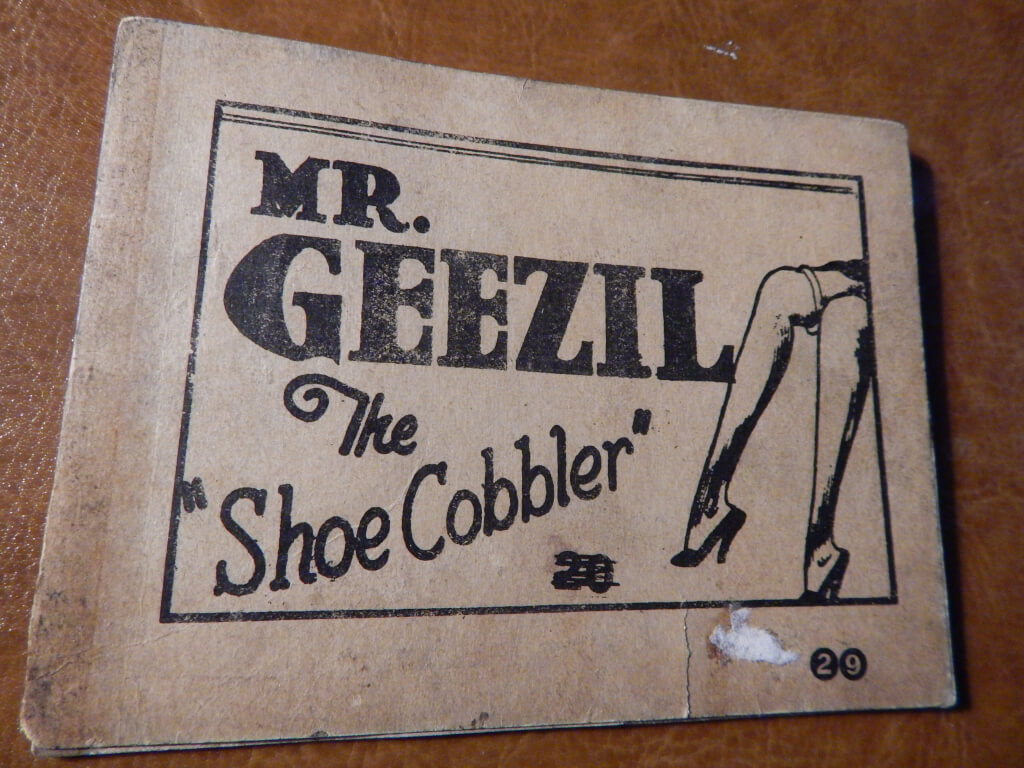 Mr. Geezil, the "Shoe Cobbler", (np. nd.) 4.5" x 3", 8pp., pamphlet, stapled and taped Tijuana bibles (also known as eight-pagers, bluesies, gray-backs, Jiggs-and-Maggie books, jo-jo books, Tillie-and-Mac books, and two-by-fours) were little pornographic comic books produced in the United States from the 1920s to the early 1960s.
Mr. Geezil, the "Shoe Cobbler", (np. nd.) 4.5" x 3", 8pp., pamphlet, stapled and taped Tijuana bibles (also known as eight-pagers, bluesies, gray-backs, Jiggs-and-Maggie books, jo-jo books, Tillie-and-Mac books, and two-by-fours) were little pornographic comic books produced in the United States from the 1920s to the early 1960s. -
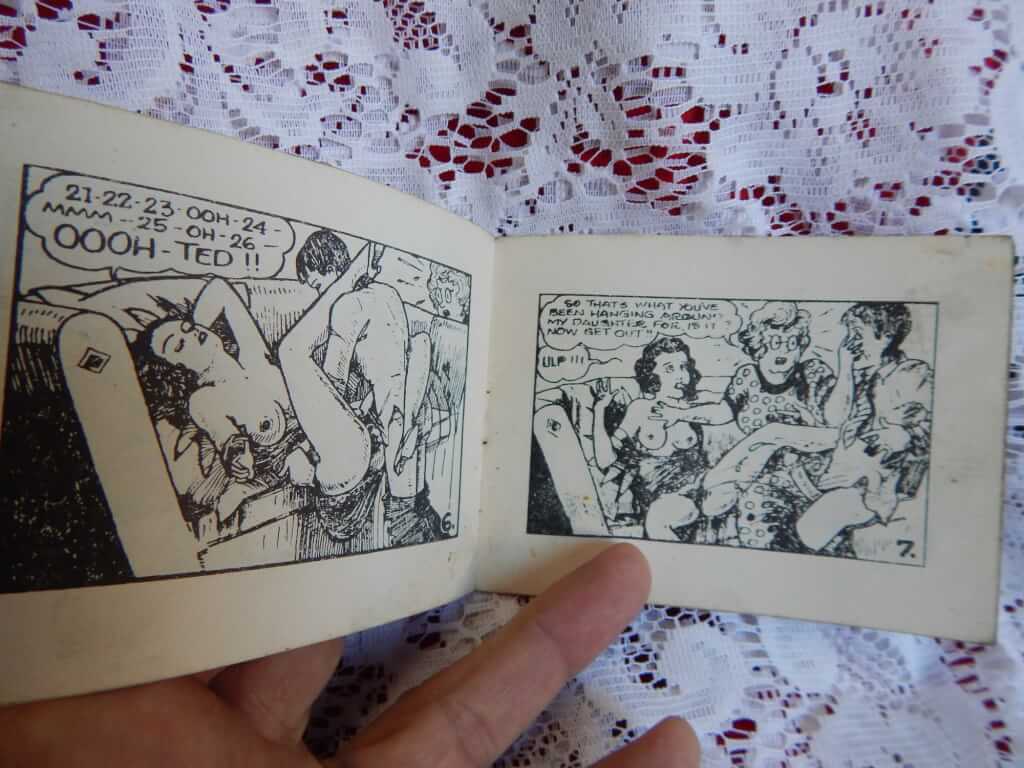
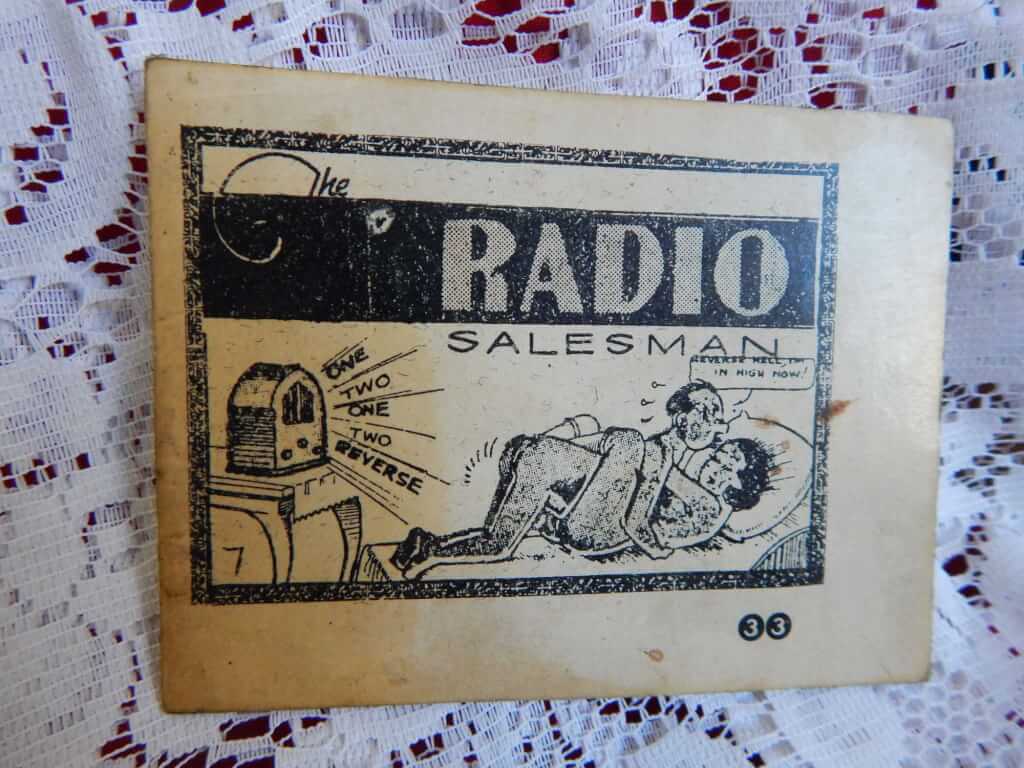 The Radio Salesman, (np. nd.) 4.5" x 3", 8pp., pamphlet, stapled and taped Tijuana bibles (also known as eight-pagers, bluesies, gray-backs, Jiggs-and-Maggie books, jo-jo books, Tillie-and-Mac books, and two-by-fours) were little pornographic comic books produced in the United States from the 1920s to the early 1960s.
The Radio Salesman, (np. nd.) 4.5" x 3", 8pp., pamphlet, stapled and taped Tijuana bibles (also known as eight-pagers, bluesies, gray-backs, Jiggs-and-Maggie books, jo-jo books, Tillie-and-Mac books, and two-by-fours) were little pornographic comic books produced in the United States from the 1920s to the early 1960s. -
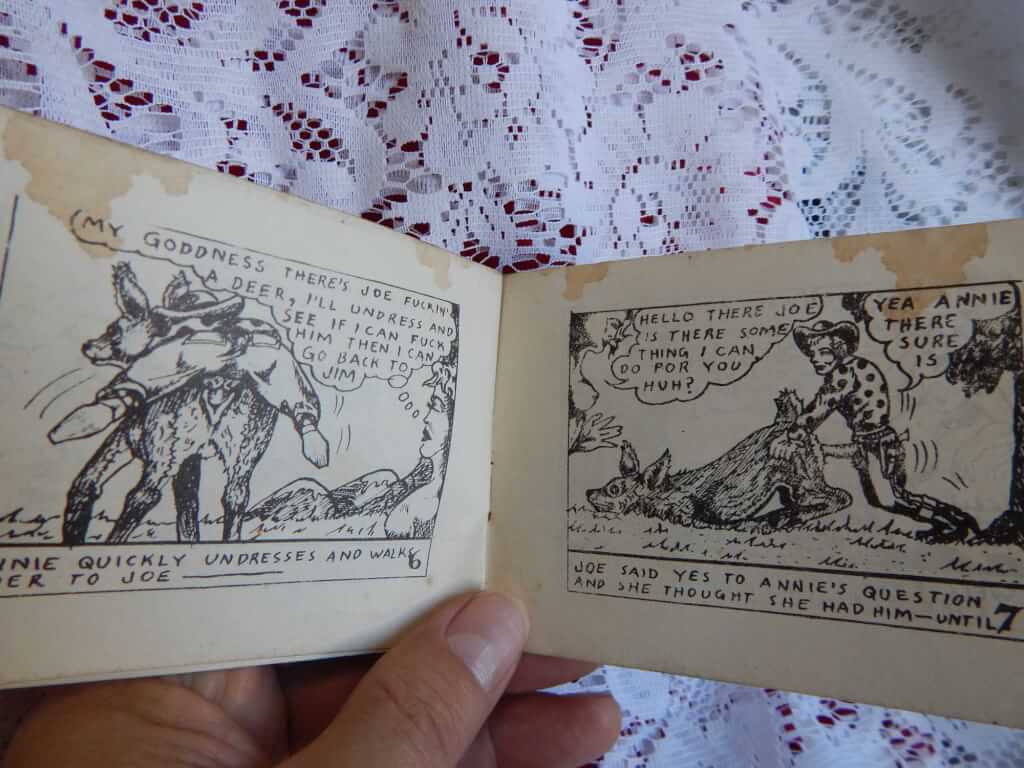
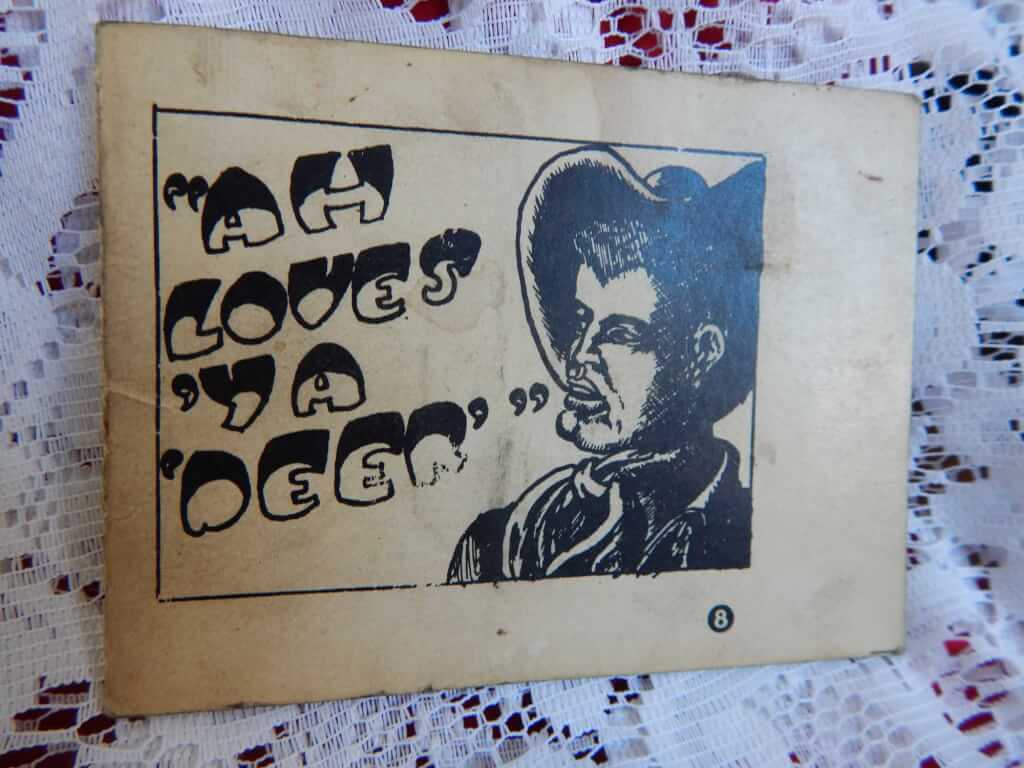 Ah Loves 'ya 'Deer'", (np. nd.) 4.5" x 3", 8pp., pamphlet, stapled and taped Tijuana bibles (also known as eight-pagers, bluesies, gray-backs, Jiggs-and-Maggie books, jo-jo books, Tillie-and-Mac books, and two-by-fours) were little pornographic comic books produced in the United States from the 1920s to the early 1960s.
Ah Loves 'ya 'Deer'", (np. nd.) 4.5" x 3", 8pp., pamphlet, stapled and taped Tijuana bibles (also known as eight-pagers, bluesies, gray-backs, Jiggs-and-Maggie books, jo-jo books, Tillie-and-Mac books, and two-by-fours) were little pornographic comic books produced in the United States from the 1920s to the early 1960s. -
Out of stock

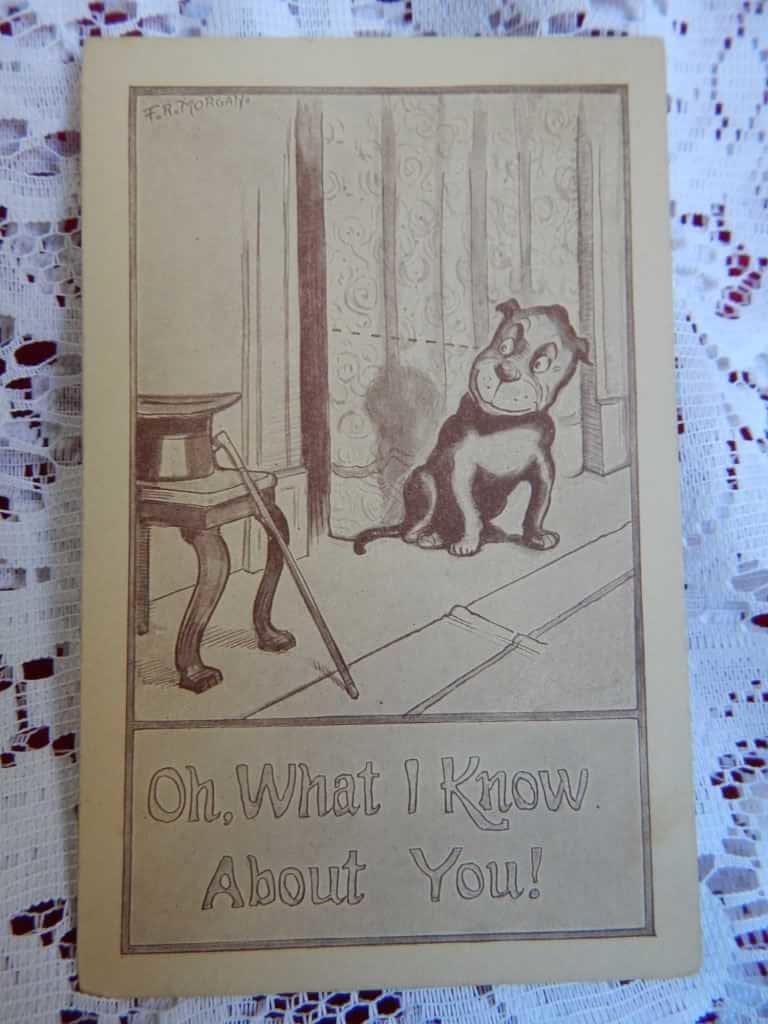 Oh What I Know About You! postcard
Oh What I Know About You! postcard -
Out of stock
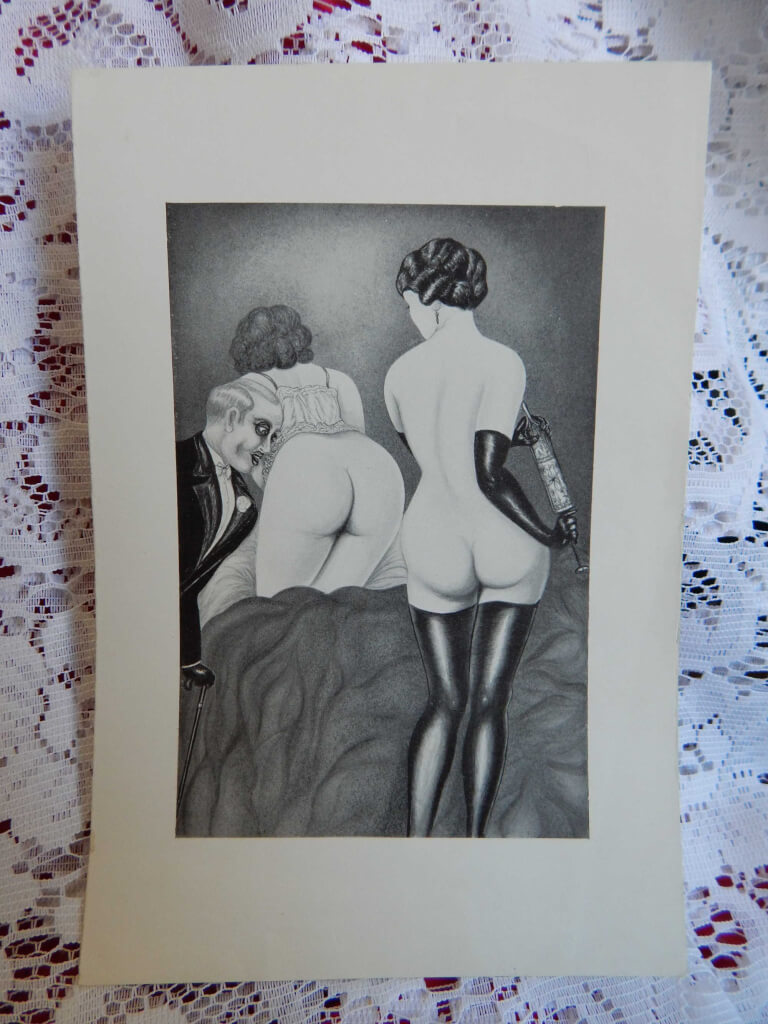 Enema, artist unknown 5.5"x8", unknown plate, found it inside an unrelated book
Enema, artist unknown 5.5"x8", unknown plate, found it inside an unrelated book -
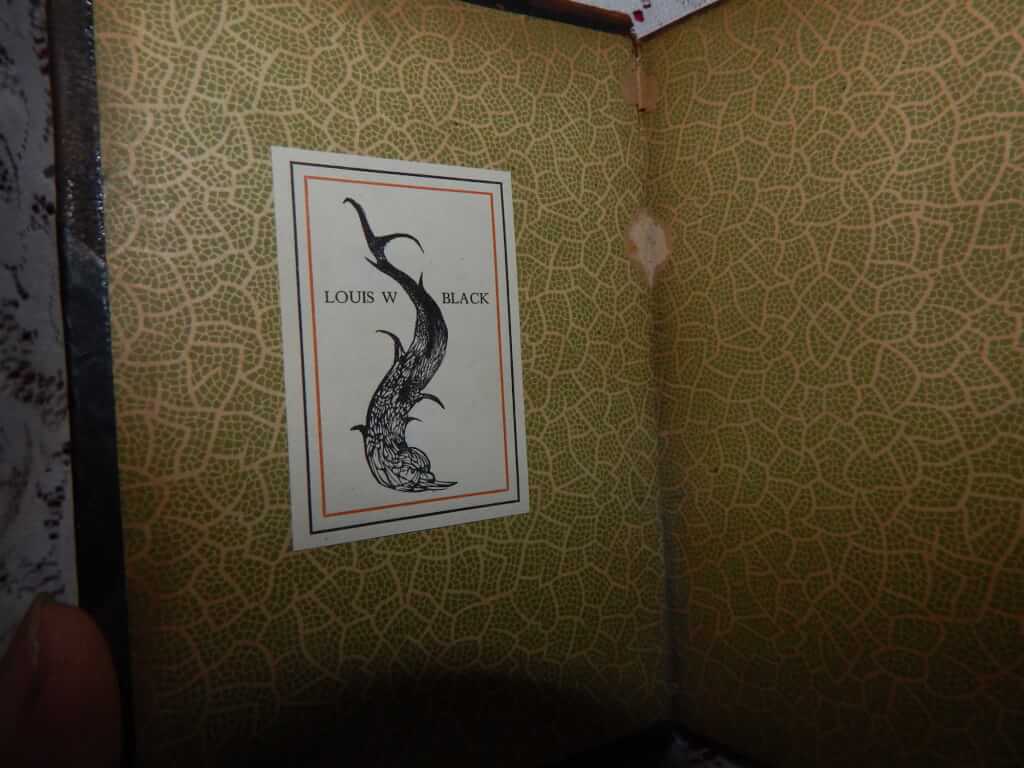
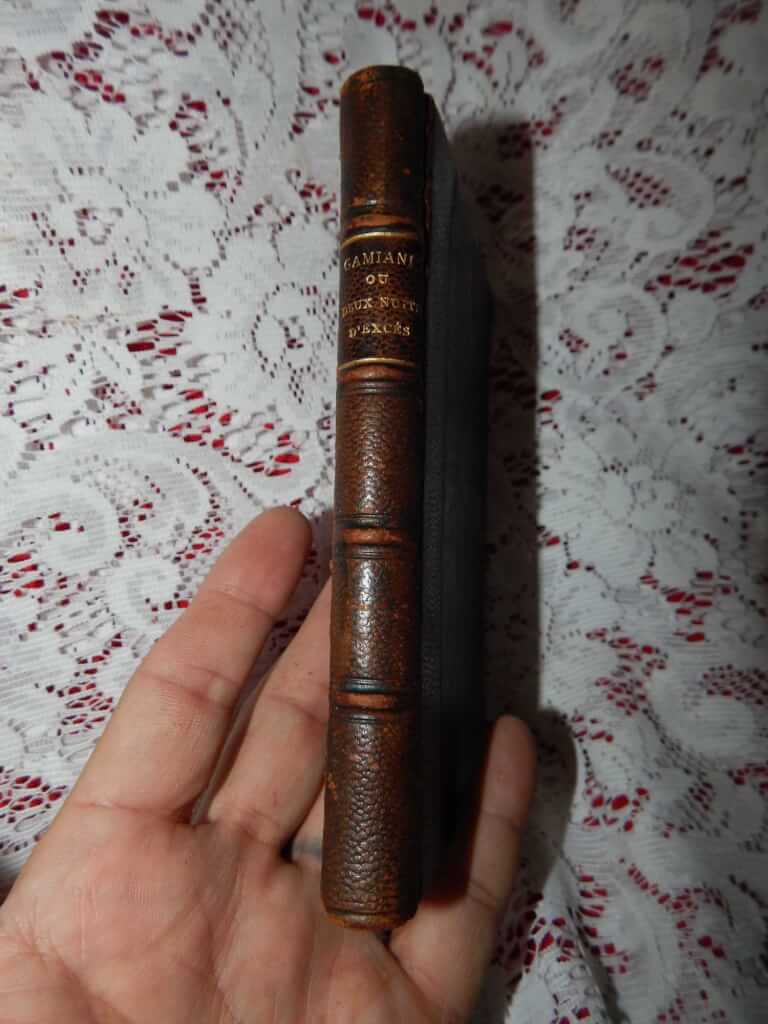 Gamiani, ou deux nuits d'excés par Alcide, Baron de M***, anonymous [believed to have been written by Alfred de Musset] (G. Lebaucher, Libraire-Éditeur, Montreal, Canada [likely Gaucher, Malakoff, France] nd.) 4.5"x6", 144pp, half morocco over marbled boards, title in gilt on spine, 4 raised bands, boards cracked but holding, just good condition Gamiani, or Two Nights of Excess is a French erotic novel first published in 1833. Its authorship is anonymous, but it is believed to have been written by Alfred de Musset and the lesbian eponymous heroine a portrait of his lover, George Sand. It became a bestseller among nineteenth century erotic literature. Modeled after George Sand, this work gives us a young man named Alcide observing the Countess Gamiani and a young girl named Fanny, engaged in their lesbian bed. Having watched them and provoked by their abandonment, he reveals himself, joins them, and they spend the night alternately sharing their intimate histories and their bodies. The stories they tell include the rape of one in a monastery and the nearly fatal debauchment of another in a convent, as well as encounters with a number of animals, including an ape and a donkey. Elias Gaucher (publisher from 1898 until 1925(?)) was a Clandestine editor who mainly used the pseudonym G. Lebaucher, Libraire-Éditeur, Montreal (Canada), but also Maison Mystère, Imprimerie Galante, etc. This publisher published many erotic underground works in English from 1898 to about 1904 with the mentions "Printed for the Erotica Biblion Society of London and New York", he also published erotic texts in French from 1899. His printing press was actually located at 11 rue Danicourt in Malakoff, France. Gaucher left his works in deposit with booksellers-distributors [...] Most editions of Gaucher are counterfeit editions of Brancart or Hirsch, and Gaucher often republished his own works.
Gamiani, ou deux nuits d'excés par Alcide, Baron de M***, anonymous [believed to have been written by Alfred de Musset] (G. Lebaucher, Libraire-Éditeur, Montreal, Canada [likely Gaucher, Malakoff, France] nd.) 4.5"x6", 144pp, half morocco over marbled boards, title in gilt on spine, 4 raised bands, boards cracked but holding, just good condition Gamiani, or Two Nights of Excess is a French erotic novel first published in 1833. Its authorship is anonymous, but it is believed to have been written by Alfred de Musset and the lesbian eponymous heroine a portrait of his lover, George Sand. It became a bestseller among nineteenth century erotic literature. Modeled after George Sand, this work gives us a young man named Alcide observing the Countess Gamiani and a young girl named Fanny, engaged in their lesbian bed. Having watched them and provoked by their abandonment, he reveals himself, joins them, and they spend the night alternately sharing their intimate histories and their bodies. The stories they tell include the rape of one in a monastery and the nearly fatal debauchment of another in a convent, as well as encounters with a number of animals, including an ape and a donkey. Elias Gaucher (publisher from 1898 until 1925(?)) was a Clandestine editor who mainly used the pseudonym G. Lebaucher, Libraire-Éditeur, Montreal (Canada), but also Maison Mystère, Imprimerie Galante, etc. This publisher published many erotic underground works in English from 1898 to about 1904 with the mentions "Printed for the Erotica Biblion Society of London and New York", he also published erotic texts in French from 1899. His printing press was actually located at 11 rue Danicourt in Malakoff, France. Gaucher left his works in deposit with booksellers-distributors [...] Most editions of Gaucher are counterfeit editions of Brancart or Hirsch, and Gaucher often republished his own works. -
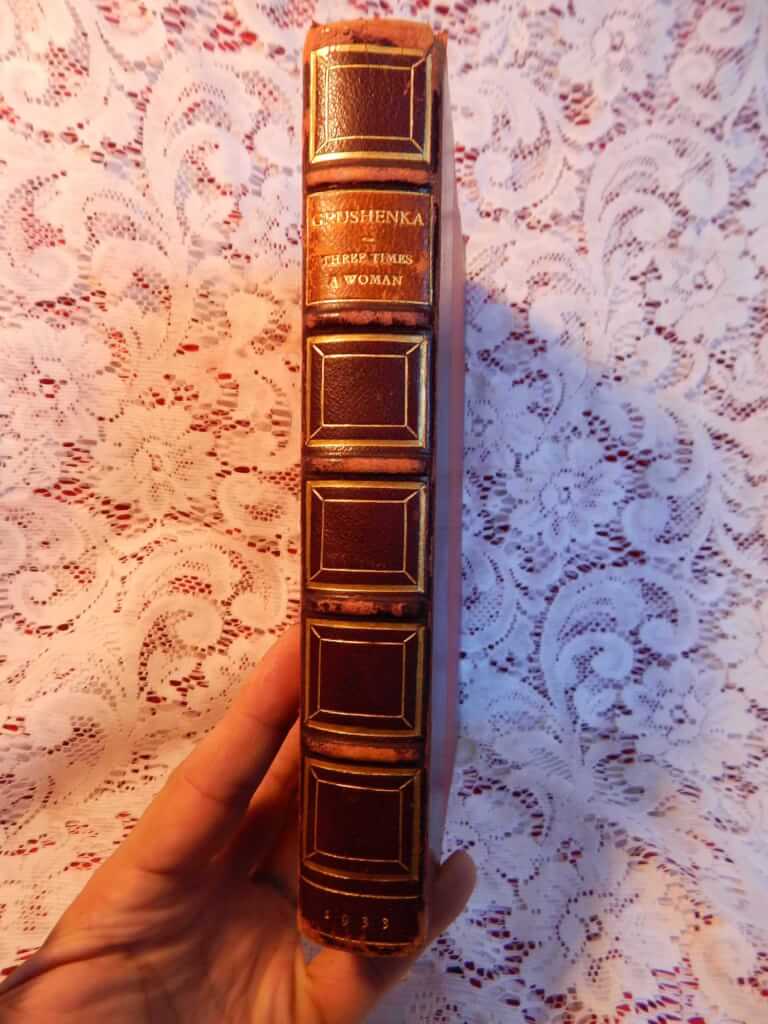
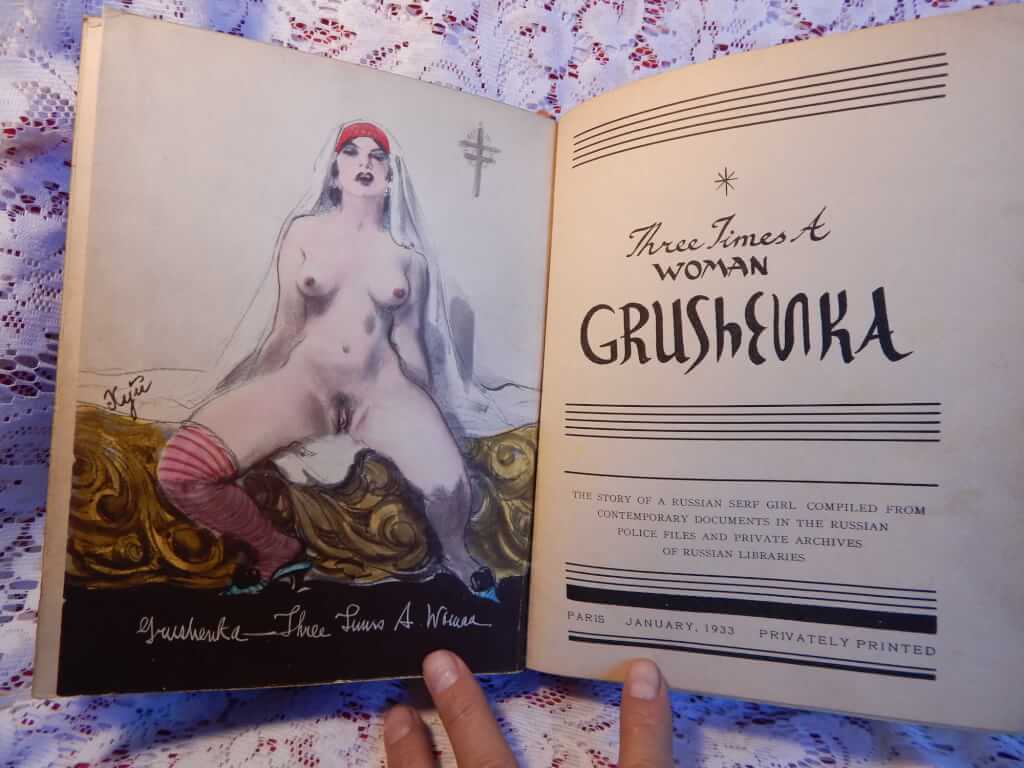 Three Times a Woman, Grushenka, anonymous [possibly Val Lewton?], illus. "a young Russian residing in Paris, who unfortunately must remain anonymous" (Privately Printed, Paris [New York], 1933) 7.25"x9", 252pp, the original "french wraps" bound into hardcover, half red morocco over red boards, gilt titles and decorations on spine, 5 raised bands, gilt boarders on leather covers, top edge gilt, other edges deckled, frontispiece in color (rare), other illustrations not present, binding split at 18/19 to 30/31pp otherwise good condition, rubbing and bumping to boards Title page reads: "The Story of a Russian Serf Girl Compiled from Contemporary Documents in the Russian Police Files and Private Archives of Russian Libraries" Originally published at New York in 1933 with a false Paris imprint. Val Lewton, the supposed author, was a well known film producer, responsible for a series of good low-budget horror movies in the 1940's by such directors as Robert Wise, Mark Robson and Jacques Tourneur. The book purports to be a flaggelation story written by a Russian living in Paris and then translated to english. The story takes place c. 1728, "shortly after the death of Peter the Great". The main character is Grushenka Pavlovsk.
Three Times a Woman, Grushenka, anonymous [possibly Val Lewton?], illus. "a young Russian residing in Paris, who unfortunately must remain anonymous" (Privately Printed, Paris [New York], 1933) 7.25"x9", 252pp, the original "french wraps" bound into hardcover, half red morocco over red boards, gilt titles and decorations on spine, 5 raised bands, gilt boarders on leather covers, top edge gilt, other edges deckled, frontispiece in color (rare), other illustrations not present, binding split at 18/19 to 30/31pp otherwise good condition, rubbing and bumping to boards Title page reads: "The Story of a Russian Serf Girl Compiled from Contemporary Documents in the Russian Police Files and Private Archives of Russian Libraries" Originally published at New York in 1933 with a false Paris imprint. Val Lewton, the supposed author, was a well known film producer, responsible for a series of good low-budget horror movies in the 1940's by such directors as Robert Wise, Mark Robson and Jacques Tourneur. The book purports to be a flaggelation story written by a Russian living in Paris and then translated to english. The story takes place c. 1728, "shortly after the death of Peter the Great". The main character is Grushenka Pavlovsk. -
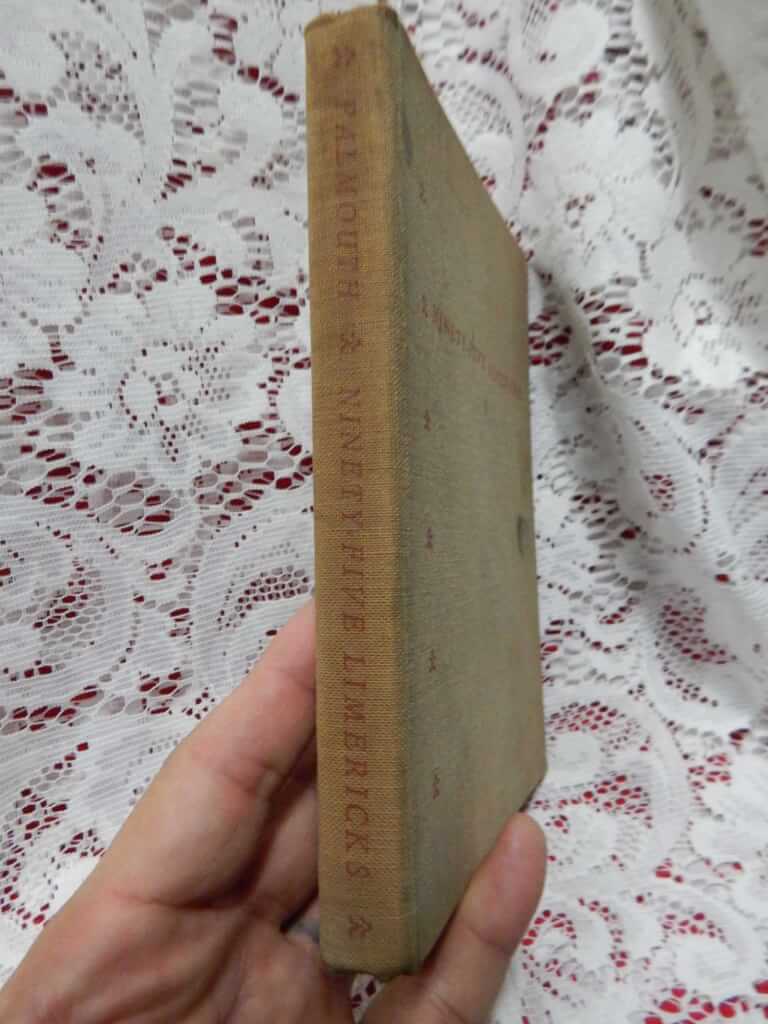
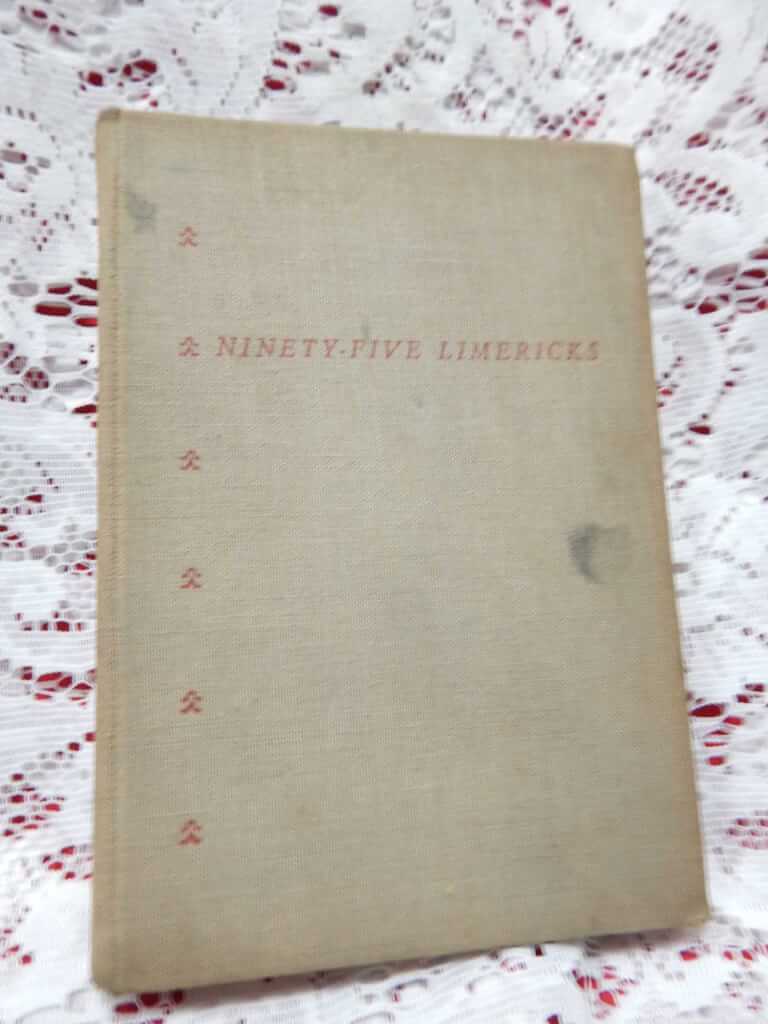 Ninety-Five Limericks | A Contribution to the Folk Lore of our Time | Collected and Edited by John Falmouth (The Limerick Press, Suffern, NY, 1932) 5"x7.25", unpaginated, tan cloth boards with red lettering and decorations, some soiling on boards, interior good, previous owner added a limerick about a young man from Calcutta in the end pages. Mr. Falmouth has a 6 page forward where he discusses the phallic nature of the limerick (with diagrams). A fun little book even though the profanity is exed out.
Ninety-Five Limericks | A Contribution to the Folk Lore of our Time | Collected and Edited by John Falmouth (The Limerick Press, Suffern, NY, 1932) 5"x7.25", unpaginated, tan cloth boards with red lettering and decorations, some soiling on boards, interior good, previous owner added a limerick about a young man from Calcutta in the end pages. Mr. Falmouth has a 6 page forward where he discusses the phallic nature of the limerick (with diagrams). A fun little book even though the profanity is exed out. -
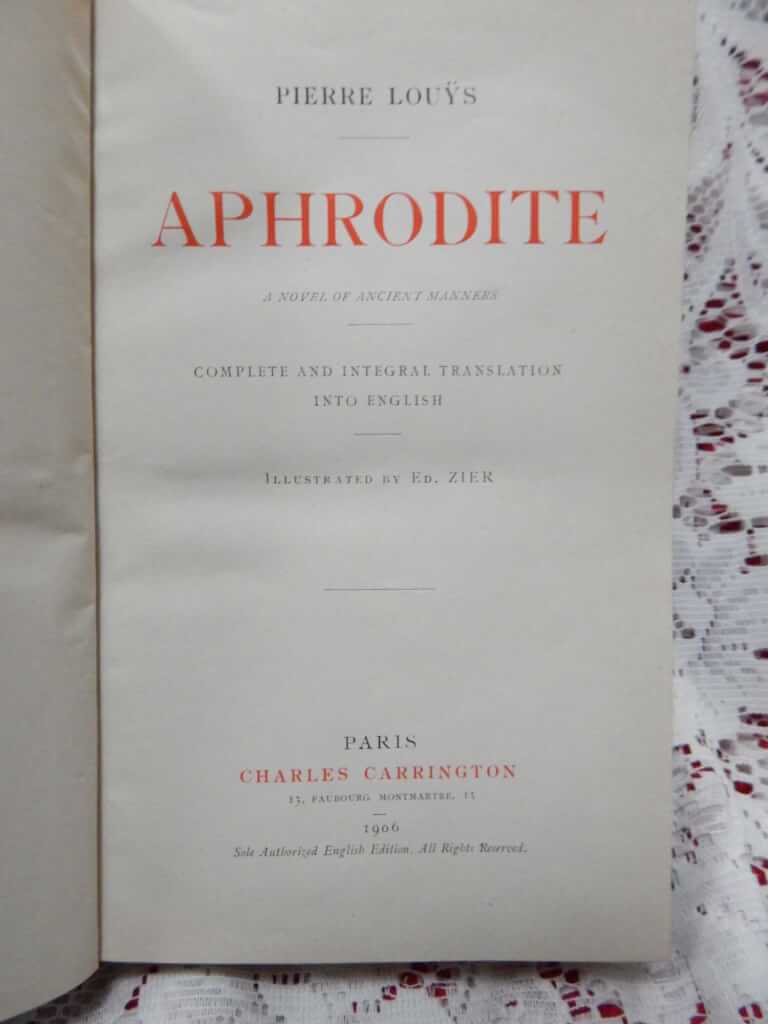
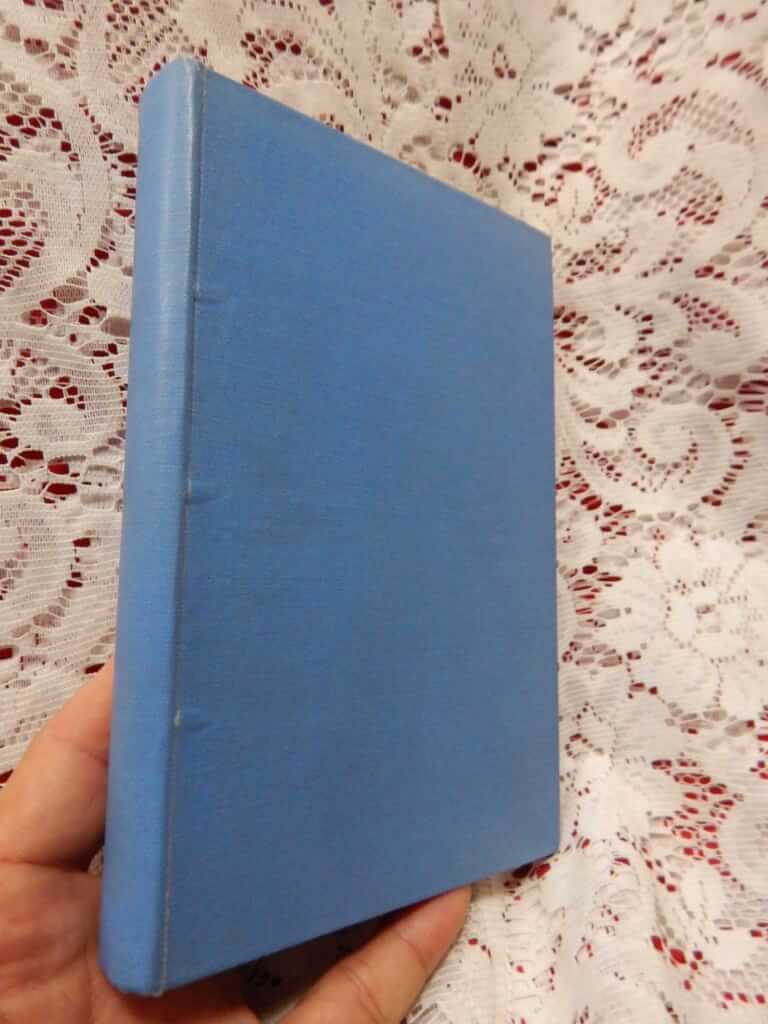 Aphrodite, a novel of ancient manners, by Pierre Louÿs, illus. Ed. Zier (Charles Carrington, 1906, first edition thus, first English translation) 5.25 x 7.75", xiv+412pp, rebound with plain blue boards, fine condition Pierre Louys (1870 - 1925) was a French poet and writer, most renowned for lesbian and classical themes in some of his writings. He is known as a writer who "expressed pagan sensuality with stylistic perfection." "Aphrodite: mæurs antiques" (Ancient Manners) is a "libertine" story set in ancient Alexandria. Highlights include the loves of Chrysis, an orgy banquet ending in the crucifixion of a slave, the love of two young musician girls and the festivals of Aphrodite. "This Translation of Aphrodite was executed on the Printing Presses of Charles Herissey, at Evreux (France), for Mr. Charles Carrington, Paris, Bookseller et Publisher, and is the only complete English version extant." Édouard François Zier (1856-1924) was a French illustrator and painter.
Aphrodite, a novel of ancient manners, by Pierre Louÿs, illus. Ed. Zier (Charles Carrington, 1906, first edition thus, first English translation) 5.25 x 7.75", xiv+412pp, rebound with plain blue boards, fine condition Pierre Louys (1870 - 1925) was a French poet and writer, most renowned for lesbian and classical themes in some of his writings. He is known as a writer who "expressed pagan sensuality with stylistic perfection." "Aphrodite: mæurs antiques" (Ancient Manners) is a "libertine" story set in ancient Alexandria. Highlights include the loves of Chrysis, an orgy banquet ending in the crucifixion of a slave, the love of two young musician girls and the festivals of Aphrodite. "This Translation of Aphrodite was executed on the Printing Presses of Charles Herissey, at Evreux (France), for Mr. Charles Carrington, Paris, Bookseller et Publisher, and is the only complete English version extant." Édouard François Zier (1856-1924) was a French illustrator and painter. -
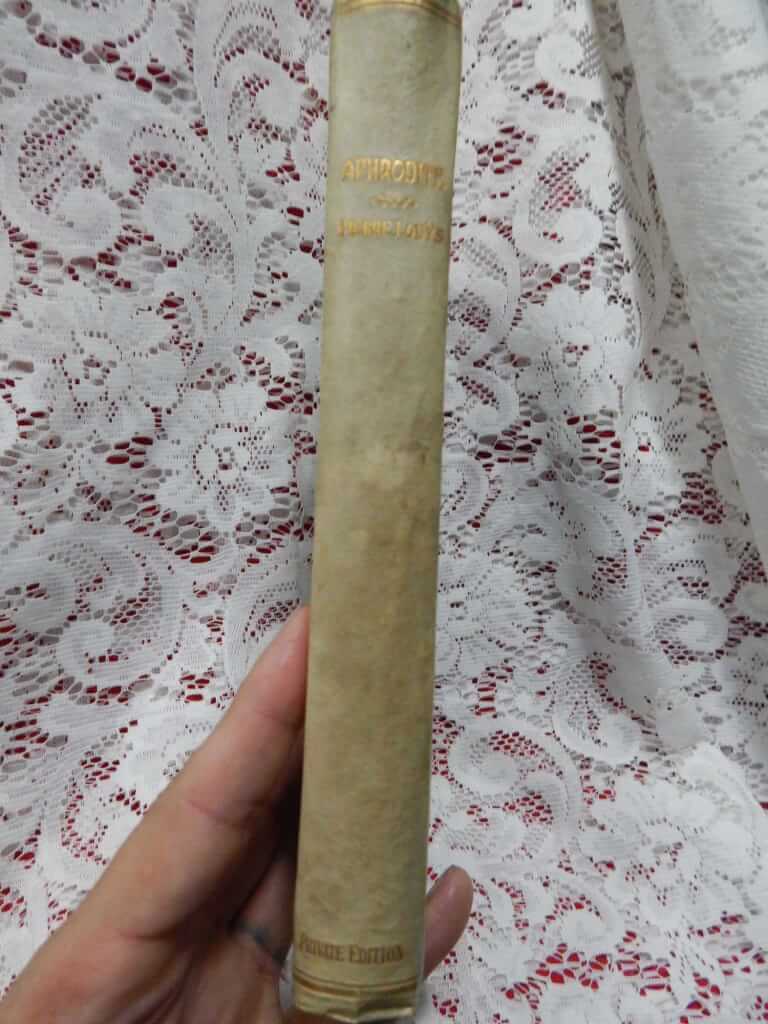
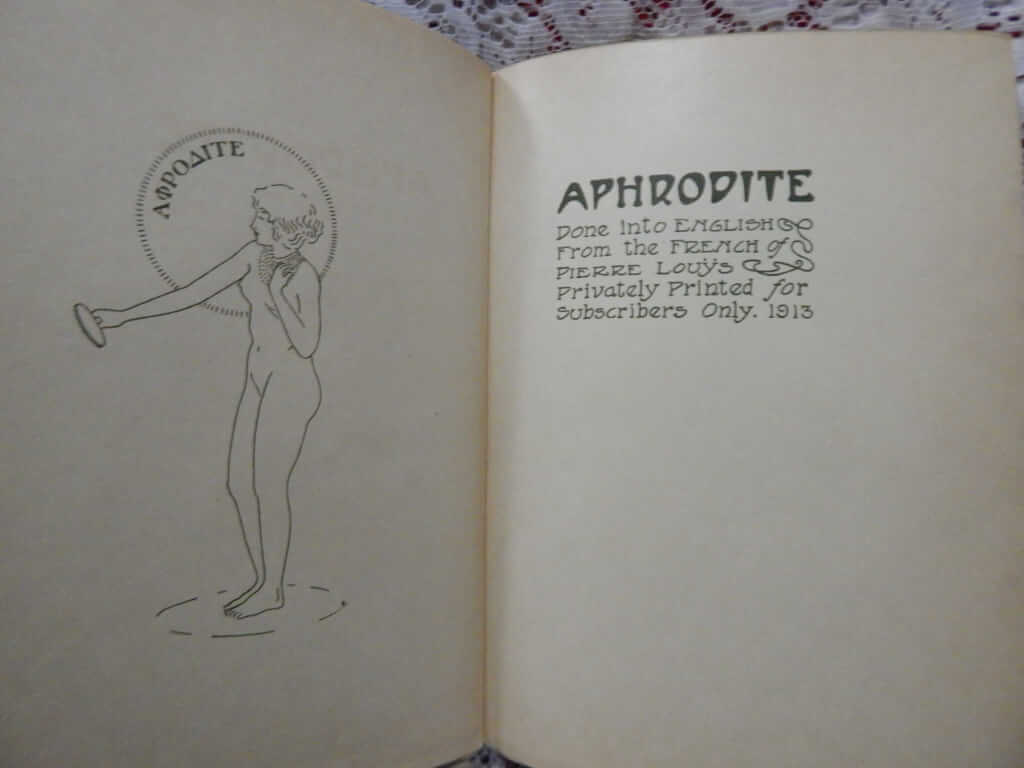 Aphrodite, done into English from the French of Pierre Louys, by Pierre Louÿs, illus. unknown, (Privately Printed for Subscribers Only[Mitchell S. Buck], 1913, #66/550) 6.5"x8.75", xi+258pp+Notes+Index, cream vellum spine over green boards, gilt titles on spine, good condition, some bumping and rubbing Buck's translation is easier to read than Carrington's translation a few years earlier. This was his first book, most likely, self-published and printed by Nicholas L. Brown. Pierre Louys (1870 - 1925) was a French poet and writer, most renowned for lesbian and classical themes in some of his writings. He is known as a writer who "expressed pagan sensuality with stylistic perfection." "Aphrodite: mæurs antiques" (Ancient Manners) is a "libertine" story set in ancient Alexandria. Highlights include the loves of Chrysis, an orgy banquet ending in the crucifixion of a slave, the love of two young musician girls and the festivals of Aphrodite." Mitchell Starrett Buck (February 10, 1887 – May 12, 1959) was an American poet, translator and classical scholar. His volumes of verse and prose poetry were deeply influenced by 1890s aestheticism as well as classical Greek and Roman Literature. Buck’s writing was secondary to his work as a heating engineer, and the money he made professionally allowed him to become a noted book-collector, specializing in first editions, English literature, Greek and Latin classics. Buck’s first book was a translation of Aphrodite by the French decadent Pierre Louÿs (1870-1925). It appeared in 1913, and was “privately printed”, probably at Buck’s expense. It may have been arranged through the Philadelphia bookseller Nicholas L. Brown, who officially became a publisher in 1916, and thereafter issued most of Buck’s output. Between 1916 and 1932, Brown published small editions of poetry, belles lettres, translations, sometimes without his imprint but stating that the title has been “issued privately for subscribers” (in order to evade prosecution for dealing in obscene materials). Such classical erotica is very tame by modern standards, but in the teens and twenties such material was policed by self-appointed authorities such as John S. Sumner of the New York Society for the Suppression of Vice.
Aphrodite, done into English from the French of Pierre Louys, by Pierre Louÿs, illus. unknown, (Privately Printed for Subscribers Only[Mitchell S. Buck], 1913, #66/550) 6.5"x8.75", xi+258pp+Notes+Index, cream vellum spine over green boards, gilt titles on spine, good condition, some bumping and rubbing Buck's translation is easier to read than Carrington's translation a few years earlier. This was his first book, most likely, self-published and printed by Nicholas L. Brown. Pierre Louys (1870 - 1925) was a French poet and writer, most renowned for lesbian and classical themes in some of his writings. He is known as a writer who "expressed pagan sensuality with stylistic perfection." "Aphrodite: mæurs antiques" (Ancient Manners) is a "libertine" story set in ancient Alexandria. Highlights include the loves of Chrysis, an orgy banquet ending in the crucifixion of a slave, the love of two young musician girls and the festivals of Aphrodite." Mitchell Starrett Buck (February 10, 1887 – May 12, 1959) was an American poet, translator and classical scholar. His volumes of verse and prose poetry were deeply influenced by 1890s aestheticism as well as classical Greek and Roman Literature. Buck’s writing was secondary to his work as a heating engineer, and the money he made professionally allowed him to become a noted book-collector, specializing in first editions, English literature, Greek and Latin classics. Buck’s first book was a translation of Aphrodite by the French decadent Pierre Louÿs (1870-1925). It appeared in 1913, and was “privately printed”, probably at Buck’s expense. It may have been arranged through the Philadelphia bookseller Nicholas L. Brown, who officially became a publisher in 1916, and thereafter issued most of Buck’s output. Between 1916 and 1932, Brown published small editions of poetry, belles lettres, translations, sometimes without his imprint but stating that the title has been “issued privately for subscribers” (in order to evade prosecution for dealing in obscene materials). Such classical erotica is very tame by modern standards, but in the teens and twenties such material was policed by self-appointed authorities such as John S. Sumner of the New York Society for the Suppression of Vice. -
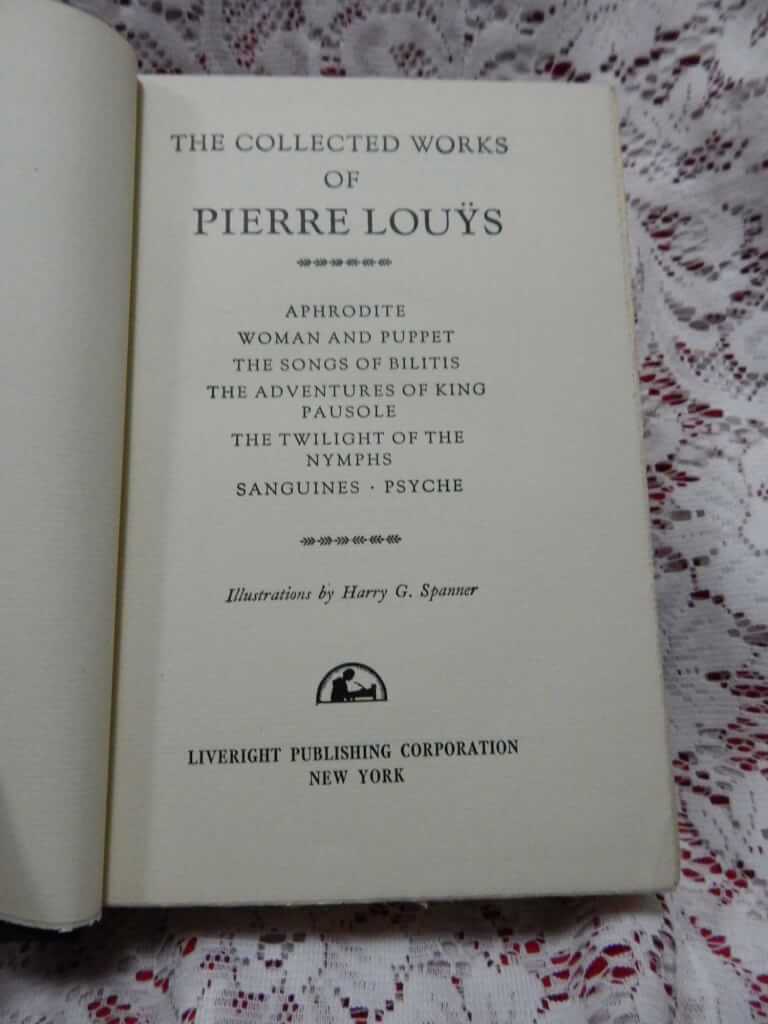
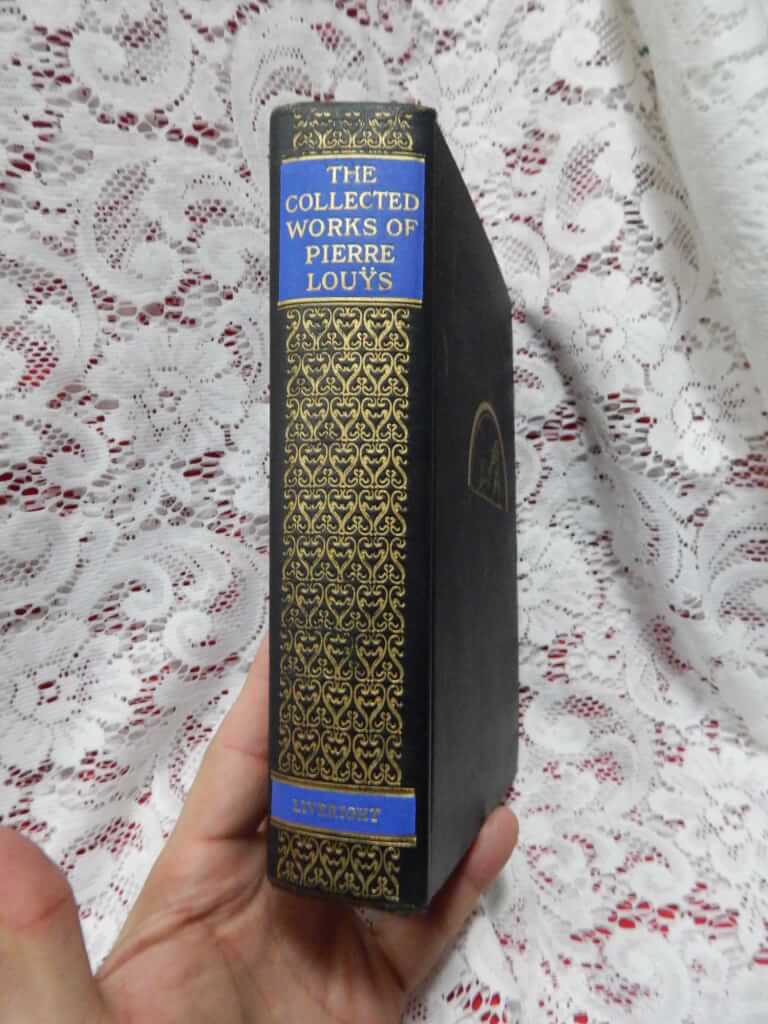 Collected Works of Pierre Louys, Aphrodite, Woman and Puppet, The Songs of Billitis, The Adventures of King Pausole, The Twilight of the Nymphs, Sanguines, Psyche, Pierre Louys, Illust. by Harry G. Spanner, trans. by Mitchell S. Buck (Liveright Publishing Corporation, New York, 1932) 5.75" X 7.75", xii+742pp., black boards with gilt nude on cover, gilt and blue titles and decorations on spine, top edge inked, other edges deckled, printed on fine hand-layed paper Pierre Louys (1870 - 1925) was a French poet and writer, most renowned for lesbian and classical themes in some of his writings. He is known as a writer who "expressed pagan sensuality with stylistic perfection." Mitchell Starrett Buck (February 10, 1887 – May 12, 1959) was an American poet, translator and classical scholar. His volumes of verse and prose poetry were deeply influenced by 1890s aestheticism as well as classical Greek and Roman Literature. Buck’s writing was secondary to his work as a heating engineer, and the money he made professionally allowed him to become a noted book-collector, specializing in first editions, English literature, Greek and Latin classics. Buck’s first book was a translation of Aphrodite by the French decadent Pierre Louÿs (1870-1925). It appeared in 1913, and was “privately printed”, probably at Buck’s expense. It may have been arranged through the Philadelphia bookseller Nicholas L. Brown, who officially became a publisher in 1916, and thereafter issued most of Buck’s output. Between 1916 and 1932, Brown published small editions of poetry, belles lettres, translations, sometimes without his imprint but stating that the title has been “issued privately for subscribers” (in order to evade prosecution for dealing in obscene materials). Such classical erotica is very tame by modern standards, but in the teens and twenties such material was policed by self-appointed authorities such as John S. Sumner of the New York Society for the Suppression of Vice.
Collected Works of Pierre Louys, Aphrodite, Woman and Puppet, The Songs of Billitis, The Adventures of King Pausole, The Twilight of the Nymphs, Sanguines, Psyche, Pierre Louys, Illust. by Harry G. Spanner, trans. by Mitchell S. Buck (Liveright Publishing Corporation, New York, 1932) 5.75" X 7.75", xii+742pp., black boards with gilt nude on cover, gilt and blue titles and decorations on spine, top edge inked, other edges deckled, printed on fine hand-layed paper Pierre Louys (1870 - 1925) was a French poet and writer, most renowned for lesbian and classical themes in some of his writings. He is known as a writer who "expressed pagan sensuality with stylistic perfection." Mitchell Starrett Buck (February 10, 1887 – May 12, 1959) was an American poet, translator and classical scholar. His volumes of verse and prose poetry were deeply influenced by 1890s aestheticism as well as classical Greek and Roman Literature. Buck’s writing was secondary to his work as a heating engineer, and the money he made professionally allowed him to become a noted book-collector, specializing in first editions, English literature, Greek and Latin classics. Buck’s first book was a translation of Aphrodite by the French decadent Pierre Louÿs (1870-1925). It appeared in 1913, and was “privately printed”, probably at Buck’s expense. It may have been arranged through the Philadelphia bookseller Nicholas L. Brown, who officially became a publisher in 1916, and thereafter issued most of Buck’s output. Between 1916 and 1932, Brown published small editions of poetry, belles lettres, translations, sometimes without his imprint but stating that the title has been “issued privately for subscribers” (in order to evade prosecution for dealing in obscene materials). Such classical erotica is very tame by modern standards, but in the teens and twenties such material was policed by self-appointed authorities such as John S. Sumner of the New York Society for the Suppression of Vice. -
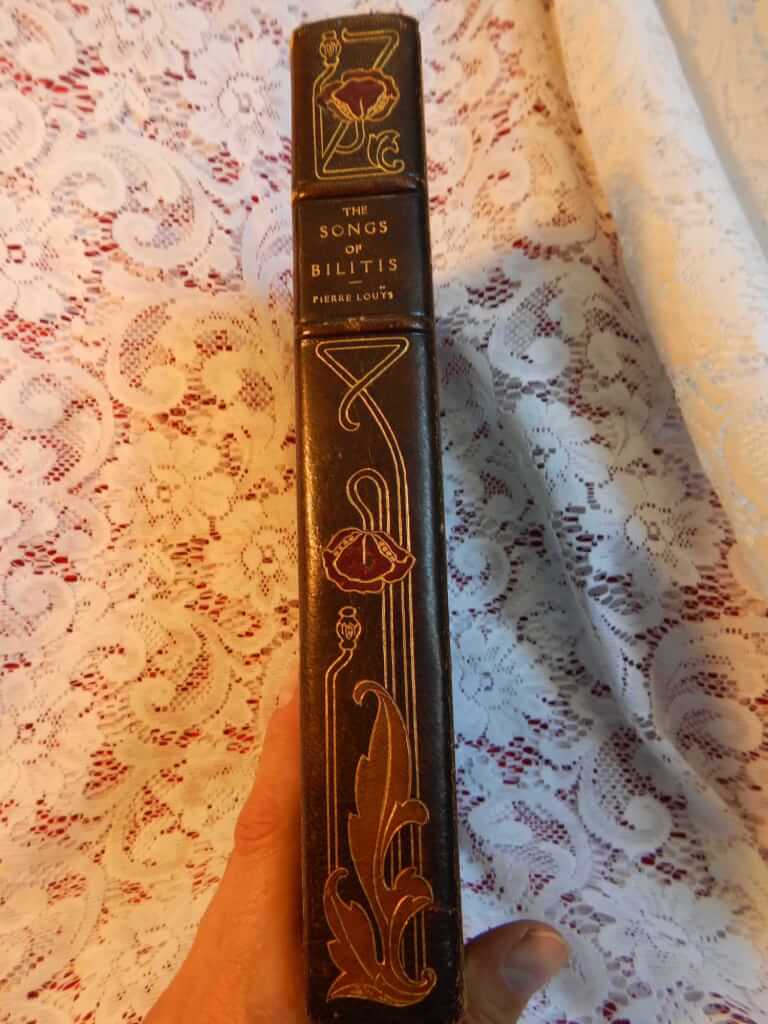
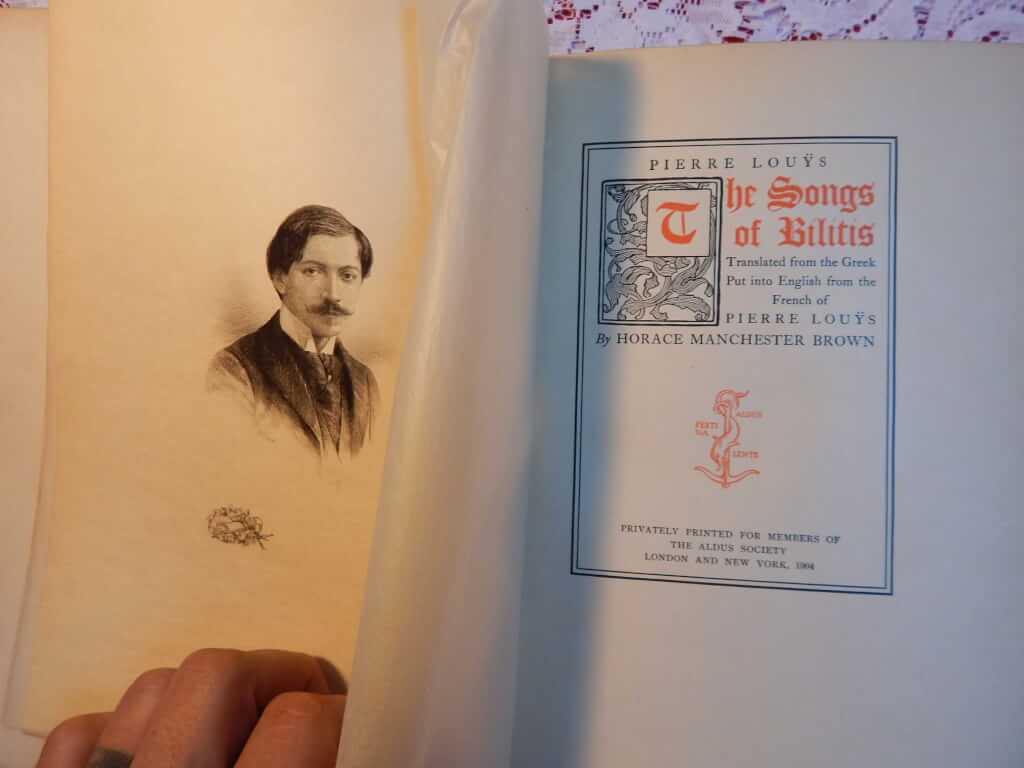 The Songs of Bilitis, Translated from the Greek, Put into English from the French of Pierre Louys by Horace Manchester Brown, illust. James Fagan (Privately Printed for Members of the Aldus Society, London and New York, 1904, #30/971) 7.25"x10.25", 341pp., 3/4 blue leather over blue boards, gilt decorations on boards, gilt titles and gilt and color decorations on spine, marbled boards, top edge gilt, other edges deckled, frontispiece portrait of author and two original etchings by James Fagan, good+ condition for age, some rubbing on spine and bumping to corners. Early (first?) translation of Les Chansons de Bilitis, rare and beautifully bound english translation of this classic in lesbian literature. The Songs of Bilitis (Les Chansons de Bilitis) is a collection of erotic, essentially lesbian, poetry by Pierre Louÿs published in Paris in 1894. Since Louÿs claimed that he had translated the original poetry from Ancient Greek, this work is considered a pseudotranslation. The poems are in the manner of Sappho; the collection's introduction claims they were found on the walls of a tomb in Cyprus, written by a woman of Ancient Greece called Bilitis, a courtesan and contemporary of Sappho to whose life Louÿs dedicated a small section of the book. On publication, the volume deceived even the most expert of scholars. Louÿs claimed the 143 prose poems, excluding 3 epitaphs, were entirely the work of this ancient poet — a place where she poured both her most intimate thoughts and most public actions, from childhood innocence in Pamphylia to the loneliness and chagrin of her later years. Although for the most part The Songs of Bilitis is original work, many of the poems were reworked epigrams from the Palatine Anthology, and Louÿs even borrowed some verses from Sappho herself. The poems are a blend of mellow sensuality and polished style in the manner of the Parnassian school, but underneath run subtle Gallic undertones that Louÿs could never escape. To lend authenticity to the forgery, Louÿs in the index listed some poems as "untranslated"; he even craftily fabricated an entire section of his book called "The Life of Bilitis", crediting a certain fictional archaeologist Herr G. Heim ("Mr. C. Cret" in German) as the discoverer of Bilitis' tomb. And though Louÿs displayed great knowledge of Ancient Greek culture, ranging from children's games in "Tortie Tortue" to application of scents in "Perfumes", the literary fraud was eventually exposed. This did little, however, to taint their literary value in readers' eyes, and Louÿs' open and sympathetic celebration of lesbian sexuality earned him sensation and historic significance.
The Songs of Bilitis, Translated from the Greek, Put into English from the French of Pierre Louys by Horace Manchester Brown, illust. James Fagan (Privately Printed for Members of the Aldus Society, London and New York, 1904, #30/971) 7.25"x10.25", 341pp., 3/4 blue leather over blue boards, gilt decorations on boards, gilt titles and gilt and color decorations on spine, marbled boards, top edge gilt, other edges deckled, frontispiece portrait of author and two original etchings by James Fagan, good+ condition for age, some rubbing on spine and bumping to corners. Early (first?) translation of Les Chansons de Bilitis, rare and beautifully bound english translation of this classic in lesbian literature. The Songs of Bilitis (Les Chansons de Bilitis) is a collection of erotic, essentially lesbian, poetry by Pierre Louÿs published in Paris in 1894. Since Louÿs claimed that he had translated the original poetry from Ancient Greek, this work is considered a pseudotranslation. The poems are in the manner of Sappho; the collection's introduction claims they were found on the walls of a tomb in Cyprus, written by a woman of Ancient Greece called Bilitis, a courtesan and contemporary of Sappho to whose life Louÿs dedicated a small section of the book. On publication, the volume deceived even the most expert of scholars. Louÿs claimed the 143 prose poems, excluding 3 epitaphs, were entirely the work of this ancient poet — a place where she poured both her most intimate thoughts and most public actions, from childhood innocence in Pamphylia to the loneliness and chagrin of her later years. Although for the most part The Songs of Bilitis is original work, many of the poems were reworked epigrams from the Palatine Anthology, and Louÿs even borrowed some verses from Sappho herself. The poems are a blend of mellow sensuality and polished style in the manner of the Parnassian school, but underneath run subtle Gallic undertones that Louÿs could never escape. To lend authenticity to the forgery, Louÿs in the index listed some poems as "untranslated"; he even craftily fabricated an entire section of his book called "The Life of Bilitis", crediting a certain fictional archaeologist Herr G. Heim ("Mr. C. Cret" in German) as the discoverer of Bilitis' tomb. And though Louÿs displayed great knowledge of Ancient Greek culture, ranging from children's games in "Tortie Tortue" to application of scents in "Perfumes", the literary fraud was eventually exposed. This did little, however, to taint their literary value in readers' eyes, and Louÿs' open and sympathetic celebration of lesbian sexuality earned him sensation and historic significance. -
 Venus in Furs, Leopold von Sacher-Masoch, trans. Fernanda Savage (Privately Printed For Subscirbers Only. 1921, [first english translation?] limited first edition thus, #400/1225) Venus in Furs (German: Venus im Pelz) is a novella by Leopold Ritter von Sacher-Masoch (1836-1895), an Austrian writer and journalist. It is now his best known work and because of its themes the term masochism is derived from his name, coined by the Austrian psychiatrist, Krafft-Ebing. The novel was to be part of an epic series that Sacher-Masoch envisioned called Legacy of Cain. Venus in Furs was part of Love, the first volume of the series. It was published in 1870. The novel draws themes, like female dominance and sadomasochism, and character inspiration heavily from Sacher-Masoch's own life. Wanda von Dunajew, the novel's central female character, was modelled after his mistress Baroness Fanny Pistor. In December 1869 the two signed a contract making him her slave for a period of 6 months. In 1873, after the publication of Venus in Furs, Sacher-Masoch married Aurora von Rümelin who he pressured to continue the lifestyle he wrote about in his book. After 10 years they divorced. Rümelin, using the pseudonym of the books title character, "Wanda von Dunajew", wrote Meine Lebensbeichte (My Life Confession) published in 1906. It detailed Sacher-Masoch's private life and her relationship with him. During his lifetime, Sacher-Masoch was well known as a man of letters, a utopian thinker who espoused socialist and humanist ideals in his fiction and non-fiction. Most of his works remain untranslated into English. Until recently, his novel Venus in Furs was his only book commonly available in English.
Venus in Furs, Leopold von Sacher-Masoch, trans. Fernanda Savage (Privately Printed For Subscirbers Only. 1921, [first english translation?] limited first edition thus, #400/1225) Venus in Furs (German: Venus im Pelz) is a novella by Leopold Ritter von Sacher-Masoch (1836-1895), an Austrian writer and journalist. It is now his best known work and because of its themes the term masochism is derived from his name, coined by the Austrian psychiatrist, Krafft-Ebing. The novel was to be part of an epic series that Sacher-Masoch envisioned called Legacy of Cain. Venus in Furs was part of Love, the first volume of the series. It was published in 1870. The novel draws themes, like female dominance and sadomasochism, and character inspiration heavily from Sacher-Masoch's own life. Wanda von Dunajew, the novel's central female character, was modelled after his mistress Baroness Fanny Pistor. In December 1869 the two signed a contract making him her slave for a period of 6 months. In 1873, after the publication of Venus in Furs, Sacher-Masoch married Aurora von Rümelin who he pressured to continue the lifestyle he wrote about in his book. After 10 years they divorced. Rümelin, using the pseudonym of the books title character, "Wanda von Dunajew", wrote Meine Lebensbeichte (My Life Confession) published in 1906. It detailed Sacher-Masoch's private life and her relationship with him. During his lifetime, Sacher-Masoch was well known as a man of letters, a utopian thinker who espoused socialist and humanist ideals in his fiction and non-fiction. Most of his works remain untranslated into English. Until recently, his novel Venus in Furs was his only book commonly available in English. -

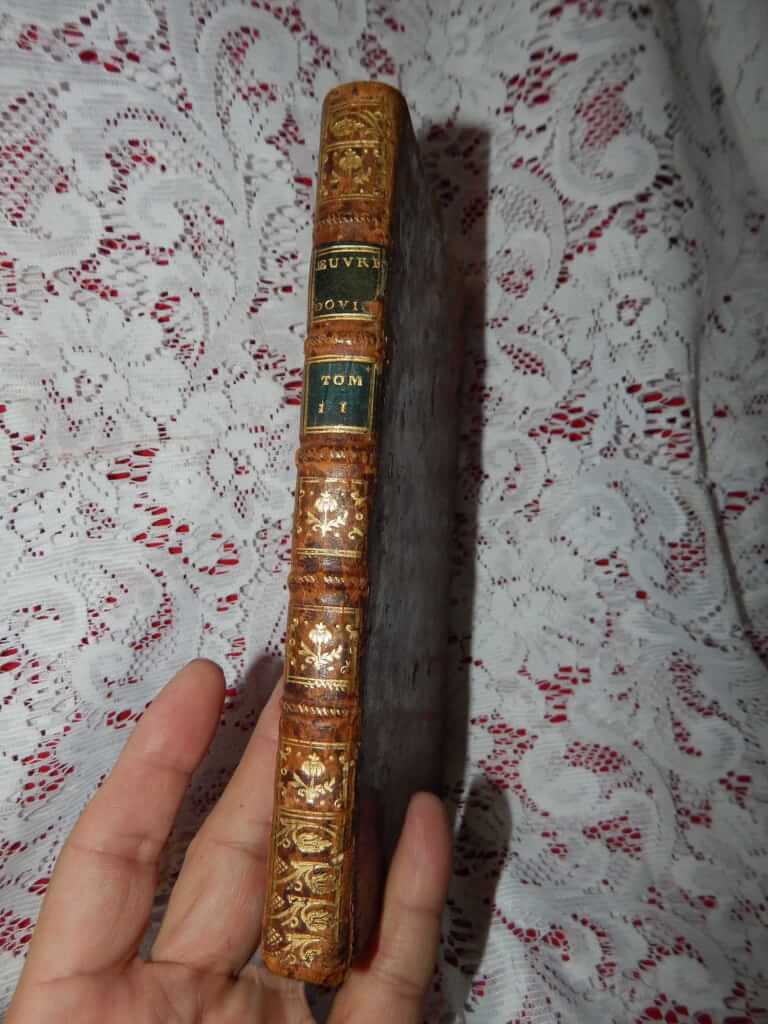 Les Œuvres Galantes et Amoureuses D'Ovide, contenant l'Art d'Aimer, le Remede d'Amour, les Épitre et les Élégies amoureuses, Nouvelle Édition (Vol 2 only of 2) (A Cythere, Aux Dépens du Loisir, 1774) 5"x8", 204pp, full calf, gilt titles and decorations to spine, 5 raised bands, marbled boards, good+ condition 2nd volume only beautifully bound, this volume contains the Art of Love, the Remedy of Love, the Letters and Elegies in Love, New Edition (Vol 2 only of 2) Publius Ovidius Naso (43 BC – AD 17/18), known as Ovid in the English-speaking world, was a Roman poet who lived during the reign of Augustus. He was a contemporary of the older Virgil and Horace, with whom he is often ranked as one of the three canonical poets of Latin literature. The Imperial scholar Quintilian considered him the last of the Latin love elegists. He enjoyed enormous popularity, but, in one of the mysteries of literary history, was sent by Augustus into exile in a remote province on the Black Sea, where he remained until his death. Ovid himself attributes his exile to carmen et error, "a poem and a mistake", but his discretion in discussing the causes has resulted in much speculation among scholars. The first major Roman poet to begin his career during the reign of Augustus, Ovid is today best known for the Metamorphoses, a 15-book continuous mythological narrative written in the meter of epic, and for works in elegiac couplets such as Ars Amatoria ("The Art of Love") and Fasti. His poetry was much imitated during Late Antiquity and the Middle Ages, and greatly influenced Western art and literature. The Metamorphoses remains one of the most important sources of classical mythology.
Les Œuvres Galantes et Amoureuses D'Ovide, contenant l'Art d'Aimer, le Remede d'Amour, les Épitre et les Élégies amoureuses, Nouvelle Édition (Vol 2 only of 2) (A Cythere, Aux Dépens du Loisir, 1774) 5"x8", 204pp, full calf, gilt titles and decorations to spine, 5 raised bands, marbled boards, good+ condition 2nd volume only beautifully bound, this volume contains the Art of Love, the Remedy of Love, the Letters and Elegies in Love, New Edition (Vol 2 only of 2) Publius Ovidius Naso (43 BC – AD 17/18), known as Ovid in the English-speaking world, was a Roman poet who lived during the reign of Augustus. He was a contemporary of the older Virgil and Horace, with whom he is often ranked as one of the three canonical poets of Latin literature. The Imperial scholar Quintilian considered him the last of the Latin love elegists. He enjoyed enormous popularity, but, in one of the mysteries of literary history, was sent by Augustus into exile in a remote province on the Black Sea, where he remained until his death. Ovid himself attributes his exile to carmen et error, "a poem and a mistake", but his discretion in discussing the causes has resulted in much speculation among scholars. The first major Roman poet to begin his career during the reign of Augustus, Ovid is today best known for the Metamorphoses, a 15-book continuous mythological narrative written in the meter of epic, and for works in elegiac couplets such as Ars Amatoria ("The Art of Love") and Fasti. His poetry was much imitated during Late Antiquity and the Middle Ages, and greatly influenced Western art and literature. The Metamorphoses remains one of the most important sources of classical mythology. -
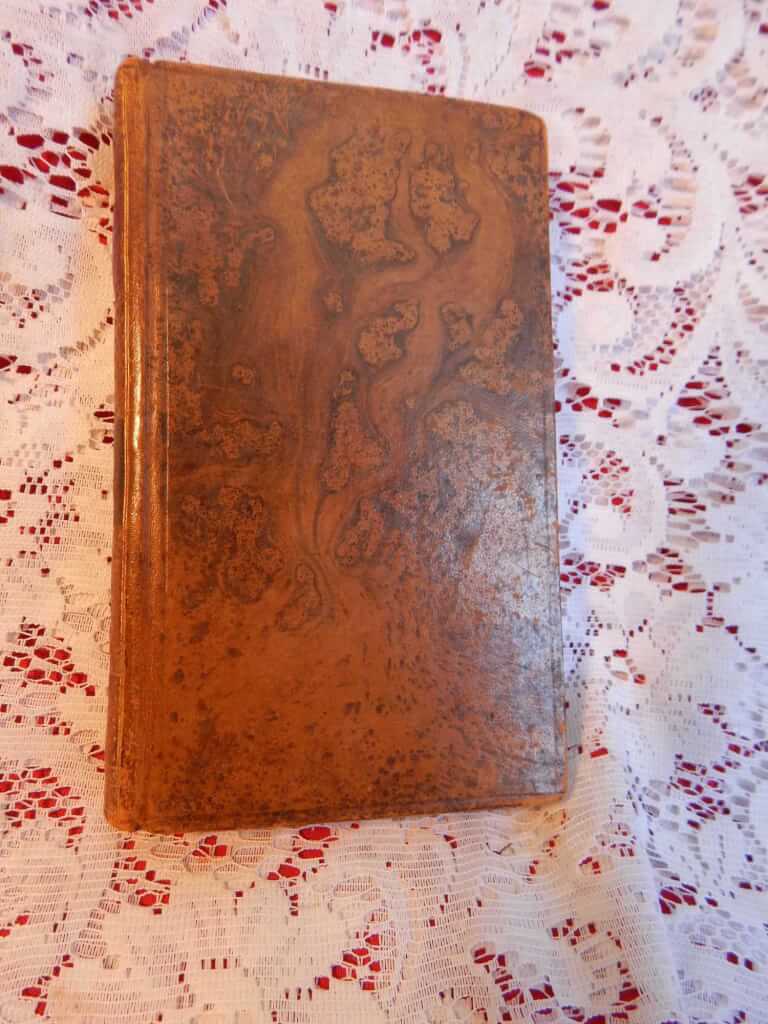
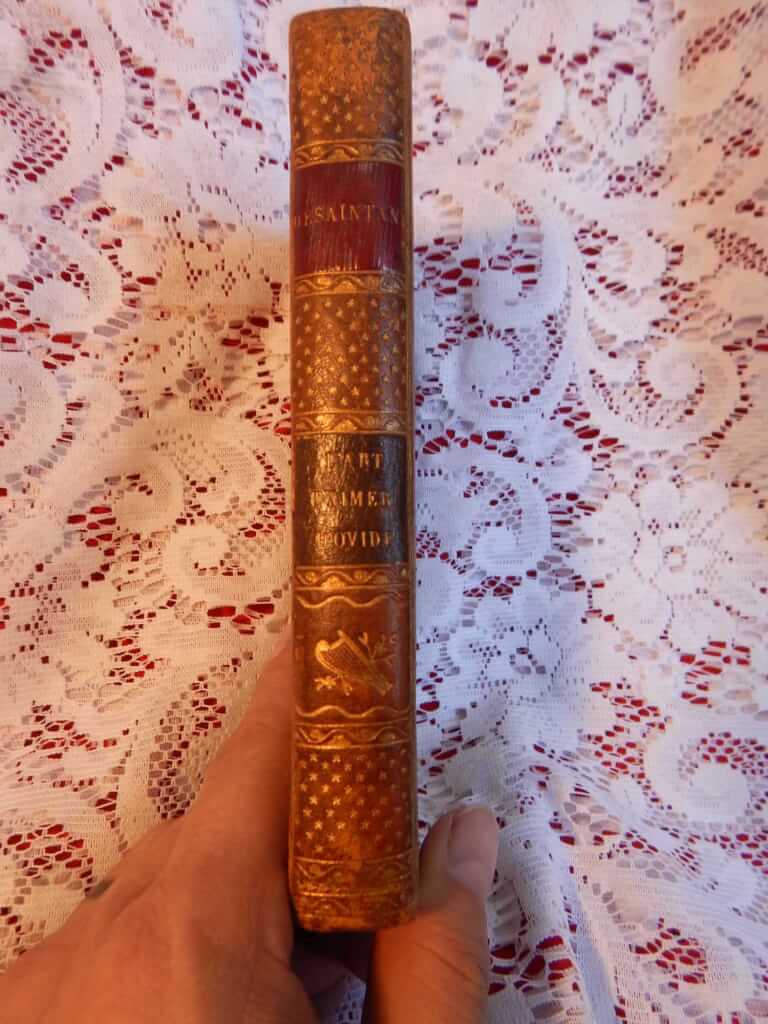 L'art d'aimer d'Ovide, traduction en vers, avec des remarques par M. Desaintange (Chez Giguet et Michaud, Paris, 1807, first edition of translation) 5"x8", 320pp, full calf, gilt titles and decorations to spine, marbled boards, some rubbing and bumping, good+ condition for age, finely engraved frontispiece, unknown artist French language translation by Saint-Ange of Ovid's The Art of Love. Publius Ovidius Naso (43 BC – AD 17/18), known as Ovid in the English-speaking world, was a Roman poet who lived during the reign of Augustus. He was a contemporary of the older Virgil and Horace, with whom he is often ranked as one of the three canonical poets of Latin literature. The Imperial scholar Quintilian considered him the last of the Latin love elegists. He enjoyed enormous popularity, but, in one of the mysteries of literary history, was sent by Augustus into exile in a remote province on the Black Sea, where he remained until his death. Ovid himself attributes his exile to carmen et error, "a poem and a mistake", but his discretion in discussing the causes has resulted in much speculation among scholars. The first major Roman poet to begin his career during the reign of Augustus, Ovid is today best known for the Metamorphoses, a 15-book continuous mythological narrative written in the meter of epic, and for works in elegiac couplets such as Ars Amatoria ("The Art of Love") and Fasti. His poetry was much imitated during Late Antiquity and the Middle Ages, and greatly influenced Western art and literature. The Metamorphoses remains one of the most important sources of classical mythology. Ange-François Fariau de Saint-Ange (1747-1810), known as Saint-Ange was a French poet and translator. Born of a father adviser of the king, he studied at the collège des jésuites de Blois, then at the college Sainte-Barbe de Paris. He acquired from a young age a reputation for his his unparalleled wit. Protected by Turgot, he gained a place in general control, but found himself without resources in the Revolution. At the fall of Robespierre, he found a job in the clothing agency of the troops, then became then professor of belles-lettres, then of general and reasoned grammar, with the central school of the street Saint-Antoine. He was elected member of the French Academy in 1810. In his reception speech, sensing that his shaky health would not allow him to sit there for a long time, he declared: "I am doing violence, at this moment, to the continual suffering and intolerable who warn me that the shadow of the academician whom I replace is waiting for mine. Three months later, he suffered a fall and died while visiting the institute.
L'art d'aimer d'Ovide, traduction en vers, avec des remarques par M. Desaintange (Chez Giguet et Michaud, Paris, 1807, first edition of translation) 5"x8", 320pp, full calf, gilt titles and decorations to spine, marbled boards, some rubbing and bumping, good+ condition for age, finely engraved frontispiece, unknown artist French language translation by Saint-Ange of Ovid's The Art of Love. Publius Ovidius Naso (43 BC – AD 17/18), known as Ovid in the English-speaking world, was a Roman poet who lived during the reign of Augustus. He was a contemporary of the older Virgil and Horace, with whom he is often ranked as one of the three canonical poets of Latin literature. The Imperial scholar Quintilian considered him the last of the Latin love elegists. He enjoyed enormous popularity, but, in one of the mysteries of literary history, was sent by Augustus into exile in a remote province on the Black Sea, where he remained until his death. Ovid himself attributes his exile to carmen et error, "a poem and a mistake", but his discretion in discussing the causes has resulted in much speculation among scholars. The first major Roman poet to begin his career during the reign of Augustus, Ovid is today best known for the Metamorphoses, a 15-book continuous mythological narrative written in the meter of epic, and for works in elegiac couplets such as Ars Amatoria ("The Art of Love") and Fasti. His poetry was much imitated during Late Antiquity and the Middle Ages, and greatly influenced Western art and literature. The Metamorphoses remains one of the most important sources of classical mythology. Ange-François Fariau de Saint-Ange (1747-1810), known as Saint-Ange was a French poet and translator. Born of a father adviser of the king, he studied at the collège des jésuites de Blois, then at the college Sainte-Barbe de Paris. He acquired from a young age a reputation for his his unparalleled wit. Protected by Turgot, he gained a place in general control, but found himself without resources in the Revolution. At the fall of Robespierre, he found a job in the clothing agency of the troops, then became then professor of belles-lettres, then of general and reasoned grammar, with the central school of the street Saint-Antoine. He was elected member of the French Academy in 1810. In his reception speech, sensing that his shaky health would not allow him to sit there for a long time, he declared: "I am doing violence, at this moment, to the continual suffering and intolerable who warn me that the shadow of the academician whom I replace is waiting for mine. Three months later, he suffered a fall and died while visiting the institute. -
Out of stock
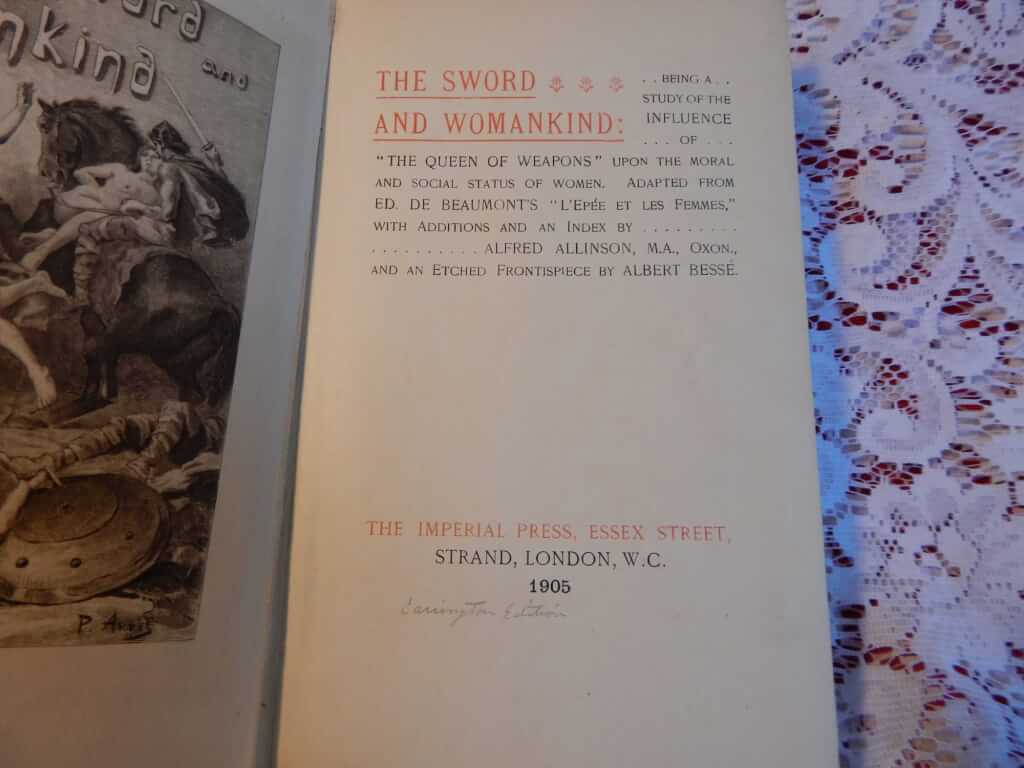
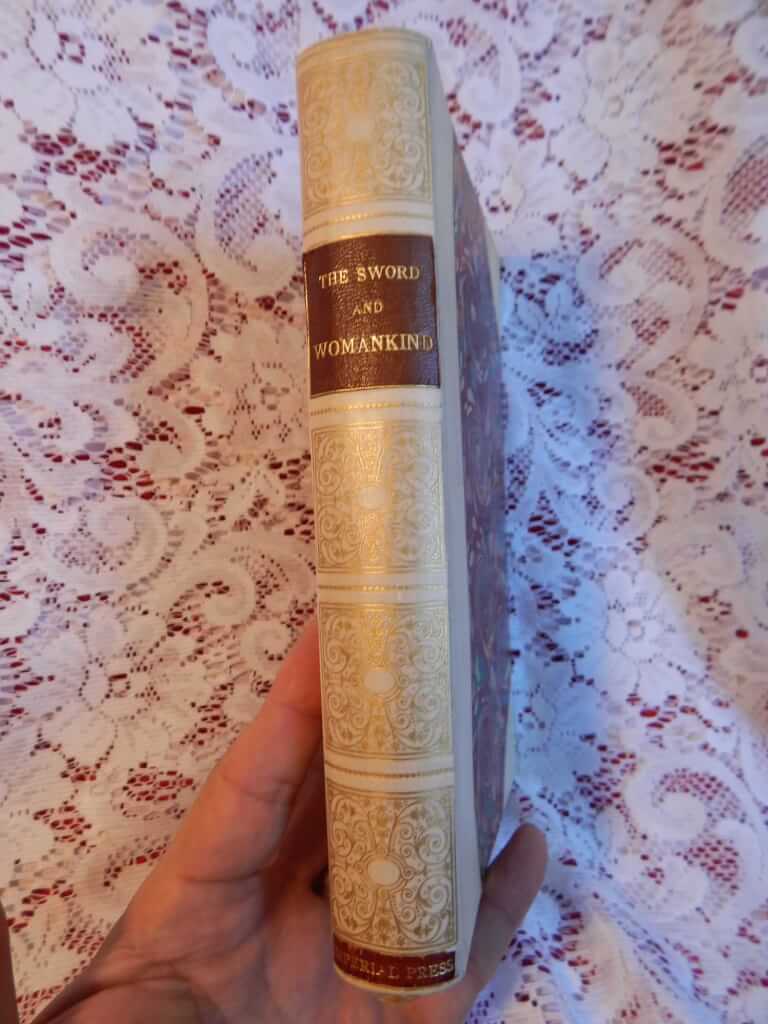 The Sword and Womankind: being a study of the influence of "The Queen of Wepons" upon the moral and social status of women. Adapted from Ed. de Beauont's "L'Epée et les Femmes," with addtions and an index by Alfred Allinson, M.A. Oxon., and an etched frontispiece by Albert Bessé, [frontispiece actually by Paul Avril, engraved by E. Leon] (The Imperial Press [Charles Carrington], Essex Street, Strand, London, W.C., 1905, #487/1000) 5.75"x8.75", xx+410pp, 1/2 while vellum over marbled boards, gilt title and decorations on spine, marbled endpapers, top edge gilt others deckled, frontispiece features a rare Paul Avril print and NOT Albert Bessé, numerous notes written lightly in margins in pencil, ribbon present, near fine copy, owner's ex libris stamp is evident on a few pages Beaumont, with a characteristic French point of view, believes in a feminine interpretation of history - which is, that all important historic events are caused by women. But unlike most Frenchmen he believed that all such events are caused by naughty women. This is a history of those women, adapted from the original French. Sample chapters: In barbarous ages woman is a divinity - Frea, the Scandinavian Venus; Swordsmen become the agents of women's sexual excesses - public defiances concerning harlots; Debauchery during the crusades - chivalry modified by oriental passions; New ways of love and dalliance - interest in salacious art. History of consequences of gender and sex including degradation of women, concubines, chastity belts, prostitutes, debauchery during crusades, erotic literature, duelists, cavaliers, orgies, etc. The book repeatedly advises that it is privately printed for subscribers only which was a legal fiction designed to get around obscenity laws prohibiting the public sale of such books. Édouard-Henri Avril (1849-1928) used the pseudonym “Paul Avril” for his erotic work. He was a French painter and commercial artist. His career saw collaboration with influential people like Octave Uzanne, Henry Spencer Ashbee and Friedrich Karl Forberg. He is one of the most celebrated erotic artists of his age. Avril was a soldier before starting his career in art. He was awarded with the Legion of Honour for his actions in the Franco-Prussian War.
The Sword and Womankind: being a study of the influence of "The Queen of Wepons" upon the moral and social status of women. Adapted from Ed. de Beauont's "L'Epée et les Femmes," with addtions and an index by Alfred Allinson, M.A. Oxon., and an etched frontispiece by Albert Bessé, [frontispiece actually by Paul Avril, engraved by E. Leon] (The Imperial Press [Charles Carrington], Essex Street, Strand, London, W.C., 1905, #487/1000) 5.75"x8.75", xx+410pp, 1/2 while vellum over marbled boards, gilt title and decorations on spine, marbled endpapers, top edge gilt others deckled, frontispiece features a rare Paul Avril print and NOT Albert Bessé, numerous notes written lightly in margins in pencil, ribbon present, near fine copy, owner's ex libris stamp is evident on a few pages Beaumont, with a characteristic French point of view, believes in a feminine interpretation of history - which is, that all important historic events are caused by women. But unlike most Frenchmen he believed that all such events are caused by naughty women. This is a history of those women, adapted from the original French. Sample chapters: In barbarous ages woman is a divinity - Frea, the Scandinavian Venus; Swordsmen become the agents of women's sexual excesses - public defiances concerning harlots; Debauchery during the crusades - chivalry modified by oriental passions; New ways of love and dalliance - interest in salacious art. History of consequences of gender and sex including degradation of women, concubines, chastity belts, prostitutes, debauchery during crusades, erotic literature, duelists, cavaliers, orgies, etc. The book repeatedly advises that it is privately printed for subscribers only which was a legal fiction designed to get around obscenity laws prohibiting the public sale of such books. Édouard-Henri Avril (1849-1928) used the pseudonym “Paul Avril” for his erotic work. He was a French painter and commercial artist. His career saw collaboration with influential people like Octave Uzanne, Henry Spencer Ashbee and Friedrich Karl Forberg. He is one of the most celebrated erotic artists of his age. Avril was a soldier before starting his career in art. He was awarded with the Legion of Honour for his actions in the Franco-Prussian War. -
Out of stock
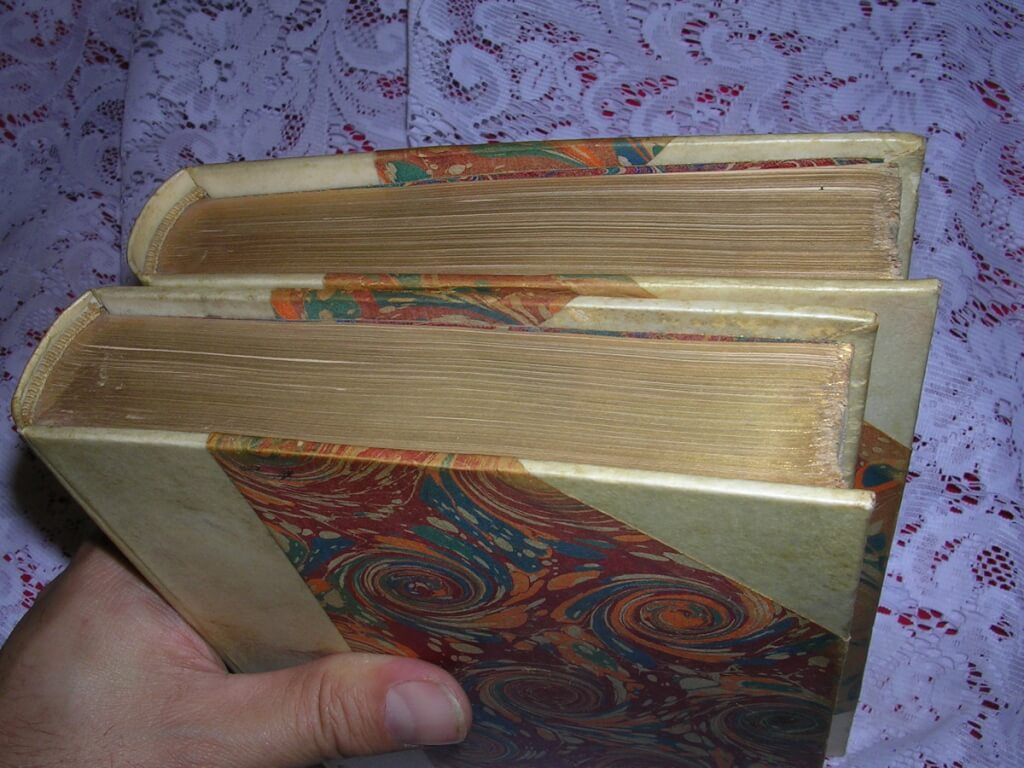
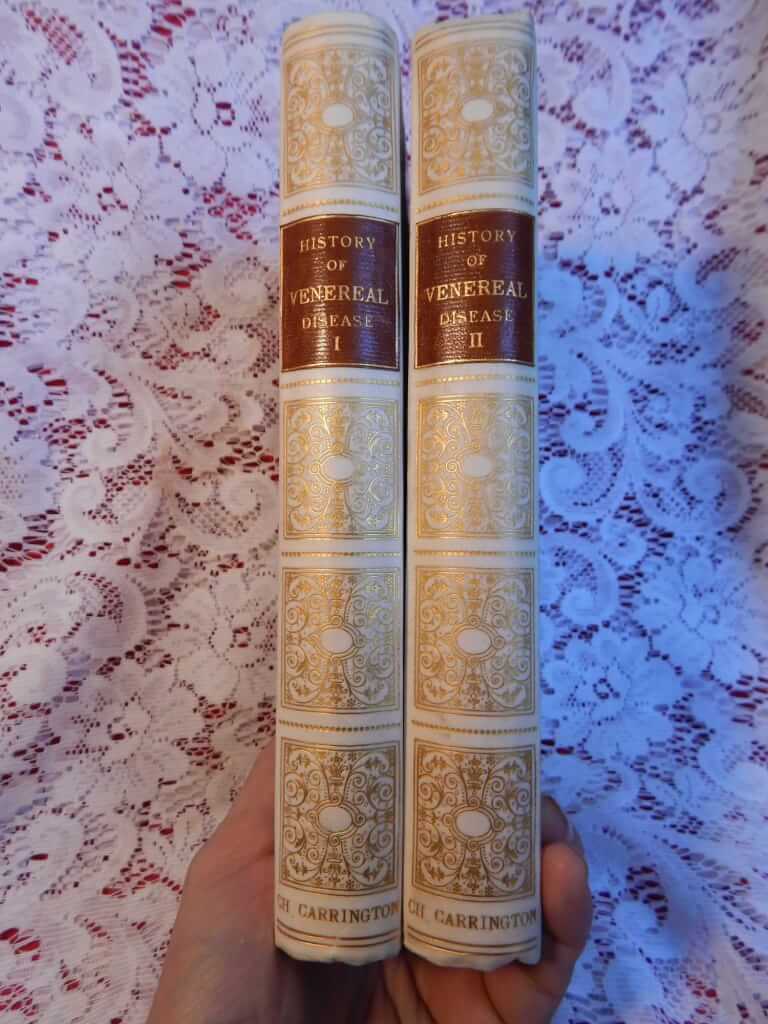 Dr. Julius Rosenbaum, trans. (from German) by "An Oxford M.A." (Charles Carrington, Paris, 1901) 9" X 5.5" 2 vol., xxxvi 297pp. (3 pages of ads), v. 342pp. Hardbound 1/2-bound in vellum over decorated boards, gilt lettering on spine, top edge gilt, other edges deckle. Marlbled endpapers. Very good condition, binding tight #84/500
Dr. Julius Rosenbaum, trans. (from German) by "An Oxford M.A." (Charles Carrington, Paris, 1901) 9" X 5.5" 2 vol., xxxvi 297pp. (3 pages of ads), v. 342pp. Hardbound 1/2-bound in vellum over decorated boards, gilt lettering on spine, top edge gilt, other edges deckle. Marlbled endpapers. Very good condition, binding tight #84/500 -
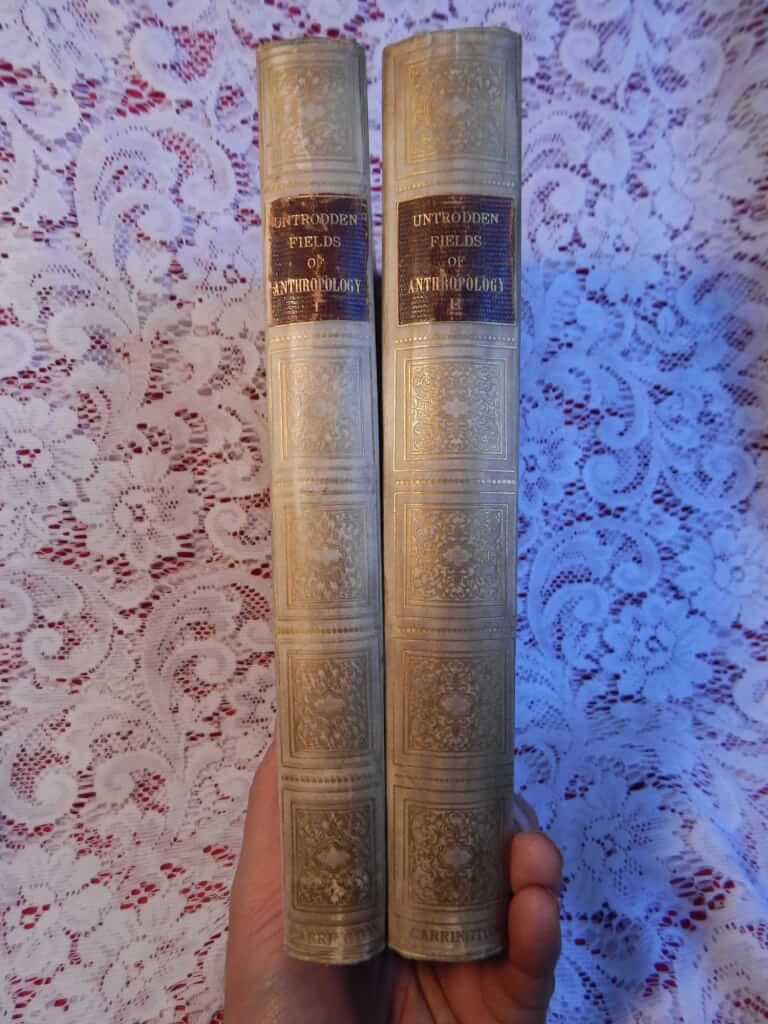
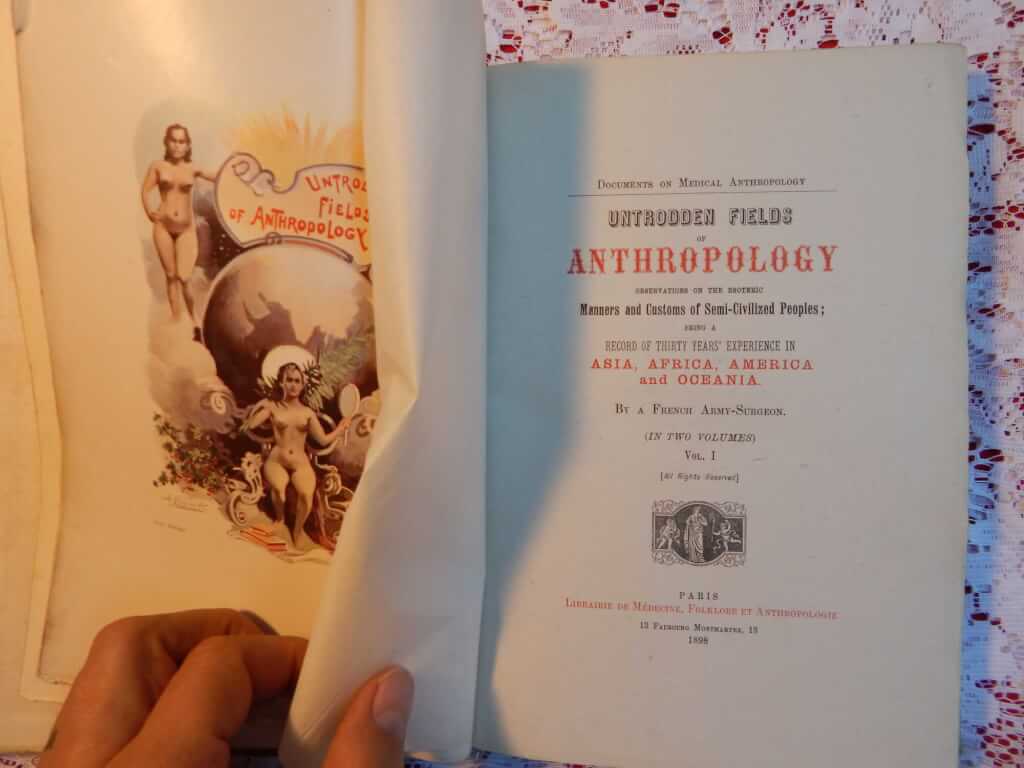 Documents on Medical Anthropology | Untrodden Fields of Anthropology | observations on the esoteric Manners and Customs of Semi-Civilized Peoples; being a record of thirty years' experience in asia, africa, america, and oceana., "By a French Army-Surgeon [in later books identified as "Jacobus X.."] (Charles Carrington, Paris, 1898, "second enlarged and revised edition [was there a first?]", #52/150, "printed on papier de chine") 7"x10" 2 vol., xl+ 341pp, xiv+502pp, Hardbound with paper wrappers inside, 1/2-bound in vellum over marbled boards, gilt lettering on spine, top edge gilt, other edges deckle/uncut, fine hand-laid paper, marlbled endpapers, binding tight, color frontispiece and numerous B&W full page engravings with descriptive tissue guards, very rare copy, bookplates of Frederic Roa This work of ''anthropology'' seems in fact intended to serve the purposes of titillation with its detailed descriptions of exotic sexual practices. Also present in this edition (to be presumably studied) are illustrations of naked women from all over the world. This is a rare book, often mentioned but not seen.
Documents on Medical Anthropology | Untrodden Fields of Anthropology | observations on the esoteric Manners and Customs of Semi-Civilized Peoples; being a record of thirty years' experience in asia, africa, america, and oceana., "By a French Army-Surgeon [in later books identified as "Jacobus X.."] (Charles Carrington, Paris, 1898, "second enlarged and revised edition [was there a first?]", #52/150, "printed on papier de chine") 7"x10" 2 vol., xl+ 341pp, xiv+502pp, Hardbound with paper wrappers inside, 1/2-bound in vellum over marbled boards, gilt lettering on spine, top edge gilt, other edges deckle/uncut, fine hand-laid paper, marlbled endpapers, binding tight, color frontispiece and numerous B&W full page engravings with descriptive tissue guards, very rare copy, bookplates of Frederic Roa This work of ''anthropology'' seems in fact intended to serve the purposes of titillation with its detailed descriptions of exotic sexual practices. Also present in this edition (to be presumably studied) are illustrations of naked women from all over the world. This is a rare book, often mentioned but not seen. -
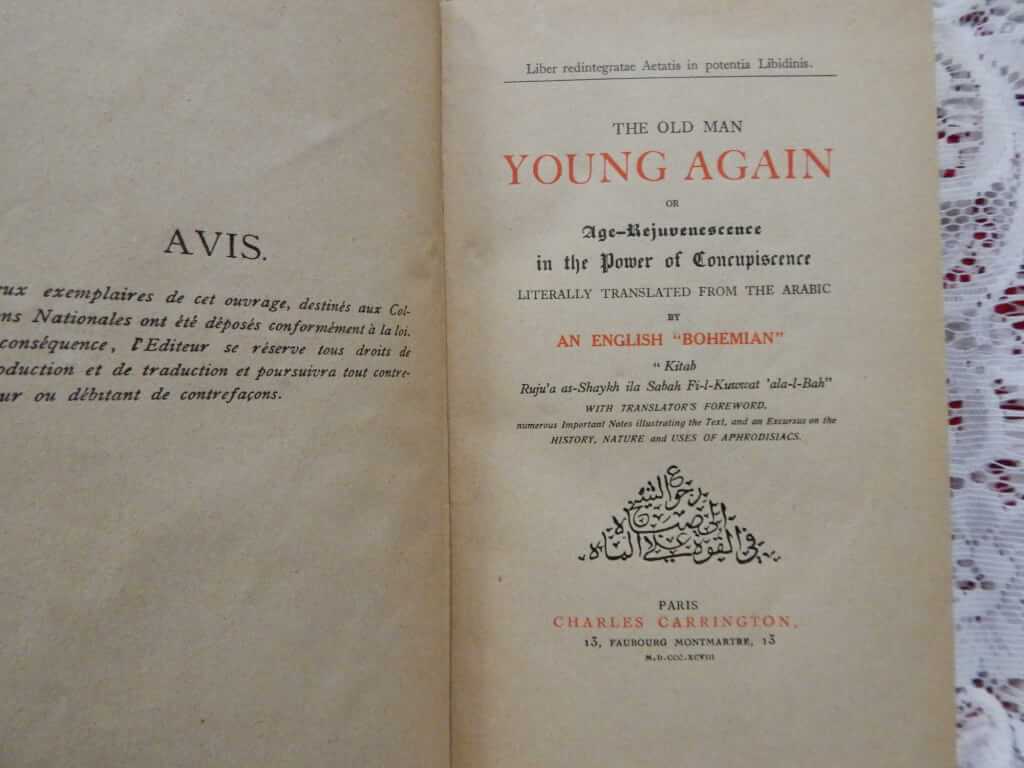
 The Old Man Young Again, or Age-Rejuvenescence in the Power of Concupiscence, [Ibn-I Kemal Pasa] "literally translated from the arabic by an English Bohemian" (Charles Carrington, Paris, 1898 [first edition]) 5.25"x8.5", xi 265pp, hard bound in brown boards with gilt titles over red on spine, pages uniformly yellowed, good condition for age, binding good A very rare translation of an arabic how-to sex manual with much emphasis on aphrodisiacs with a forward by Carrington. Very few copies of this Carrington publication still exist.
The Old Man Young Again, or Age-Rejuvenescence in the Power of Concupiscence, [Ibn-I Kemal Pasa] "literally translated from the arabic by an English Bohemian" (Charles Carrington, Paris, 1898 [first edition]) 5.25"x8.5", xi 265pp, hard bound in brown boards with gilt titles over red on spine, pages uniformly yellowed, good condition for age, binding good A very rare translation of an arabic how-to sex manual with much emphasis on aphrodisiacs with a forward by Carrington. Very few copies of this Carrington publication still exist. -
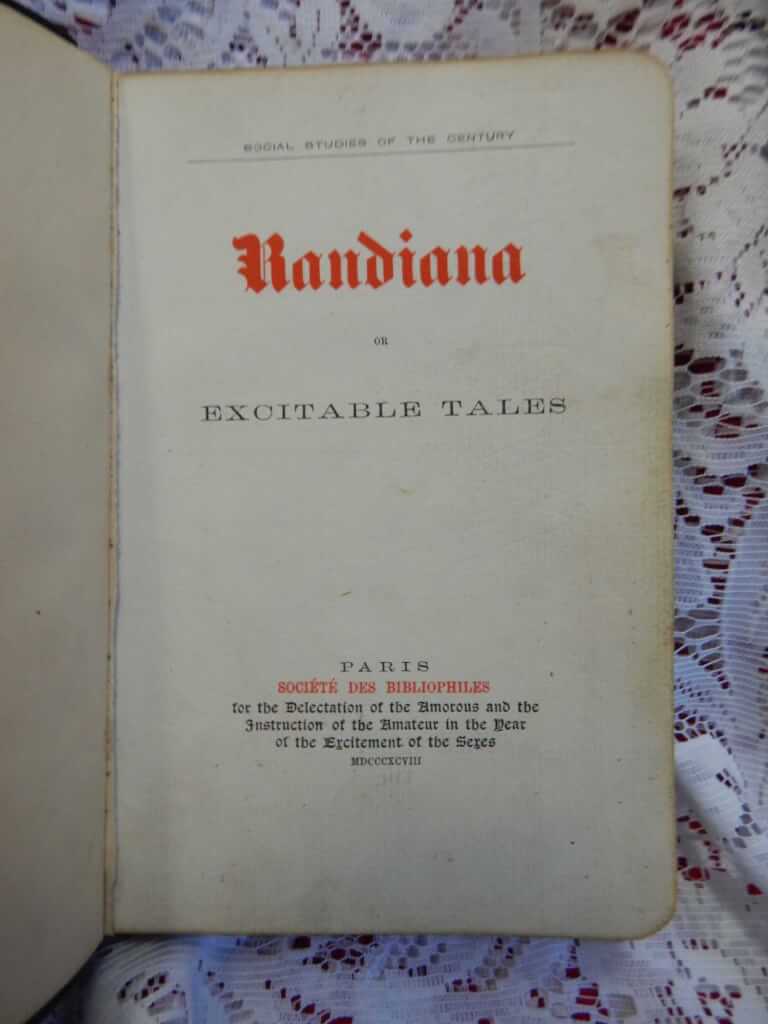
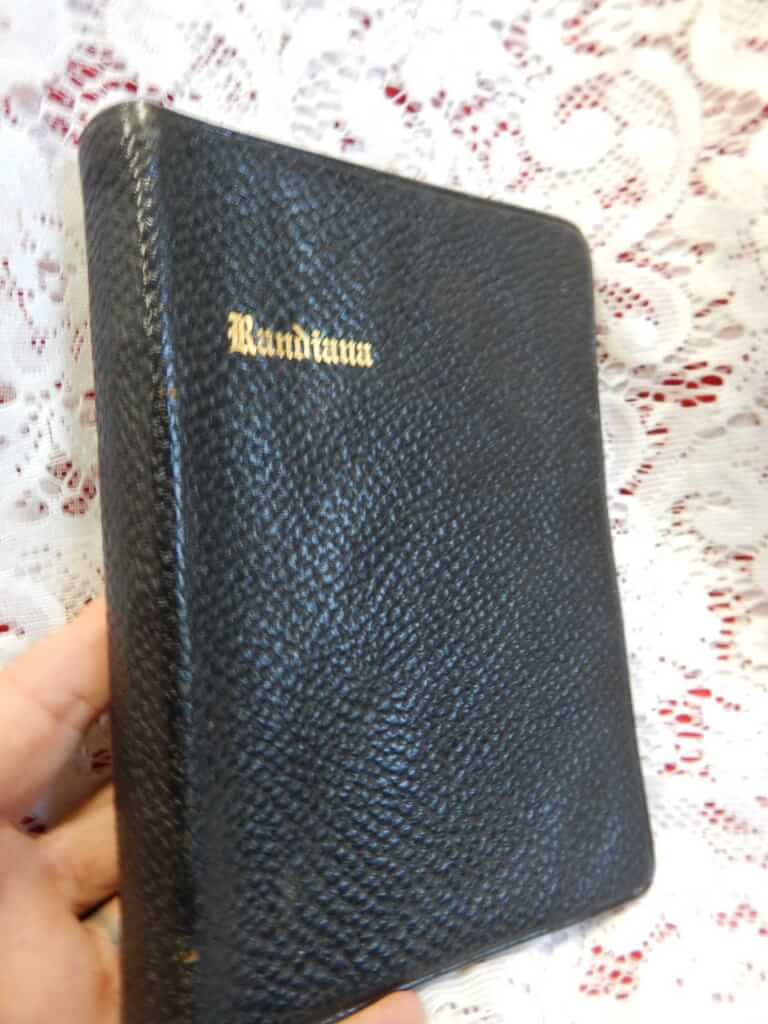 Randiana or Excitable Tales, (Société des Bibliophiles [actually Charles Carrington, as part of the stated "Social Studies of the Century" series, reads "for the Delectation of the Amorous and the Instruction of the Amateur in the year of the Excitement of the Sexes". This exact edition is different than mentioned in Mendez.], 1898 5.25"x7.75", 142pp, bound in soft bible-like leather, decorated endpapers, printed on Van Gelder hand-laid paper cut with rounded corners (also bible-like), pages 55-60 loose, otherwise good condition for age, rare and uniquely presented edition of this very erotic work. Randiana, or Excitable Tales is an anonymously written pornographic novel originally published by William Lazenby in 1884. The book depicts a variety of sexual activities, including incest, defloration and lesbianism. From an 1899 ad: "... A Rare Lascivious English Classic! … this is a book written by an English gentleman of considerable wit, command of language, and an imagination of Rabelaisian order. Erotic as are these tales, they are far from being filthy, while a plot of thrilling interest runs throughout the work, binding all the stories together, as with chains of gold. Each story is complete in itself and yet… incomplete without the rest. The events narrated too, are all perfectly natural and might have occurred to any coynte-hunter besides James CLINTON. The story of flagellation is most exciting; “The effects of shell-fish” simply delightful; and the glorious circumvention of proud, cold, haughty, fine-limbed Lady LEVERSON’S dearly guarded chastity, is simply rapturous - one can almost see the movings of her mighty snow-white buttocks, hear her delightful cries, gasps, murmers, pantings of real pleasure, while she rolls, wriggles, jumps, throbs, becomes joy-delirious, as she is prodded by the powerful tool of the man bestriding her, and who has here been bold enough to put his experiences on record. Price £3.3s. P.S. - This book, until lately, was absolutely unfindable and, under the title of The Apotheosis of Prick,£18 was being asked for it."
Randiana or Excitable Tales, (Société des Bibliophiles [actually Charles Carrington, as part of the stated "Social Studies of the Century" series, reads "for the Delectation of the Amorous and the Instruction of the Amateur in the year of the Excitement of the Sexes". This exact edition is different than mentioned in Mendez.], 1898 5.25"x7.75", 142pp, bound in soft bible-like leather, decorated endpapers, printed on Van Gelder hand-laid paper cut with rounded corners (also bible-like), pages 55-60 loose, otherwise good condition for age, rare and uniquely presented edition of this very erotic work. Randiana, or Excitable Tales is an anonymously written pornographic novel originally published by William Lazenby in 1884. The book depicts a variety of sexual activities, including incest, defloration and lesbianism. From an 1899 ad: "... A Rare Lascivious English Classic! … this is a book written by an English gentleman of considerable wit, command of language, and an imagination of Rabelaisian order. Erotic as are these tales, they are far from being filthy, while a plot of thrilling interest runs throughout the work, binding all the stories together, as with chains of gold. Each story is complete in itself and yet… incomplete without the rest. The events narrated too, are all perfectly natural and might have occurred to any coynte-hunter besides James CLINTON. The story of flagellation is most exciting; “The effects of shell-fish” simply delightful; and the glorious circumvention of proud, cold, haughty, fine-limbed Lady LEVERSON’S dearly guarded chastity, is simply rapturous - one can almost see the movings of her mighty snow-white buttocks, hear her delightful cries, gasps, murmers, pantings of real pleasure, while she rolls, wriggles, jumps, throbs, becomes joy-delirious, as she is prodded by the powerful tool of the man bestriding her, and who has here been bold enough to put his experiences on record. Price £3.3s. P.S. - This book, until lately, was absolutely unfindable and, under the title of The Apotheosis of Prick,£18 was being asked for it." -
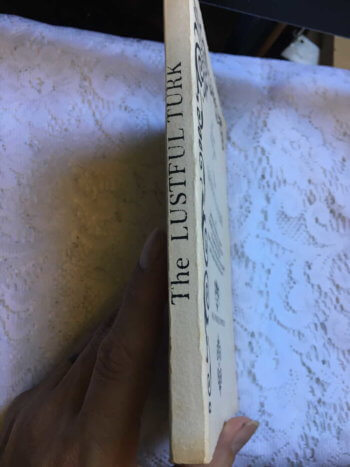
 The Amatory Adventures of The Lustful Turk | or | Lascivious Scenes from a Harem | faithfully and vividly depicted in a series of letters from a young and beautiful English lady to her cousin in England, Anonymous ("Paris: Privately Printed, 1904" [this is a later facsimile printing, np nd]) The Lustful Turk, or Lascivious Scenes from a Harem is a pre-Victorian British erotic epistolary novel first published anonymously in 1828. (although this edition says it is "signed 10th of April, 1868) However, it was not widely known or circulated until the 1893 edition. The novel consists largely of a series of letters written by its heroine, Emily Barlow, to her friend, Sylvia Carey. When Emily sails from England for India in June 1814 her ship is attacked by Moorish pirates and she is taken to the harem of Ali, Dey of Algiers. The Dey rapes her and subjects her to his will, awakening her sexual passions. Emily's debasement continues when the Dey insists on anal sex, arousing the horror of her correspondent Sylvia, who expresses her indignation at the Dey's behaviour, in a letter that the latter intercepts. Annoyed at her attitude, the Dey arranges for Sylvia to be abducted and brought to the slave market of Algiers. After an elaborate charade in which the Dey pretends to be a sympathetic Frenchman, bidding to save her from sexual slavery, and engaging her in a fake marriage, he deflowers her and awakens her sexuality, as he had done with Emily. Revealing his true identity the Dey enjoys both girls together. This sexual idyll is eventually terminated when a new addition to harem objects to anal rape and cuts off the Dey's penis with a knife, and then commits suicide. Seemingly unfazed by this, the Dey has "his lost members preserved in spirits of wine in glass vases" which he presents to Emily and Sylvia, sending them back to England with these tokens of his affection. The novel also incorporates interpolated stories concerning the erotic misadventures of three other girls abducted into the harem and enlarges on the fate of Emily's maid Eliza who, presented by the Dey to Muzra, Bey of Tunis, is bound, flogged and raped in turn.
The Amatory Adventures of The Lustful Turk | or | Lascivious Scenes from a Harem | faithfully and vividly depicted in a series of letters from a young and beautiful English lady to her cousin in England, Anonymous ("Paris: Privately Printed, 1904" [this is a later facsimile printing, np nd]) The Lustful Turk, or Lascivious Scenes from a Harem is a pre-Victorian British erotic epistolary novel first published anonymously in 1828. (although this edition says it is "signed 10th of April, 1868) However, it was not widely known or circulated until the 1893 edition. The novel consists largely of a series of letters written by its heroine, Emily Barlow, to her friend, Sylvia Carey. When Emily sails from England for India in June 1814 her ship is attacked by Moorish pirates and she is taken to the harem of Ali, Dey of Algiers. The Dey rapes her and subjects her to his will, awakening her sexual passions. Emily's debasement continues when the Dey insists on anal sex, arousing the horror of her correspondent Sylvia, who expresses her indignation at the Dey's behaviour, in a letter that the latter intercepts. Annoyed at her attitude, the Dey arranges for Sylvia to be abducted and brought to the slave market of Algiers. After an elaborate charade in which the Dey pretends to be a sympathetic Frenchman, bidding to save her from sexual slavery, and engaging her in a fake marriage, he deflowers her and awakens her sexuality, as he had done with Emily. Revealing his true identity the Dey enjoys both girls together. This sexual idyll is eventually terminated when a new addition to harem objects to anal rape and cuts off the Dey's penis with a knife, and then commits suicide. Seemingly unfazed by this, the Dey has "his lost members preserved in spirits of wine in glass vases" which he presents to Emily and Sylvia, sending them back to England with these tokens of his affection. The novel also incorporates interpolated stories concerning the erotic misadventures of three other girls abducted into the harem and enlarges on the fate of Emily's maid Eliza who, presented by the Dey to Muzra, Bey of Tunis, is bound, flogged and raped in turn. -
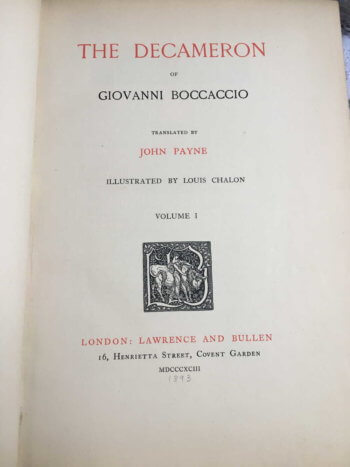
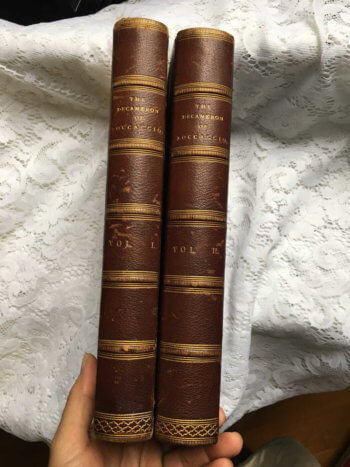 The Decameron of Giovanni Boccaccio, Giovanni Boccaccio, trans. John Payne, illust. Louis Chalon (Lawrence and Bullen, London, 1893, #32/1000 hand numbered, first edition thus) 11.25" X 7.5", 325pp 383pp, hardcover, half red morocco over red pebbled boards, gilt titles and decorations on spine, five raised bands, laid paper, top-edge gilt, marbled end papers, 15 full-page B&W Illustrations with tissue guards, good condition for age, some bumping to corners and slight wear, front endpapers on vol. 2 becoming detached but holding, a rare leather-bound copy of an low numbered limited edition. This is a beautifully leather-bound, nicely illustrated late nineteenth century edition of The Decameron from Lawrence and Bullen. The Decameron, (subtitled Prencipe Galeotto or Prince Galehaut), is a collection of novellas by the 14th-century Italian author Giovanni Boccaccio (1313–1375). The book is structured as a frame story containing 100 tales told by a group of seven young women and three young men sheltering in a secluded villa just outside Florence to escape the Black Death, which was afflicting the city. To make their exile more pleasant each of the ten tells the others one story every day. The Decameron records the narratives of ten days -- 100 stories. Boccaccio probably conceived of The Decameron after the epidemic of 1348, and completed it by 1353. These tales run the entire range of human emotion: grief, love, humor, anger, revenge. Many are based on oral folklore. Boccaccio's ten narrators thus retell already familiar stories about errant priests, rascally husbands, and mischievous wives. Variants of these stories are known in many cultures, but no one formulates them more cleverly or relates them more eloquently than does Boccaccio. In addition to its literary value and widespread influence, it provides a document of life at the time. Written in the vernacular of the Florentine language, it is considered a masterpiece of classical early Italian prose. Arthur Henry Bullen, often known as A. H. Bullen, (1857-1920) was an English editor and publisher, and a specialist in 16th and 17th century literature. His father George Bullen was librarian at the British Museum. A. H. Bullen's interest in Elizabethan dramatists and poets started at the City of London School, before he went to Worcester College, Oxford to study classics. His publishing career began with a scholarly edition of the Works of John Day in 1881 and continued with series of English Dramatists and a seven-volume set of Old English Plays, some of which he had discovered in manuscript and published for the first time. Bullen wrote more than 150 articles for the Dictionary of National Biography, lectured on Elizabethan dramatists at Oxford University and taught at Toynbee Hall. In 1891 he and H. W. Lawrence went into partnership as the publishers Lawrence & Bullen. This lasted until 1900 when Bullen moved on to publish as A. H. Bullen. With Frank Sidgwick as partner, he then formed the Shakespeare Head Press for which he is most known.
The Decameron of Giovanni Boccaccio, Giovanni Boccaccio, trans. John Payne, illust. Louis Chalon (Lawrence and Bullen, London, 1893, #32/1000 hand numbered, first edition thus) 11.25" X 7.5", 325pp 383pp, hardcover, half red morocco over red pebbled boards, gilt titles and decorations on spine, five raised bands, laid paper, top-edge gilt, marbled end papers, 15 full-page B&W Illustrations with tissue guards, good condition for age, some bumping to corners and slight wear, front endpapers on vol. 2 becoming detached but holding, a rare leather-bound copy of an low numbered limited edition. This is a beautifully leather-bound, nicely illustrated late nineteenth century edition of The Decameron from Lawrence and Bullen. The Decameron, (subtitled Prencipe Galeotto or Prince Galehaut), is a collection of novellas by the 14th-century Italian author Giovanni Boccaccio (1313–1375). The book is structured as a frame story containing 100 tales told by a group of seven young women and three young men sheltering in a secluded villa just outside Florence to escape the Black Death, which was afflicting the city. To make their exile more pleasant each of the ten tells the others one story every day. The Decameron records the narratives of ten days -- 100 stories. Boccaccio probably conceived of The Decameron after the epidemic of 1348, and completed it by 1353. These tales run the entire range of human emotion: grief, love, humor, anger, revenge. Many are based on oral folklore. Boccaccio's ten narrators thus retell already familiar stories about errant priests, rascally husbands, and mischievous wives. Variants of these stories are known in many cultures, but no one formulates them more cleverly or relates them more eloquently than does Boccaccio. In addition to its literary value and widespread influence, it provides a document of life at the time. Written in the vernacular of the Florentine language, it is considered a masterpiece of classical early Italian prose. Arthur Henry Bullen, often known as A. H. Bullen, (1857-1920) was an English editor and publisher, and a specialist in 16th and 17th century literature. His father George Bullen was librarian at the British Museum. A. H. Bullen's interest in Elizabethan dramatists and poets started at the City of London School, before he went to Worcester College, Oxford to study classics. His publishing career began with a scholarly edition of the Works of John Day in 1881 and continued with series of English Dramatists and a seven-volume set of Old English Plays, some of which he had discovered in manuscript and published for the first time. Bullen wrote more than 150 articles for the Dictionary of National Biography, lectured on Elizabethan dramatists at Oxford University and taught at Toynbee Hall. In 1891 he and H. W. Lawrence went into partnership as the publishers Lawrence & Bullen. This lasted until 1900 when Bullen moved on to publish as A. H. Bullen. With Frank Sidgwick as partner, he then formed the Shakespeare Head Press for which he is most known. -
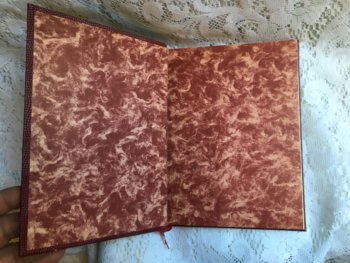
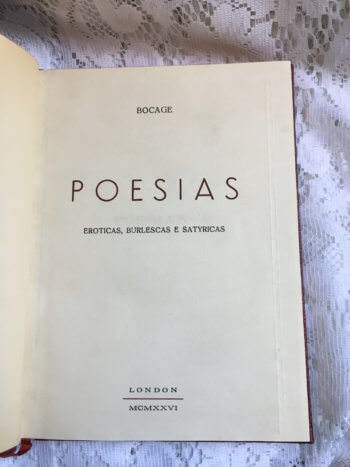 Poesias: eroticas, burlescas e satyricas, Bocage (Manuel Maria Barbosa du Bocage) (np, London, 1926, #443/1000 machine numbered) 6" X 8", 220pp, in Portuguese, hardcover, quarter bound red leather over red pebbled boards, gilt titles and decorations on spine, four raised bands, laid paper, top-edge inked, marbled end papers, ribbon present, a handsome quarter-leather bound copy of a clandestinely published edition of Bocage's unpublishable works. (most copies of this edition are softbound). Manuel Maria Barbosa du Bocage (1765-1805) was a Portuguese Neoclassic poet, writing at the beginning of his career under the pen name Elmano Sadino. He aspired to be a second Camões. He was born, the son of a lawyer, in Setúbal, Portugal. He is said to to have made verses in infancy, and being somewhat of a prodigy grew up to be flattered, self-conscious and unstable. He left home at age 14 to join the army then transfered to the navy at age 16. While in the military he devoted most of his energies to love affairs, poetry, and bohemianism. Eventually, like his hero Camões, he was sent to India and became disillusioned by the Orient. He deserted to Macau, returning to Lisbon in 1790. He then joined the New Arcadia, a literary society with vaguely egalitarian and libertarian sympathies, but his satires on his fellow members resulted in his expulsion. In 1797 he was accused of propagating republicanism and atheism and was imprisoned. During his imprisonment he undertook translations of Virgil and Ovid. Translations provided him with a livelihood during the few years that he lived after his release. Despite the Neoclassical framework of his poetry, his intensely personal accent, frequent violence of expression, and self-dramatizing obsession with fate and death anticipate Romanticism. The subversiveness of his poems has meant that for much of the last 200 years they have not been (officially) available in Portugal.
Poesias: eroticas, burlescas e satyricas, Bocage (Manuel Maria Barbosa du Bocage) (np, London, 1926, #443/1000 machine numbered) 6" X 8", 220pp, in Portuguese, hardcover, quarter bound red leather over red pebbled boards, gilt titles and decorations on spine, four raised bands, laid paper, top-edge inked, marbled end papers, ribbon present, a handsome quarter-leather bound copy of a clandestinely published edition of Bocage's unpublishable works. (most copies of this edition are softbound). Manuel Maria Barbosa du Bocage (1765-1805) was a Portuguese Neoclassic poet, writing at the beginning of his career under the pen name Elmano Sadino. He aspired to be a second Camões. He was born, the son of a lawyer, in Setúbal, Portugal. He is said to to have made verses in infancy, and being somewhat of a prodigy grew up to be flattered, self-conscious and unstable. He left home at age 14 to join the army then transfered to the navy at age 16. While in the military he devoted most of his energies to love affairs, poetry, and bohemianism. Eventually, like his hero Camões, he was sent to India and became disillusioned by the Orient. He deserted to Macau, returning to Lisbon in 1790. He then joined the New Arcadia, a literary society with vaguely egalitarian and libertarian sympathies, but his satires on his fellow members resulted in his expulsion. In 1797 he was accused of propagating republicanism and atheism and was imprisoned. During his imprisonment he undertook translations of Virgil and Ovid. Translations provided him with a livelihood during the few years that he lived after his release. Despite the Neoclassical framework of his poetry, his intensely personal accent, frequent violence of expression, and self-dramatizing obsession with fate and death anticipate Romanticism. The subversiveness of his poems has meant that for much of the last 200 years they have not been (officially) available in Portugal. -
Out of stock
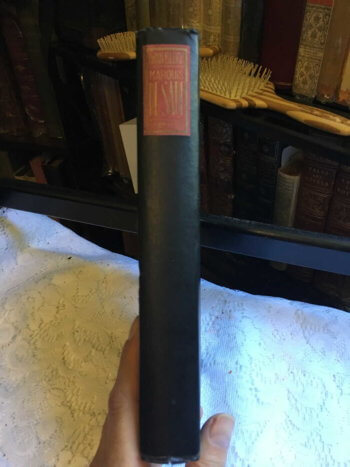
 Marquis de Sade | The Man and His Age | studies in the history of the culture and morals of the eighteenth century, Dr. Iwan Bloch, translated by James Bruce (Julian Press, 1931, [first american edition]) 6 .5"x9.5", 296pp, hardbound, black boards, red and gilt title on spine, some bumps and wear, good condition for age. Iwan Bloch (1872-1922), the “father of sexology”, was a Berlin dermatologist. His many socio-cultural studies in sexology earned him an international reputation as a medical historian. He also discovered de Sade’s manuscript of the “120 days of Sodom” in 1904, which had been believed to be lost. Together with Magnus Hirschfeld and Albert Eulenburg, Bloch proposed the new concept of a science of sexuality: Sexualwissenschaft or sexology. In 1906 he wrote Das Sexualleben unserer Zeit in seinen Beziehungen zur modernen Kultur [The Sexual Life of our Time in its Relations to Modern Civilization], a complete encyclopedia of the sexual sciences in their relation to modern civilization. According to Sigmund Freud, Bloch's studies were instrumental in the development of the anthropological approach to the theory of sexuality. For example, before Bloch, homosexuality was analyzed using a pathological approach.
Marquis de Sade | The Man and His Age | studies in the history of the culture and morals of the eighteenth century, Dr. Iwan Bloch, translated by James Bruce (Julian Press, 1931, [first american edition]) 6 .5"x9.5", 296pp, hardbound, black boards, red and gilt title on spine, some bumps and wear, good condition for age. Iwan Bloch (1872-1922), the “father of sexology”, was a Berlin dermatologist. His many socio-cultural studies in sexology earned him an international reputation as a medical historian. He also discovered de Sade’s manuscript of the “120 days of Sodom” in 1904, which had been believed to be lost. Together with Magnus Hirschfeld and Albert Eulenburg, Bloch proposed the new concept of a science of sexuality: Sexualwissenschaft or sexology. In 1906 he wrote Das Sexualleben unserer Zeit in seinen Beziehungen zur modernen Kultur [The Sexual Life of our Time in its Relations to Modern Civilization], a complete encyclopedia of the sexual sciences in their relation to modern civilization. According to Sigmund Freud, Bloch's studies were instrumental in the development of the anthropological approach to the theory of sexuality. For example, before Bloch, homosexuality was analyzed using a pathological approach. -
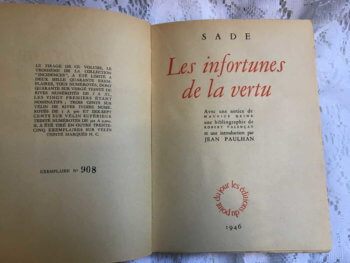
 Les infortunes de la vertu, Marquis de Sade, introduction by Jean Paulhan (les editions du point du jour, 1946, "incidences" collection, #908/2000) 5.75" x 7.75", xlii+242pp, softcover "french wraps", good unread condition, many pages remain uncut. This edition appears to represent the original version of Justine that Sade wrote while imprisoned at the Bastille in 1787 (see below). The story is about Justine from age 12 to 26 and recounts all of her attempts to be virtuous no matter what life throws at her. She is constantly presented with sexual lessons hidden under a virtuous mask. She seeks refuge in a monastery but is forced to become a sex slave of the monks. After she helps a gentleman who is robbed in a field, he takes her back to his chateau on the pretext to have her help care for his wife. He confines her in a cave where she is subjected to more punishment. When she goes to a judge to beg for mercy in her case as an arsonist, she then finds herself openly humiliated in court, unable to defend herself. The moral(especially when juxtaposed with the "companion story", Juliette) seems to be that one should not resist a bit of vice if it is for the common good. The more Justine tries to resist temptation and be virtuous the further she was plunged into a life of vice and torture, while Juliette (her sister) submitted to a brief period of debauchery and vice and eventually lived a comfortable, happy existence. The Marquis de Sade wrote the first version of Justine (Les infortunes de la vertu, "The Misfortunes of Virtue") while imprisoned at the Bastille in 1787. In 1791 an expanded and more explicit version became Sade's first published work. In 1797, an even more detailed version was published along with a story of Juliette (Justine's sister) that comprised of 10 volumes and nearly 4000 pages. This final version, "La Nouvelle Justine", departed from the first-person narrative of the previous two versions, and included around 100 engravings. Most editions are taken from that 1797 Holland edition. Napoleon Bonaparte ordered the arrest of the anonymous author of Justine and Juliette, and as a result Sade was incarcerated for the last 13 years of his life. Napoleon called the work "the most abominable book ever engendered by the most depraved imagination". English titles: Justine, or the Misfortune(s) of Virtue; The Misfortunes of Virtue; Justine, or Good Conduct Well Chastised; Justine or Good Conduct Will Be Chastised
Les infortunes de la vertu, Marquis de Sade, introduction by Jean Paulhan (les editions du point du jour, 1946, "incidences" collection, #908/2000) 5.75" x 7.75", xlii+242pp, softcover "french wraps", good unread condition, many pages remain uncut. This edition appears to represent the original version of Justine that Sade wrote while imprisoned at the Bastille in 1787 (see below). The story is about Justine from age 12 to 26 and recounts all of her attempts to be virtuous no matter what life throws at her. She is constantly presented with sexual lessons hidden under a virtuous mask. She seeks refuge in a monastery but is forced to become a sex slave of the monks. After she helps a gentleman who is robbed in a field, he takes her back to his chateau on the pretext to have her help care for his wife. He confines her in a cave where she is subjected to more punishment. When she goes to a judge to beg for mercy in her case as an arsonist, she then finds herself openly humiliated in court, unable to defend herself. The moral(especially when juxtaposed with the "companion story", Juliette) seems to be that one should not resist a bit of vice if it is for the common good. The more Justine tries to resist temptation and be virtuous the further she was plunged into a life of vice and torture, while Juliette (her sister) submitted to a brief period of debauchery and vice and eventually lived a comfortable, happy existence. The Marquis de Sade wrote the first version of Justine (Les infortunes de la vertu, "The Misfortunes of Virtue") while imprisoned at the Bastille in 1787. In 1791 an expanded and more explicit version became Sade's first published work. In 1797, an even more detailed version was published along with a story of Juliette (Justine's sister) that comprised of 10 volumes and nearly 4000 pages. This final version, "La Nouvelle Justine", departed from the first-person narrative of the previous two versions, and included around 100 engravings. Most editions are taken from that 1797 Holland edition. Napoleon Bonaparte ordered the arrest of the anonymous author of Justine and Juliette, and as a result Sade was incarcerated for the last 13 years of his life. Napoleon called the work "the most abominable book ever engendered by the most depraved imagination". English titles: Justine, or the Misfortune(s) of Virtue; The Misfortunes of Virtue; Justine, or Good Conduct Well Chastised; Justine or Good Conduct Will Be Chastised -
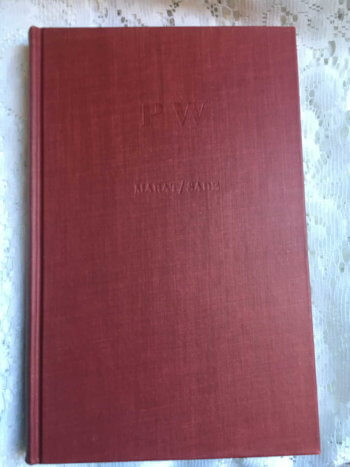
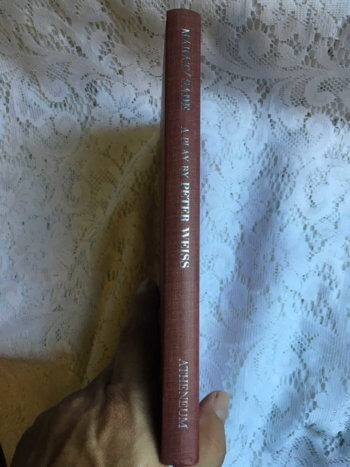 The Persecution and Assassination of Jean-Paul Marat as Performed by the Inmates of the Asylum of Charenton under the Direction of the Marquis de Sade, Peter Weiss, English version Geoffrey Skelton, verse adaptation Adrian Mitchell, introduction Peter Brook (Atheneum, New York, 1965, stated first american edition) 5.5"x8.5", x+117pp, hardbound, red boards, silver titles on spine, blind stamped title on cover, top-edge inked, near mint condition This is a 1963 play by Peter Weiss originally published in German under the title Die Verfolgung und Ermordung Jean Paul Marats, dargestellt durch die Schauspielgruppe des Hospizes zu Charenton unter Anleitung des Herrn de Sade, usually shortened to Marat/Sade. This is the first American version, published in 1965. A "play within a play", Merats/Sade incorporates dramatic elements characteristic of both Artaud and Brecht. It is a depiction of class struggle and human suffering that asks whether true revolution comes from changing society or changing oneself. Peter Ulrich Weiss (1916-1982) was a German writer, painter, graphic artist, and experimental filmmaker of adopted Swedish nationality. He earned his reputation in the post-war German literary world as the proponent of an avant-garde, meticulously descriptive writing, as an exponent of autobiographical prose, and also as a politically engaged dramatist. He gained international success with Marat/Sade, the American production of which was awarded a Tony Award and its subsequent film adaptation directed by Peter Brook. His "Auschwitz Oratorium," The Investigation, served to broaden the debates over the so-called "Aufarbeitung der Vergangenheit" (or formerly) "Vergangenheitsbewältigung" or "politics of history." Weiss' magnum opus was The Aesthetics of Resistance, called the "most important German-language work of the 70s and 80s.
The Persecution and Assassination of Jean-Paul Marat as Performed by the Inmates of the Asylum of Charenton under the Direction of the Marquis de Sade, Peter Weiss, English version Geoffrey Skelton, verse adaptation Adrian Mitchell, introduction Peter Brook (Atheneum, New York, 1965, stated first american edition) 5.5"x8.5", x+117pp, hardbound, red boards, silver titles on spine, blind stamped title on cover, top-edge inked, near mint condition This is a 1963 play by Peter Weiss originally published in German under the title Die Verfolgung und Ermordung Jean Paul Marats, dargestellt durch die Schauspielgruppe des Hospizes zu Charenton unter Anleitung des Herrn de Sade, usually shortened to Marat/Sade. This is the first American version, published in 1965. A "play within a play", Merats/Sade incorporates dramatic elements characteristic of both Artaud and Brecht. It is a depiction of class struggle and human suffering that asks whether true revolution comes from changing society or changing oneself. Peter Ulrich Weiss (1916-1982) was a German writer, painter, graphic artist, and experimental filmmaker of adopted Swedish nationality. He earned his reputation in the post-war German literary world as the proponent of an avant-garde, meticulously descriptive writing, as an exponent of autobiographical prose, and also as a politically engaged dramatist. He gained international success with Marat/Sade, the American production of which was awarded a Tony Award and its subsequent film adaptation directed by Peter Brook. His "Auschwitz Oratorium," The Investigation, served to broaden the debates over the so-called "Aufarbeitung der Vergangenheit" (or formerly) "Vergangenheitsbewältigung" or "politics of history." Weiss' magnum opus was The Aesthetics of Resistance, called the "most important German-language work of the 70s and 80s. -

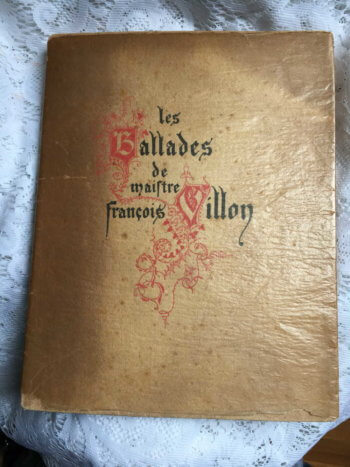 Les Ballades de Maistre Francois Villon, Francois Villon, illus. Chéri Hérouard, caligraphy ["escrites"] by Raymond de Rigné (chez Cres., Paris, 1919, #188/550 signed by Hérouard) 11.75" X 9.25", 169pp, original french wraps with glassine cover, 31 full page drawings by Hérouard plus 31 small vignette type illustrations. Beautifully printed on heavy deckle edged paper. good condition, all original, minor rubbing, slight foxing on outer pages, inner pages clean, rips in glassine cover at top and bottom of spine. François Villon (c. 1431_1464) was a French poet. Most of what is known about Villon has been gathered from legal records and gleaned from his own writings. He was a thief, killer, barroom brawler, and vagabond. He is perhaps best known for his Testaments and his Ballades. He was the most famous realist poet of the Middle Ages. Chéri Hérouard (1881 - 1961) was a French illustrator who was most famously known for his forty-five-year work for French society magazine, La Vie Parisienne. Under the pseudonym of Herric, he also created erotic and sadomasochistic illustrations for various books including the Kama Sutra.
Les Ballades de Maistre Francois Villon, Francois Villon, illus. Chéri Hérouard, caligraphy ["escrites"] by Raymond de Rigné (chez Cres., Paris, 1919, #188/550 signed by Hérouard) 11.75" X 9.25", 169pp, original french wraps with glassine cover, 31 full page drawings by Hérouard plus 31 small vignette type illustrations. Beautifully printed on heavy deckle edged paper. good condition, all original, minor rubbing, slight foxing on outer pages, inner pages clean, rips in glassine cover at top and bottom of spine. François Villon (c. 1431_1464) was a French poet. Most of what is known about Villon has been gathered from legal records and gleaned from his own writings. He was a thief, killer, barroom brawler, and vagabond. He is perhaps best known for his Testaments and his Ballades. He was the most famous realist poet of the Middle Ages. Chéri Hérouard (1881 - 1961) was a French illustrator who was most famously known for his forty-five-year work for French society magazine, La Vie Parisienne. Under the pseudonym of Herric, he also created erotic and sadomasochistic illustrations for various books including the Kama Sutra. -
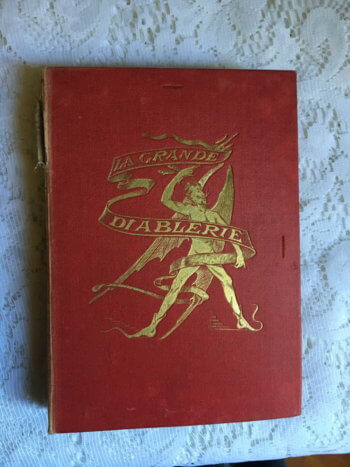
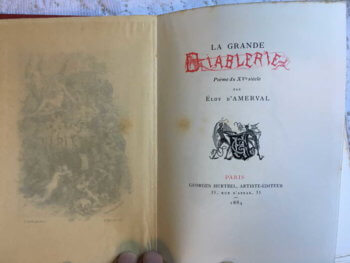 La Grande Diablerie, poem du XVe siècles, by Éloy d'Amerval (George Hurtrel, Artiste-Édueur, Paris, 1884, #152/1000 hand signed by publisher) 5" x 6.75", 216pp, in original published state, french wraps with loose hardcover/case, red with gilt decoration, frontispiece and 3 full page engravings by Paul Avril protected by tissue guard, images throughout, good minus condition, spine cover is sunned, binding is loose and splitting in places Eloy d'Amerval (fl. 1455 – 1508) was a French composer, singer, choirmaster, and poet of the Renaissance. He spent most of his life in the Loire Valley of France. From his poetic works, the long poem Le livre de la deablerie, it can be inferred that he knew most of the famous composers of the time, even though his own musical works never approached theirs in renown. This poem, considered invaluable to music historians, recounts a dialogue between Satan and Lucifer, in which their nefarious plotting of future evil deeds is interrupted periodically by the author, who among other accounts of earthly and divine virtue, records useful information on contemporary musical practice. In addition to listing musical instruments, he lists who he considers to be the great composers of the time: they are residents of Paradise in his poem, even though several were still alive in 1508, the date of its composition. Édouard-Henri Avril (1849-1928) used the pseudonym “Paul Avril” for his erotic work. He was a French painter and commercial artist. His career saw collaboration with influential people like Octave Uzanne, Henry Spencer Ashbee and Friedrich Karl Forberg. He is one of the most celebrated erotic artists of his age. Avril was a soldier before starting his career in art. He was awarded with the Legion of Honour for his actions in the Franco-Prussian War.
La Grande Diablerie, poem du XVe siècles, by Éloy d'Amerval (George Hurtrel, Artiste-Édueur, Paris, 1884, #152/1000 hand signed by publisher) 5" x 6.75", 216pp, in original published state, french wraps with loose hardcover/case, red with gilt decoration, frontispiece and 3 full page engravings by Paul Avril protected by tissue guard, images throughout, good minus condition, spine cover is sunned, binding is loose and splitting in places Eloy d'Amerval (fl. 1455 – 1508) was a French composer, singer, choirmaster, and poet of the Renaissance. He spent most of his life in the Loire Valley of France. From his poetic works, the long poem Le livre de la deablerie, it can be inferred that he knew most of the famous composers of the time, even though his own musical works never approached theirs in renown. This poem, considered invaluable to music historians, recounts a dialogue between Satan and Lucifer, in which their nefarious plotting of future evil deeds is interrupted periodically by the author, who among other accounts of earthly and divine virtue, records useful information on contemporary musical practice. In addition to listing musical instruments, he lists who he considers to be the great composers of the time: they are residents of Paradise in his poem, even though several were still alive in 1508, the date of its composition. Édouard-Henri Avril (1849-1928) used the pseudonym “Paul Avril” for his erotic work. He was a French painter and commercial artist. His career saw collaboration with influential people like Octave Uzanne, Henry Spencer Ashbee and Friedrich Karl Forberg. He is one of the most celebrated erotic artists of his age. Avril was a soldier before starting his career in art. He was awarded with the Legion of Honour for his actions in the Franco-Prussian War. -
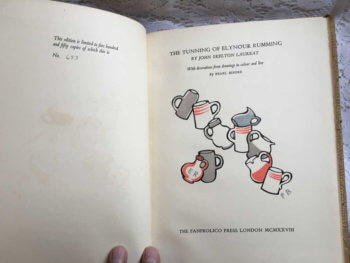
 The Tunning of Elynour Rumming, by John Skelton Laureat, "with decorations from the drawings in colour and line by Pearl Binder" (Fanfrolico Press, London, 1928, #433/550 hand written limitation) 7.75" x 11.25", 47pp, hardbound, coarse fiber on boards (burlap?), hand laid paper, artfully done, in good plus condition for age and for the unconventional binding materials The Tunning of Elynour Rummyng is a long raucous poem written by English poet John Skelton(1463-1529). The poem was first printed by Richard Lant sometime in 1550 and presents what many would consider disgusting images of rural drinking and drunkenness. For all its gritty description, Skelton has modeled the poem on Church liturgy of that time. The verse form itself closely resembles a liturgical chant. Elynour is a character in the poem who runs a "public house," or pub. Many pubs in England had the look of a home both inside and out. In the early 16th century, the male or female owner of the pub not only sold the ale, but also probably brewed it. Elynour easily acquires all her ingredients for quite acceptable ale from the local farmers in southern England where her pub was apparently located. Nevertheless, the kind of hard language which is found in the poem, is not uncommon as "bar talk." Today, much like in the 16th century, many brands of beer have been derisively referred to as "pig piss" perhaps because of beer's pale yellowish color and its bland and very slightly bitter taste. The poet says that chickens roost over Elynour's fermentation tank and drop their excrement into the froth. The yeast will sometimes form a white cap on the fermenting beer. Alcoholic beverages are also often associated with sex and indeed will sometimes reduce the inhibitions of men and women. However, Elynour advises her female customers that the ale will make them more desirable to their husbands, in part because she has the chicken excrement in the ale. Fanfrolico Press, Australia’s first ‘private press’ in the arts-and-craft tradition, was founded by Jack Lindsay, P. R. Stephensen and John Kirtley, originally in North Sydney in 1923. The press specialized in printings artful, limited editions of classics and forgotten works that were suited to the extravagant style of artist like his father, artist, sculptor and author Norman Lindsay who illustrated many of their books. Fanfrolico was scornful of modernism and with its florid style determinedly backward-looking. They did surprisingly well, despite the lack of business expertise of their young, ambitious "bohemian" owners, eking out a living despite the risky move to London in 1926 and upheavals in ownership that saw the departure in 1927 of Kirtley, and then Stephenson in 1929. Sometime in 1930 they published their last book.
The Tunning of Elynour Rumming, by John Skelton Laureat, "with decorations from the drawings in colour and line by Pearl Binder" (Fanfrolico Press, London, 1928, #433/550 hand written limitation) 7.75" x 11.25", 47pp, hardbound, coarse fiber on boards (burlap?), hand laid paper, artfully done, in good plus condition for age and for the unconventional binding materials The Tunning of Elynour Rummyng is a long raucous poem written by English poet John Skelton(1463-1529). The poem was first printed by Richard Lant sometime in 1550 and presents what many would consider disgusting images of rural drinking and drunkenness. For all its gritty description, Skelton has modeled the poem on Church liturgy of that time. The verse form itself closely resembles a liturgical chant. Elynour is a character in the poem who runs a "public house," or pub. Many pubs in England had the look of a home both inside and out. In the early 16th century, the male or female owner of the pub not only sold the ale, but also probably brewed it. Elynour easily acquires all her ingredients for quite acceptable ale from the local farmers in southern England where her pub was apparently located. Nevertheless, the kind of hard language which is found in the poem, is not uncommon as "bar talk." Today, much like in the 16th century, many brands of beer have been derisively referred to as "pig piss" perhaps because of beer's pale yellowish color and its bland and very slightly bitter taste. The poet says that chickens roost over Elynour's fermentation tank and drop their excrement into the froth. The yeast will sometimes form a white cap on the fermenting beer. Alcoholic beverages are also often associated with sex and indeed will sometimes reduce the inhibitions of men and women. However, Elynour advises her female customers that the ale will make them more desirable to their husbands, in part because she has the chicken excrement in the ale. Fanfrolico Press, Australia’s first ‘private press’ in the arts-and-craft tradition, was founded by Jack Lindsay, P. R. Stephensen and John Kirtley, originally in North Sydney in 1923. The press specialized in printings artful, limited editions of classics and forgotten works that were suited to the extravagant style of artist like his father, artist, sculptor and author Norman Lindsay who illustrated many of their books. Fanfrolico was scornful of modernism and with its florid style determinedly backward-looking. They did surprisingly well, despite the lack of business expertise of their young, ambitious "bohemian" owners, eking out a living despite the risky move to London in 1926 and upheavals in ownership that saw the departure in 1927 of Kirtley, and then Stephenson in 1929. Sometime in 1930 they published their last book. -
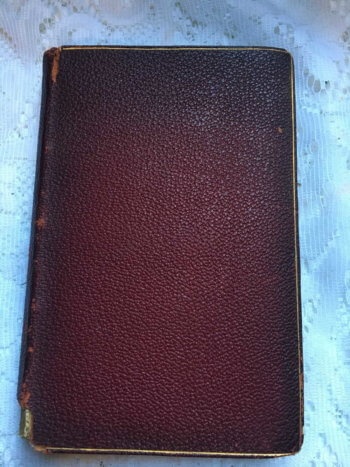
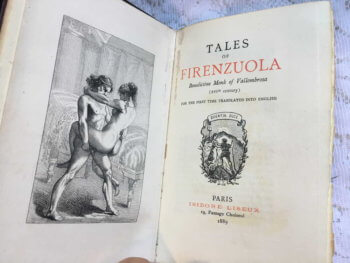 Tales of Firenzuola | Benedictine Monk of Vallombrosa | (XVIth century) | first time translated into English, Agnolo Firenzuola (Isidore Liseux, Paris, 1889) 4.25" x 6.5", xix+180pp., full soft red morroco binding with gilt borders, decorated end papers, deckled edges, hand laid paper, unique frontispiece illustration tipped in, not seen in any other copies online, title page in red and black, good minus condition, corners bumped top of spine is torn, .5" inch of bottom of spine is missing This copy is a rare all-leather first-edition. I have not seen any other copies with this frontispiece and know nothing about it's origin. Originally written in Italian titled Ragionamenti Amorosi (Amorous Reasons), the Tales were written in 1523-24 on the Boccaccian premise of a group of young ladies and gentlemen gathered in a Tuscan villa to tell each other, in turn, stories dealing with love, fortune, fate, virtue, etc. The stories themselves, in their variety and immediacy, offer an insight into sixteenth-century Italian society and its concerns. Agnolo Firenzuola (1493–1545), an Italian poet and littérateur, was born in Florence, September 28th, 1493. He received his name from the town of Firenzaola among the Apennines, where his family originated. Agnolo spent his youth in Siena and Perugia, studying law and living a "life of pleasure". For a short time he practiced law in Rome, but abandoned it to become a monk at Vallombrosa. After the death of Clement VII. he went to Florence, and finally settled at Prato as abbot of San Salvatore. Some authorities have disputed that he ever became an abbot, for the records of his dissolute career do not accord with a monastic life. But whether abbot or gentleman of leisure, a severe illness took him to Prato, where he spent many happy years. He died there or at Rome, about 1545. Firenzuola wrote satirical and burlesque poems; two comedies, ‘I Lucidi’ and ‘La Trinuzia’; ‘Discorsi degli Animali,’ imitations of Oriental fables of animals; ‘Ragionamenti Amorosi,’ novelettes or tales after the fashion of Boccaccio; ‘Dialogo della Bellezza delle Donne,’ and other works. He also wrote a few love poems and ballads, one of the most admired of which is ‘Orozza Pastorella.’ Isidore Liseux (1835-1894) was a French bibliophile and publisher of erotica and curiosa. His publications were mostly rare texts of 16th to 18th century authors, hard to find and little known books which were usually translated and annotated by his friend and associate Alcide Bonneau or by Liseux himself. Liseux and Bonneau, both ex-priests, knew each other since seminary. His books were published in small numbers, on high quality paper, and with excellent typography. His usual printers were Claude Motteroz, Antoine Bécus, and later Charles Unsinger. Liseux's books were published openly as the climate was more permissive in Paris at the time. His books were so well regarded that pirates of his books and even unrelated books bearing his imprint with a false date were published clandestinely into the 20th century. French poet, Guillaume Apollinaire wrote: "The publications of Liseux are more and more sought after because they are correct, beautiful and rare." (Le flaneur des deux rives, 1918).
Tales of Firenzuola | Benedictine Monk of Vallombrosa | (XVIth century) | first time translated into English, Agnolo Firenzuola (Isidore Liseux, Paris, 1889) 4.25" x 6.5", xix+180pp., full soft red morroco binding with gilt borders, decorated end papers, deckled edges, hand laid paper, unique frontispiece illustration tipped in, not seen in any other copies online, title page in red and black, good minus condition, corners bumped top of spine is torn, .5" inch of bottom of spine is missing This copy is a rare all-leather first-edition. I have not seen any other copies with this frontispiece and know nothing about it's origin. Originally written in Italian titled Ragionamenti Amorosi (Amorous Reasons), the Tales were written in 1523-24 on the Boccaccian premise of a group of young ladies and gentlemen gathered in a Tuscan villa to tell each other, in turn, stories dealing with love, fortune, fate, virtue, etc. The stories themselves, in their variety and immediacy, offer an insight into sixteenth-century Italian society and its concerns. Agnolo Firenzuola (1493–1545), an Italian poet and littérateur, was born in Florence, September 28th, 1493. He received his name from the town of Firenzaola among the Apennines, where his family originated. Agnolo spent his youth in Siena and Perugia, studying law and living a "life of pleasure". For a short time he practiced law in Rome, but abandoned it to become a monk at Vallombrosa. After the death of Clement VII. he went to Florence, and finally settled at Prato as abbot of San Salvatore. Some authorities have disputed that he ever became an abbot, for the records of his dissolute career do not accord with a monastic life. But whether abbot or gentleman of leisure, a severe illness took him to Prato, where he spent many happy years. He died there or at Rome, about 1545. Firenzuola wrote satirical and burlesque poems; two comedies, ‘I Lucidi’ and ‘La Trinuzia’; ‘Discorsi degli Animali,’ imitations of Oriental fables of animals; ‘Ragionamenti Amorosi,’ novelettes or tales after the fashion of Boccaccio; ‘Dialogo della Bellezza delle Donne,’ and other works. He also wrote a few love poems and ballads, one of the most admired of which is ‘Orozza Pastorella.’ Isidore Liseux (1835-1894) was a French bibliophile and publisher of erotica and curiosa. His publications were mostly rare texts of 16th to 18th century authors, hard to find and little known books which were usually translated and annotated by his friend and associate Alcide Bonneau or by Liseux himself. Liseux and Bonneau, both ex-priests, knew each other since seminary. His books were published in small numbers, on high quality paper, and with excellent typography. His usual printers were Claude Motteroz, Antoine Bécus, and later Charles Unsinger. Liseux's books were published openly as the climate was more permissive in Paris at the time. His books were so well regarded that pirates of his books and even unrelated books bearing his imprint with a false date were published clandestinely into the 20th century. French poet, Guillaume Apollinaire wrote: "The publications of Liseux are more and more sought after because they are correct, beautiful and rare." (Le flaneur des deux rives, 1918). -
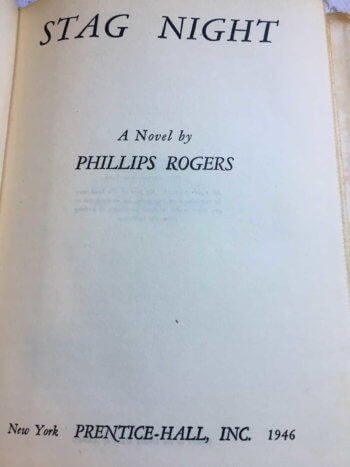
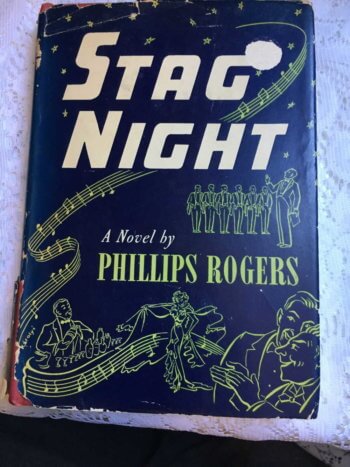 Stag Night, by Phillips Rogers (Prentice-Hall, Inc, New York, 1946) 6" x 8.5", 230pp, hardcover with DJ, red boards with black titles on spine, DJ in fair shape, yellowing throughout, binding good [from Dust Jacket] "Stag Night is a revealing novel about an affair that the men reminisce over for a year and their wives wonder about--the annual Gentleman's Dinner at a country club." "The entire action of Stag Night takes place in one evening at a country club. It begins with the arrival of a tightly girdled whisky-loving Mrs. Riordan ("Fatima") who has for many years given her Dance of the Seven Veils at the Gentleman's Dinner. It ends with tactful and wise Heinz, the head waiter, bidding the police goodnight. In between is depicted the frenzied activity of the chef and the dour bartender, the ribald behavior of some of the stags, the bewilderment of an innocent young refugee dancer, and the mounting excitement as the moment nears for the showing of lewd movies. Tragedy in a grotesque form stalks the evening and at the climax the diners receive the surprise of their lives — and we don't mean the cops in the hall."
Stag Night, by Phillips Rogers (Prentice-Hall, Inc, New York, 1946) 6" x 8.5", 230pp, hardcover with DJ, red boards with black titles on spine, DJ in fair shape, yellowing throughout, binding good [from Dust Jacket] "Stag Night is a revealing novel about an affair that the men reminisce over for a year and their wives wonder about--the annual Gentleman's Dinner at a country club." "The entire action of Stag Night takes place in one evening at a country club. It begins with the arrival of a tightly girdled whisky-loving Mrs. Riordan ("Fatima") who has for many years given her Dance of the Seven Veils at the Gentleman's Dinner. It ends with tactful and wise Heinz, the head waiter, bidding the police goodnight. In between is depicted the frenzied activity of the chef and the dour bartender, the ribald behavior of some of the stags, the bewilderment of an innocent young refugee dancer, and the mounting excitement as the moment nears for the showing of lewd movies. Tragedy in a grotesque form stalks the evening and at the climax the diners receive the surprise of their lives — and we don't mean the cops in the hall." -
Out of stock
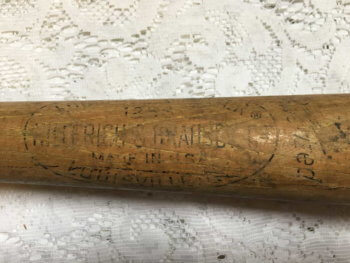
 Louisville Slugger Softball Bat 33", 2.5" wide "Louisville Slugger | 1255 | Hillerich & Bradsby | Made in USA | Louisville, KY | Powerized"
Louisville Slugger Softball Bat 33", 2.5" wide "Louisville Slugger | 1255 | Hillerich & Bradsby | Made in USA | Louisville, KY | Powerized" -
Out of stock
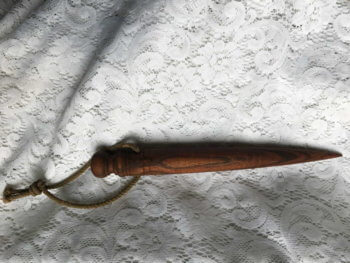
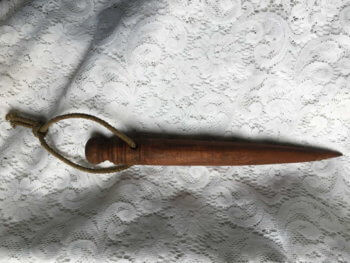 Fid from India 13.5" long, 1.5" at widest part, unknown wood, with original rope A fid is a conical tool made of wood or bone. It is used to work with rope and canvas in seamanship. A fid is used to hold open knots and holes in canvas or to open the "lays", or strands of rope, for splicing.
Fid from India 13.5" long, 1.5" at widest part, unknown wood, with original rope A fid is a conical tool made of wood or bone. It is used to work with rope and canvas in seamanship. A fid is used to hold open knots and holes in canvas or to open the "lays", or strands of rope, for splicing. -
Out of stock
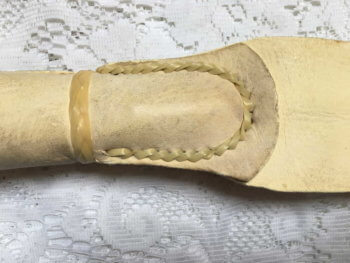
 White Rebenque 23" long, flap is 12", white leather with rawhide/sinew stitching and decorations, slight yellowing from age. Beautiful hand-made white leather rebenque 50+ years old. It has decorative rawhide work on the handle and on the strap, using two colors of rawhide. The handle is textured by wrapping a wet cord around it, leaving an imprint on the leather. Rebenque is the name in Brazilian Portuguese for a type of whip used by gauchos in South America. Especially in Argentina, it is the traditional riding, fighting, and punishing whip of the gaucho. It consists of a rawhide wrapped wooden handle with a thong made of a leather strap a little longer than the handle. The wide strap made the rebenque an instrument less severe on the horse than the European riding crop. As the gaucho was never far from the horse, the rebenque was always on him. When not in use, he made a knot with the strap and held the rebenque lazily by the wrist strap with the middle fingers of his hand, or hung it from the handle of his facón knife (as he used the large knife almost horizontally at his back, held by the belt or waistband, the handle protruded from his right side). The rebenque was used also for fighting, as a weapon by itself, when the fight did not merit a knife, or with the strap rolled on his left hand and the handle hanging, as a secondary weapon to the knife in his right hand. Of course, it was also used for domestic punishments, and for quasi-judicial chastisement. A couple of lashes with the rebenque on the bare legs were widely used as a punishment for children, even in the urban areas.
White Rebenque 23" long, flap is 12", white leather with rawhide/sinew stitching and decorations, slight yellowing from age. Beautiful hand-made white leather rebenque 50+ years old. It has decorative rawhide work on the handle and on the strap, using two colors of rawhide. The handle is textured by wrapping a wet cord around it, leaving an imprint on the leather. Rebenque is the name in Brazilian Portuguese for a type of whip used by gauchos in South America. Especially in Argentina, it is the traditional riding, fighting, and punishing whip of the gaucho. It consists of a rawhide wrapped wooden handle with a thong made of a leather strap a little longer than the handle. The wide strap made the rebenque an instrument less severe on the horse than the European riding crop. As the gaucho was never far from the horse, the rebenque was always on him. When not in use, he made a knot with the strap and held the rebenque lazily by the wrist strap with the middle fingers of his hand, or hung it from the handle of his facón knife (as he used the large knife almost horizontally at his back, held by the belt or waistband, the handle protruded from his right side). The rebenque was used also for fighting, as a weapon by itself, when the fight did not merit a knife, or with the strap rolled on his left hand and the handle hanging, as a secondary weapon to the knife in his right hand. Of course, it was also used for domestic punishments, and for quasi-judicial chastisement. A couple of lashes with the rebenque on the bare legs were widely used as a punishment for children, even in the urban areas. -
 The Love Books of Ovid, A Completely Unexpurgated and Newly Translated Edition by Charles D. Young | Together with the Elegie, Translated by Christopher Marlowe | Illustrated by Alexander King "This book, designed by T. Spencer Hutson, was printed at the Alexander Hamilton Press, in March 1930. Illustrations are reproduced by the Knudson process. This edition consists of Two Thousand numbered copies printed on Strathmore MELDON deckle edge laid paper. This copy is No. 361" (Privately Published for Subscribers, Art Studio Books, Inc., 1930, #361/2000) 6.25"x9.5", iii+302pp, 3/4 black cloth over marbled boards, gilt text and decorations on spine, gilt borders on covers, marbled pastdowns, top edge gilt, other edges deckled, frontispiece and 16 full-page illustrations with descriptive tissue guards, other illustrations and titles in orange within text, near fine copy, slight rubbing at top and bottom of spine. This is a beautiful edition of 5 of his works, Ars Amatoria ("The Art of Love"), Remedia Amoris ("The Cure for Love"), Amores ("The Loves"), Medicamina Faciei ("dye on the face"), and his Elegies Publius Ovidius Naso (43 BC – AD 17/18), known as Ovid in the English-speaking world, was a Roman poet who lived during the reign of Augustus. He was a contemporary of the older Virgil and Horace, with whom he is often ranked as one of the three canonical poets of Latin literature. The Imperial scholar Quintilian considered him the last of the Latin love elegists. He enjoyed enormous popularity, but, in one of the mysteries of literary history, was sent by Augustus into exile in a remote province on the Black Sea, where he remained until his death. Ovid himself attributes his exile to carmen et error, "a poem and a mistake", but his discretion in discussing the causes has resulted in much speculation among scholars. The first major Roman poet to begin his career during the reign of Augustus, Ovid is today best known for the Metamorphoses, a 15-book continuous mythological narrative written in the meter of epic, and for works in elegiac couplets such as Ars Amatoria ("The Art of Love") and Fasti. His poetry was much imitated during Late Antiquity and the Middle Ages, and greatly influenced Western art and literature. The Metamorphoses remains one of the most important sources of classical mythology. Alexander King (1899–1965), born Alexander Koenig in Vienna, was a bestselling humorist, memoirist and media personality of the early television era, based in the United States. In his late fifties, after becoming a frequent guest on the a Tonight Show hosted by Jack Paar, King emerged as an incongruous presence in the realm of national celebrity: an aging, irascible raconteur, with elegant mannerisms and trademark bow-tie, who spoke frankly and disarmingly about his bohemian lifestyle, multiple marriages, and years-long struggle with drug addiction. His checkered past led TIME magazine to describe him as "an ex-illustrator, ex-cartoonist, ex-adman, ex-editor, ex-playwright, ex-dope addict. For a quarter-century he was an ex-painter, and by his own bizarre account qualifies as an ex-midwife. He is also an ex-husband to three wives and an ex-Viennese of sufficient age (60) to remember muttonchopped Emperor Franz Joseph. When doctors told him a few years ago that he might soon be an ex-patient (two strokes, serious kidney disease, peptic ulcer, high blood pressure), he sat down to tell gay stories of the life of all these earlier Kings."
The Love Books of Ovid, A Completely Unexpurgated and Newly Translated Edition by Charles D. Young | Together with the Elegie, Translated by Christopher Marlowe | Illustrated by Alexander King "This book, designed by T. Spencer Hutson, was printed at the Alexander Hamilton Press, in March 1930. Illustrations are reproduced by the Knudson process. This edition consists of Two Thousand numbered copies printed on Strathmore MELDON deckle edge laid paper. This copy is No. 361" (Privately Published for Subscribers, Art Studio Books, Inc., 1930, #361/2000) 6.25"x9.5", iii+302pp, 3/4 black cloth over marbled boards, gilt text and decorations on spine, gilt borders on covers, marbled pastdowns, top edge gilt, other edges deckled, frontispiece and 16 full-page illustrations with descriptive tissue guards, other illustrations and titles in orange within text, near fine copy, slight rubbing at top and bottom of spine. This is a beautiful edition of 5 of his works, Ars Amatoria ("The Art of Love"), Remedia Amoris ("The Cure for Love"), Amores ("The Loves"), Medicamina Faciei ("dye on the face"), and his Elegies Publius Ovidius Naso (43 BC – AD 17/18), known as Ovid in the English-speaking world, was a Roman poet who lived during the reign of Augustus. He was a contemporary of the older Virgil and Horace, with whom he is often ranked as one of the three canonical poets of Latin literature. The Imperial scholar Quintilian considered him the last of the Latin love elegists. He enjoyed enormous popularity, but, in one of the mysteries of literary history, was sent by Augustus into exile in a remote province on the Black Sea, where he remained until his death. Ovid himself attributes his exile to carmen et error, "a poem and a mistake", but his discretion in discussing the causes has resulted in much speculation among scholars. The first major Roman poet to begin his career during the reign of Augustus, Ovid is today best known for the Metamorphoses, a 15-book continuous mythological narrative written in the meter of epic, and for works in elegiac couplets such as Ars Amatoria ("The Art of Love") and Fasti. His poetry was much imitated during Late Antiquity and the Middle Ages, and greatly influenced Western art and literature. The Metamorphoses remains one of the most important sources of classical mythology. Alexander King (1899–1965), born Alexander Koenig in Vienna, was a bestselling humorist, memoirist and media personality of the early television era, based in the United States. In his late fifties, after becoming a frequent guest on the a Tonight Show hosted by Jack Paar, King emerged as an incongruous presence in the realm of national celebrity: an aging, irascible raconteur, with elegant mannerisms and trademark bow-tie, who spoke frankly and disarmingly about his bohemian lifestyle, multiple marriages, and years-long struggle with drug addiction. His checkered past led TIME magazine to describe him as "an ex-illustrator, ex-cartoonist, ex-adman, ex-editor, ex-playwright, ex-dope addict. For a quarter-century he was an ex-painter, and by his own bizarre account qualifies as an ex-midwife. He is also an ex-husband to three wives and an ex-Viennese of sufficient age (60) to remember muttonchopped Emperor Franz Joseph. When doctors told him a few years ago that he might soon be an ex-patient (two strokes, serious kidney disease, peptic ulcer, high blood pressure), he sat down to tell gay stories of the life of all these earlier Kings." -
Out of stock
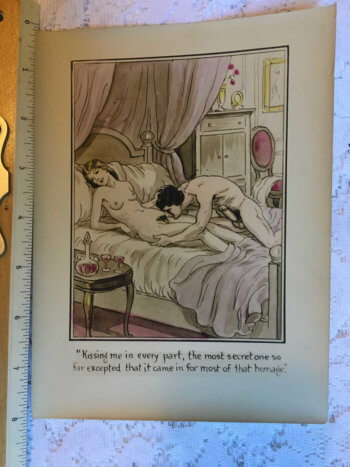
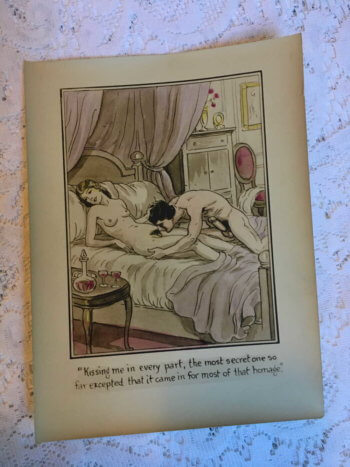 Fanny Hill print "Kissing me in every part, the most secret one so far excepted that it came in for most of that homage." 6 x 8", hand colored This print came from someone's private collection. The rest of the prints I have from this estate are also from various editions of Fanny Hill by John Cleland. I'm unsure of the edition but this seems to be a print from the 1920-30s and hand colored.
Fanny Hill print "Kissing me in every part, the most secret one so far excepted that it came in for most of that homage." 6 x 8", hand colored This print came from someone's private collection. The rest of the prints I have from this estate are also from various editions of Fanny Hill by John Cleland. I'm unsure of the edition but this seems to be a print from the 1920-30s and hand colored. -
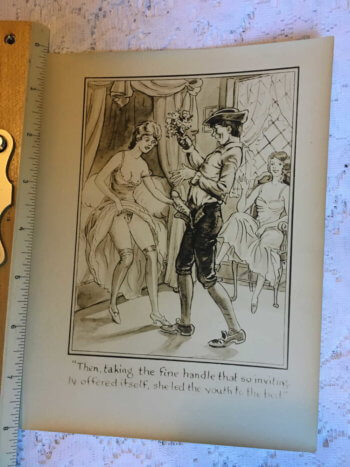
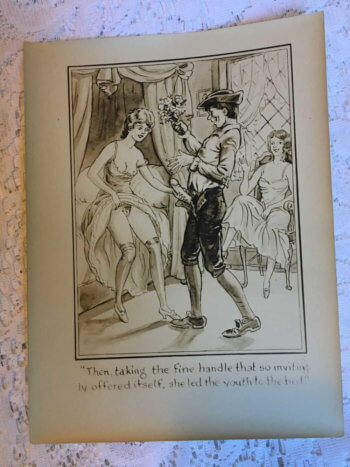 Fanny Hill print "Then, taking the fine handle that so invitingly offered itself, she led the youth to the bed." 6 x 8" This print came from someone's private collection. The rest of the prints I have from this estate are also from various editions of Fanny Hill by John Cleland. I'm unsure of the edition but this seems to be a print from the 1920-30s.
Fanny Hill print "Then, taking the fine handle that so invitingly offered itself, she led the youth to the bed." 6 x 8" This print came from someone's private collection. The rest of the prints I have from this estate are also from various editions of Fanny Hill by John Cleland. I'm unsure of the edition but this seems to be a print from the 1920-30s. -
Out of stock
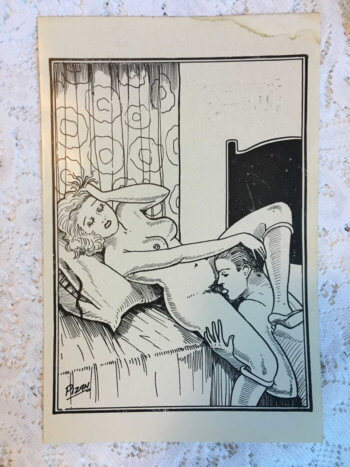
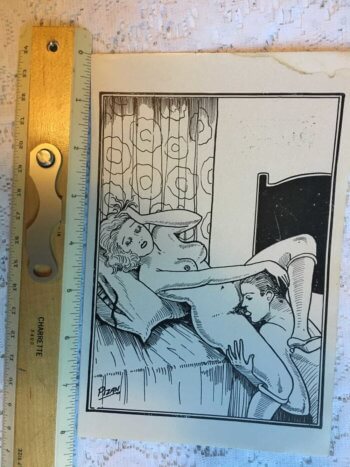 Fanny Hill print 5.5 x 8.25" This print came from someone's private collection. The rest of the prints I have from this estate are also from various editions of Fanny Hill by John Cleland. Print is by "PIZAN" and is possibly from a 20-30s edition printed clandestinely in NY.
Fanny Hill print 5.5 x 8.25" This print came from someone's private collection. The rest of the prints I have from this estate are also from various editions of Fanny Hill by John Cleland. Print is by "PIZAN" and is possibly from a 20-30s edition printed clandestinely in NY. -
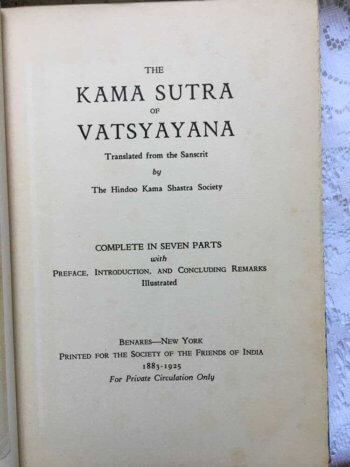
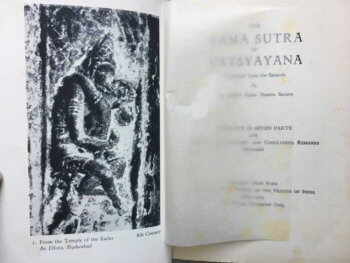 <strong>The Kama Sutra of Vatsyayana | Translated from the Sanscrit by The Hindoo Kama Shastra Society | Complete in seven parts with Preface, Introduction, and Concluding Remarks | Illustrated</strong>, by Vatsyayana (Printed for the Society of the Friends of India 1883-1925, Benares-New York, one of 800, unnumbered) <em>6"x9", xxi+175pp, hardbound, blue boards, hand laid paper, top-edge gilt, others deckled, 8 B/W half-tone reproductions of erotic Hindu stone-sculptures with tissue guards, soiling on boards, inner pages are clean, binding is good.</em> Attributed to ancient Indian philosopher Vatsyayana, the Kama Sutra is generally believed to have been composed between 400 and 200 B.C.E. Although a portion of the work consists of practical advice on sexual intercourse, the work is primarily prose consisting of 1250 verses distributed over 36 chapters structured into seven parts. This book lists those parts as: Part I. Index, and General Consideration of the Subject Part II. Of Sexual Union Part III. About the Acquisition of a Wife Part IV. About a Wife Part V. About the Wives of Other People Part VI. About Courtezans Part VII. On the Means of Attracting Others to Oneself
<strong>The Kama Sutra of Vatsyayana | Translated from the Sanscrit by The Hindoo Kama Shastra Society | Complete in seven parts with Preface, Introduction, and Concluding Remarks | Illustrated</strong>, by Vatsyayana (Printed for the Society of the Friends of India 1883-1925, Benares-New York, one of 800, unnumbered) <em>6"x9", xxi+175pp, hardbound, blue boards, hand laid paper, top-edge gilt, others deckled, 8 B/W half-tone reproductions of erotic Hindu stone-sculptures with tissue guards, soiling on boards, inner pages are clean, binding is good.</em> Attributed to ancient Indian philosopher Vatsyayana, the Kama Sutra is generally believed to have been composed between 400 and 200 B.C.E. Although a portion of the work consists of practical advice on sexual intercourse, the work is primarily prose consisting of 1250 verses distributed over 36 chapters structured into seven parts. This book lists those parts as: Part I. Index, and General Consideration of the Subject Part II. Of Sexual Union Part III. About the Acquisition of a Wife Part IV. About a Wife Part V. About the Wives of Other People Part VI. About Courtezans Part VII. On the Means of Attracting Others to Oneself -
Out of stock
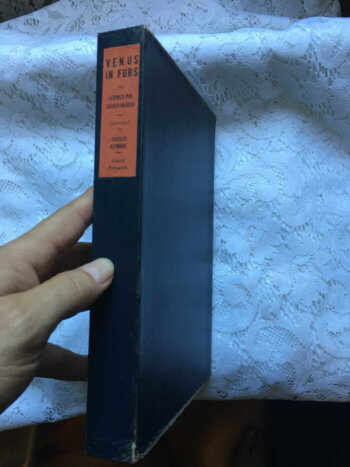
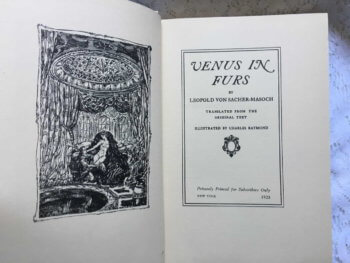 Venus in Furs, Leopold von Sacher-Masoch, illustrated by Charles Raymond [trans. Fernanda Savage] (Privately Printed For Subscribers Only, New York, 1928) 218pp, hardbound with slipcase, blue faux sued boards, white spine with gilt titles, deckled edges, dark blue slipcase with orange title on spine, very good condition for age, slipcase bumps and rubbing repair to bottom of spine, book clean, pages in unread condition with some remaining uncut Venus in Furs (German: Venus im Pelz) is a novella by Leopold Ritter von Sacher-Masoch (1836-1895), an Austrian writer and journalist. It is now his best known work and because of its themes the term masochism is derived from his name, coined by the Austrian psychiatrist, Krafft-Ebing. The novel was to be part of an epic series that Sacher-Masoch envisioned called Legacy of Cain. Venus in Furs was part of Love, the first volume of the series. It was published in 1870. The novel draws themes, like female dominance and sadomasochism, and character inspiration heavily from Sacher-Masoch's own life. Wanda von Dunajew, the novel's central female character, was modelled after his mistress Baroness Fanny Pistor. In December 1869 the two signed a contract making him her slave for a period of 6 months. In 1873, after the publication of Venus in Furs, Sacher-Masoch married Aurora von Rümelin who he pressured to continue the lifestyle he wrote about in his book. After 10 years they divorced. Rümelin, using the pseudonym of the books title character, "Wanda von Dunajew", wrote Meine Lebensbeichte (My Life Confession) published in 1906. It detailed Sacher-Masoch's private life and her relationship with him. During his lifetime, Sacher-Masoch was well known as a man of letters, a utopian thinker who espoused socialist and humanist ideals in his fiction and non-fiction. Most of his works remain untranslated into English. Until recently, his novel Venus in Furs was his only book commonly available in English.
Venus in Furs, Leopold von Sacher-Masoch, illustrated by Charles Raymond [trans. Fernanda Savage] (Privately Printed For Subscribers Only, New York, 1928) 218pp, hardbound with slipcase, blue faux sued boards, white spine with gilt titles, deckled edges, dark blue slipcase with orange title on spine, very good condition for age, slipcase bumps and rubbing repair to bottom of spine, book clean, pages in unread condition with some remaining uncut Venus in Furs (German: Venus im Pelz) is a novella by Leopold Ritter von Sacher-Masoch (1836-1895), an Austrian writer and journalist. It is now his best known work and because of its themes the term masochism is derived from his name, coined by the Austrian psychiatrist, Krafft-Ebing. The novel was to be part of an epic series that Sacher-Masoch envisioned called Legacy of Cain. Venus in Furs was part of Love, the first volume of the series. It was published in 1870. The novel draws themes, like female dominance and sadomasochism, and character inspiration heavily from Sacher-Masoch's own life. Wanda von Dunajew, the novel's central female character, was modelled after his mistress Baroness Fanny Pistor. In December 1869 the two signed a contract making him her slave for a period of 6 months. In 1873, after the publication of Venus in Furs, Sacher-Masoch married Aurora von Rümelin who he pressured to continue the lifestyle he wrote about in his book. After 10 years they divorced. Rümelin, using the pseudonym of the books title character, "Wanda von Dunajew", wrote Meine Lebensbeichte (My Life Confession) published in 1906. It detailed Sacher-Masoch's private life and her relationship with him. During his lifetime, Sacher-Masoch was well known as a man of letters, a utopian thinker who espoused socialist and humanist ideals in his fiction and non-fiction. Most of his works remain untranslated into English. Until recently, his novel Venus in Furs was his only book commonly available in English. -
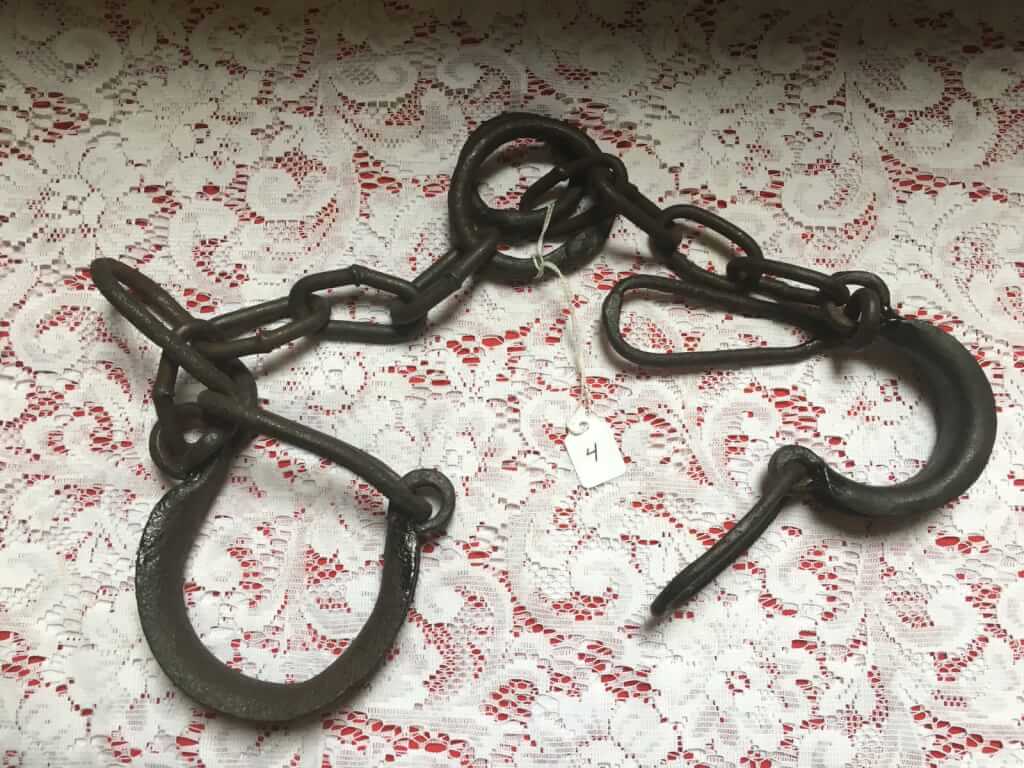
 (2 x 2") + (2 3/4 x 3 1/4") Shackles (matched pair ankle/wrist) Antique hand-forged iron shackles from a farm in Bulgaria. They have been cleaned up and seasoned much like you'd season your cast iron skillet (repeatedly coated with oil and baked). No key is needed as they lock using a puzzle design.
(2 x 2") + (2 3/4 x 3 1/4") Shackles (matched pair ankle/wrist) Antique hand-forged iron shackles from a farm in Bulgaria. They have been cleaned up and seasoned much like you'd season your cast iron skillet (repeatedly coated with oil and baked). No key is needed as they lock using a puzzle design.












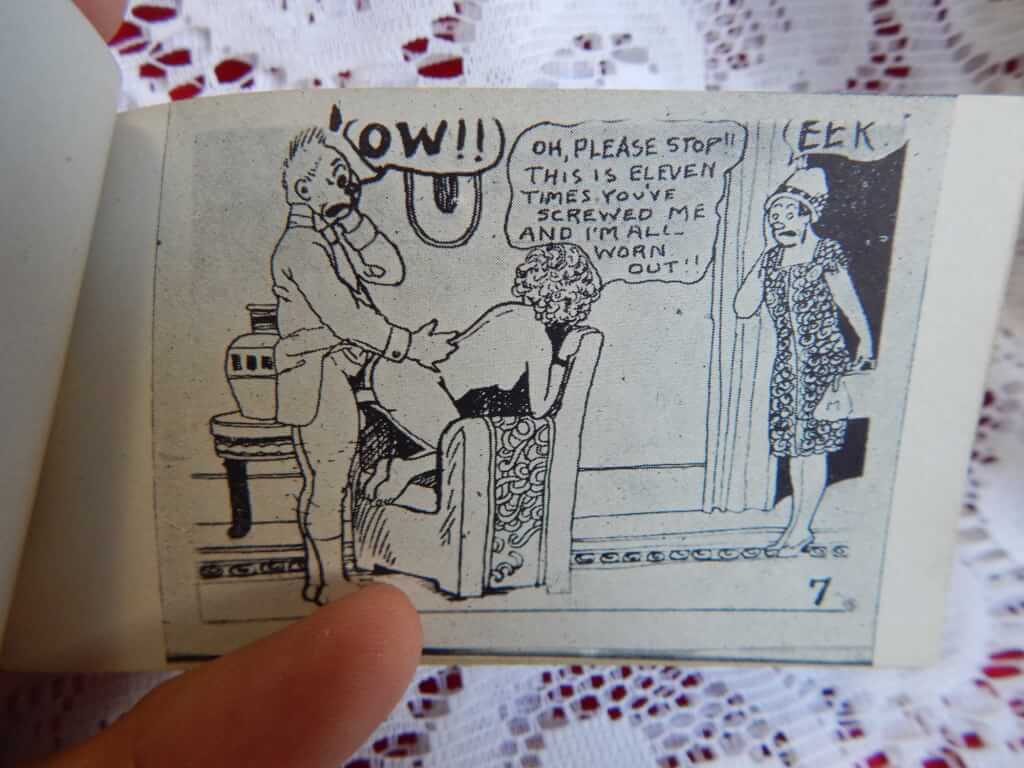
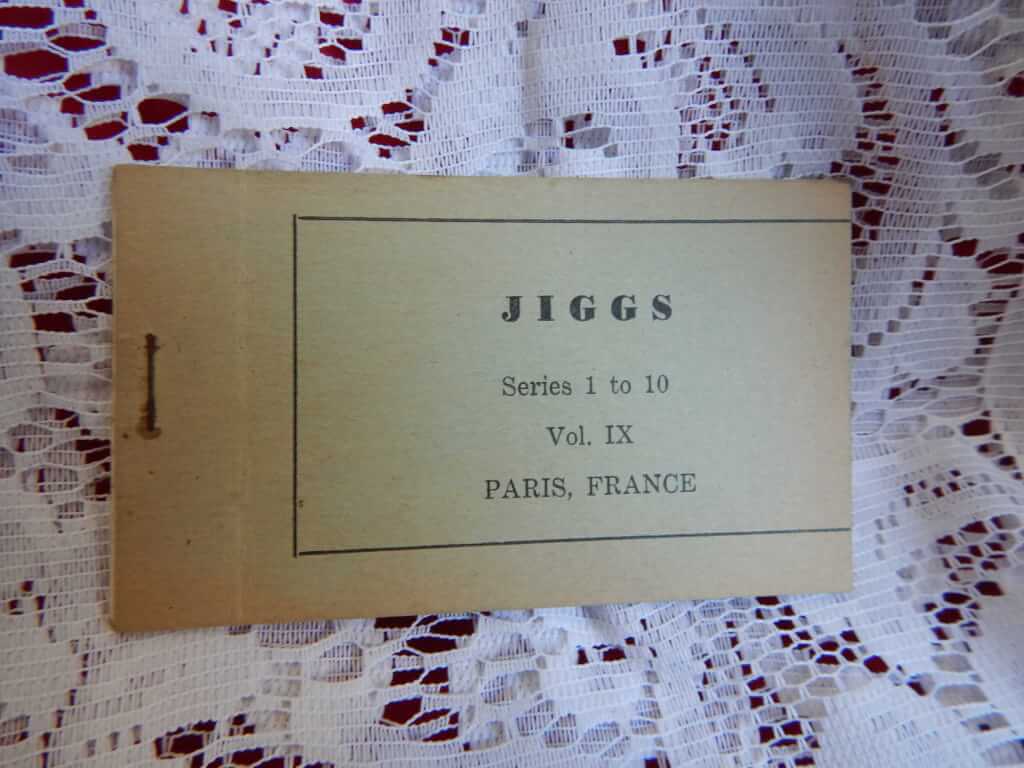
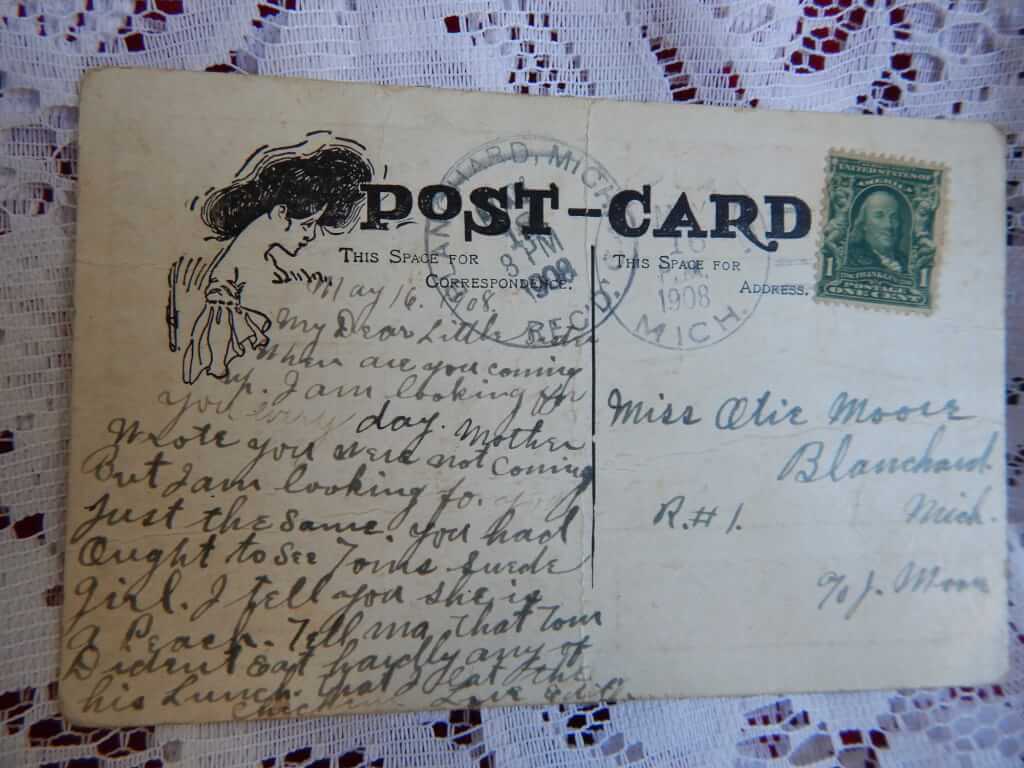
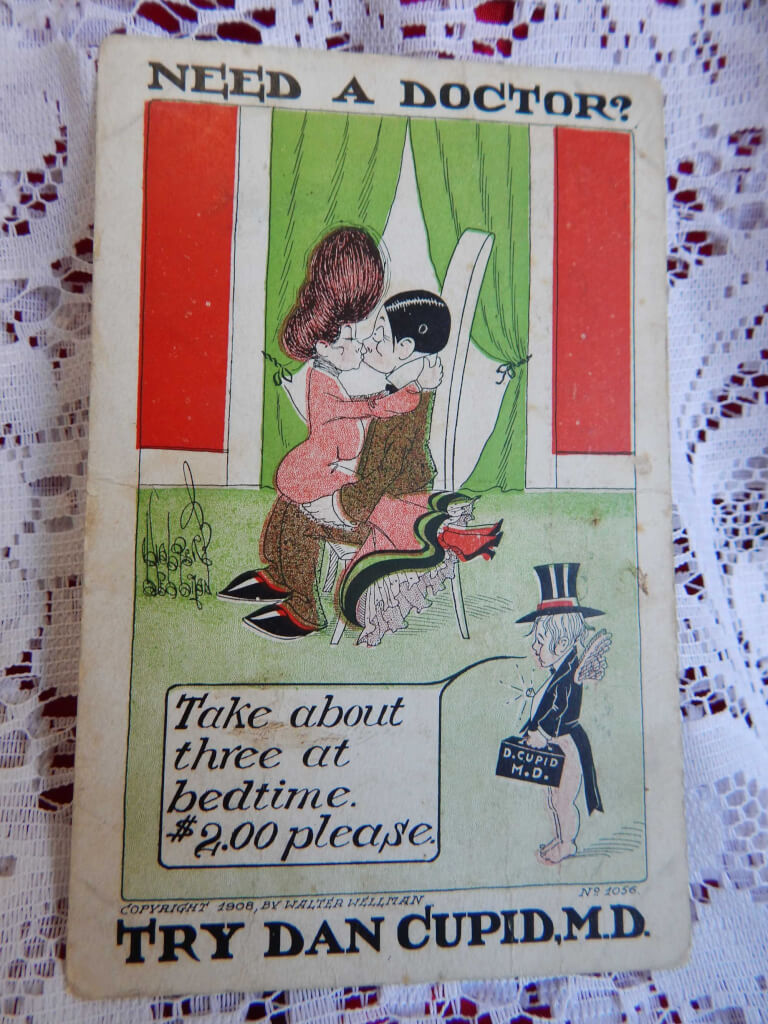
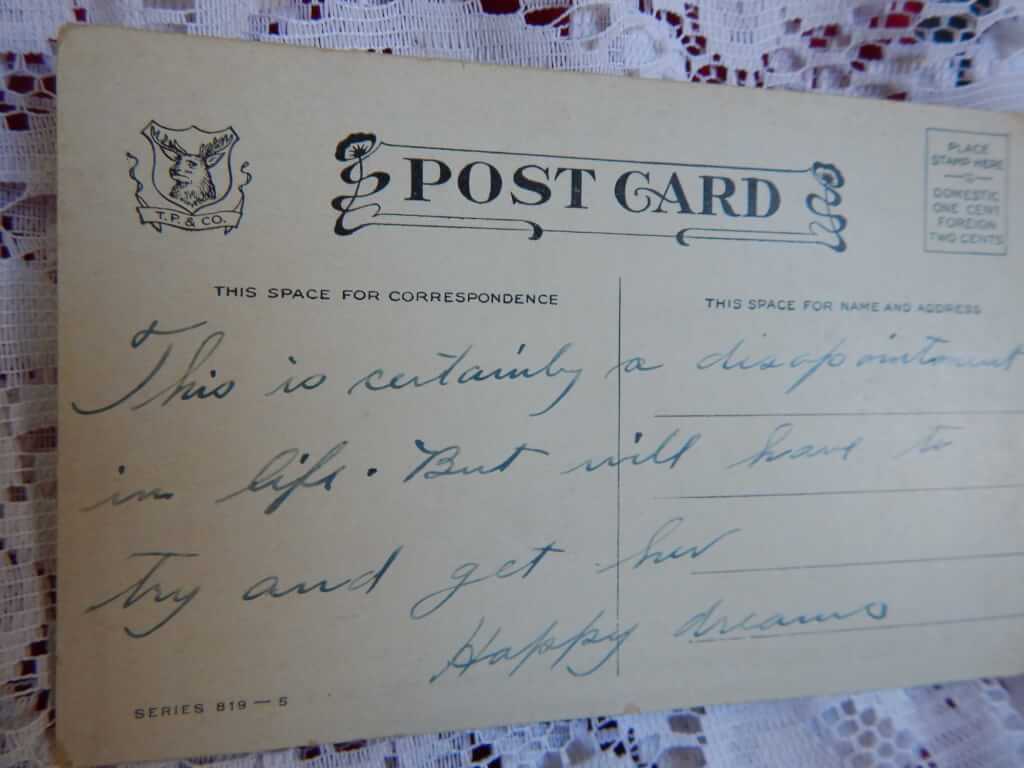
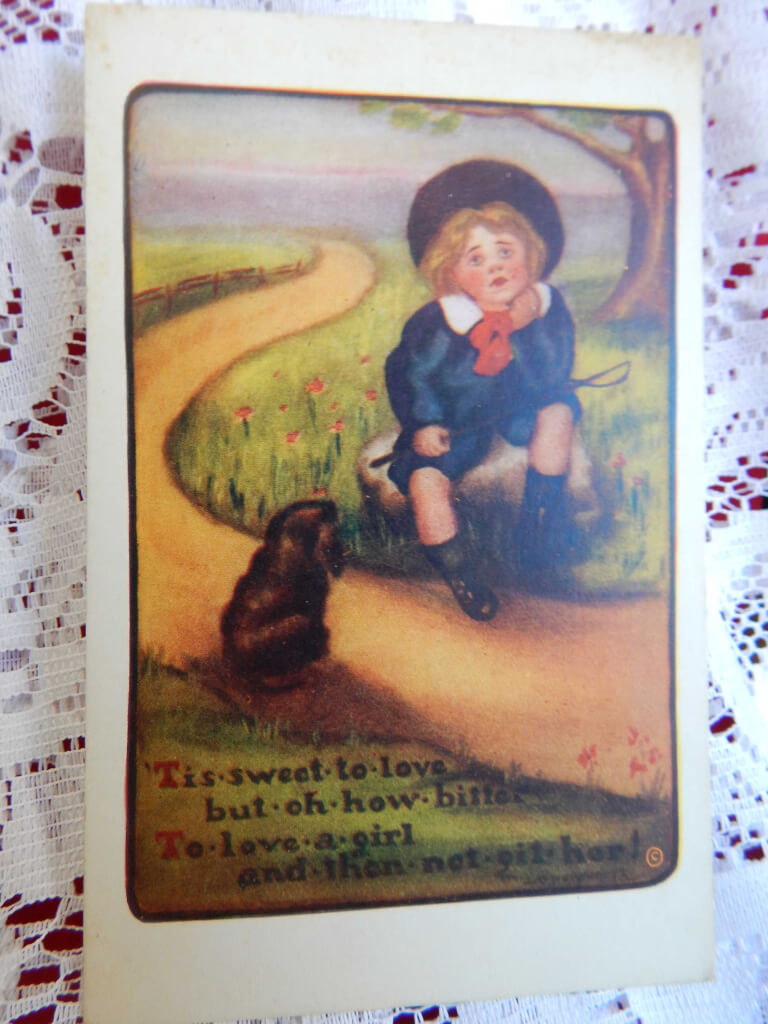


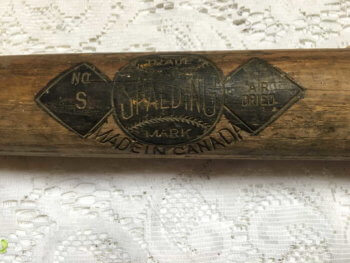

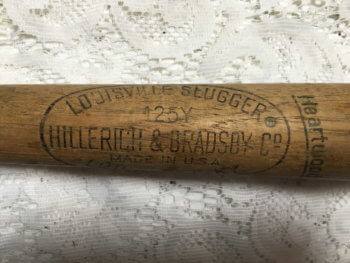

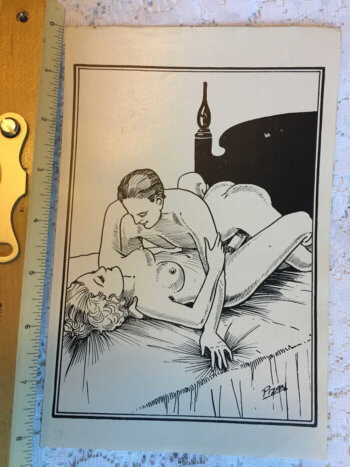

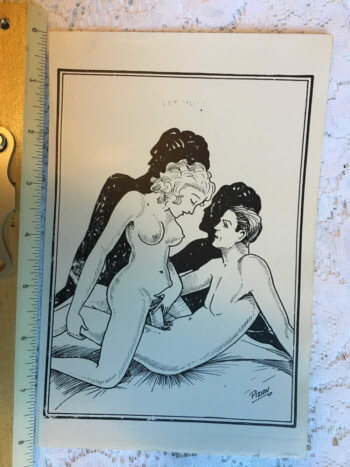

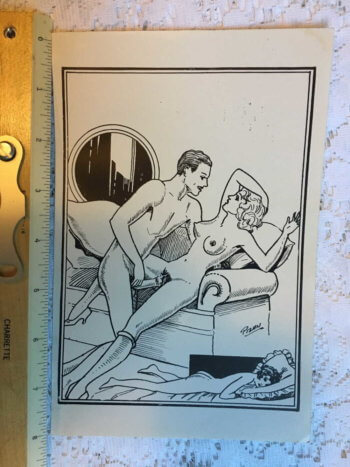
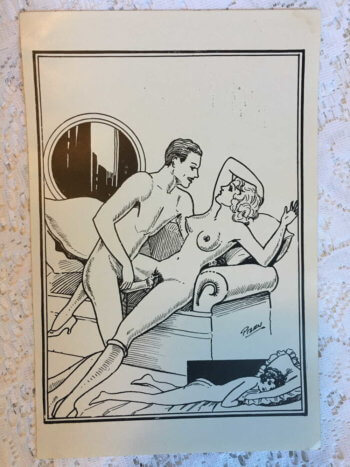
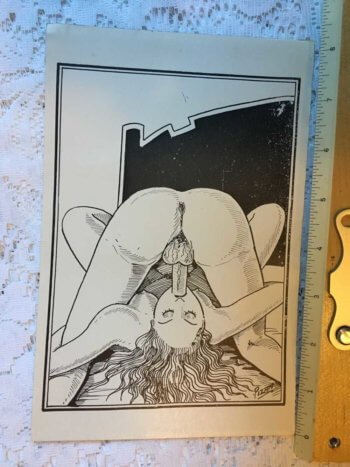
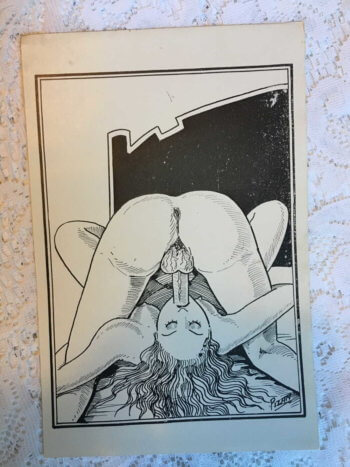


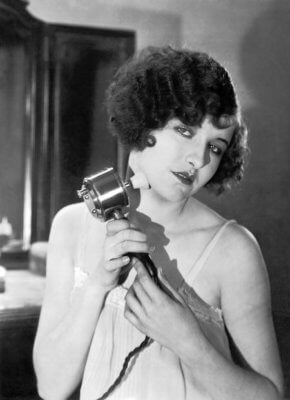 c. 1927 Actress Colleen Moore using a Star-Rite electric massage vibrator in Hollywood.
c. 1927 Actress Colleen Moore using a Star-Rite electric massage vibrator in Hollywood. 
